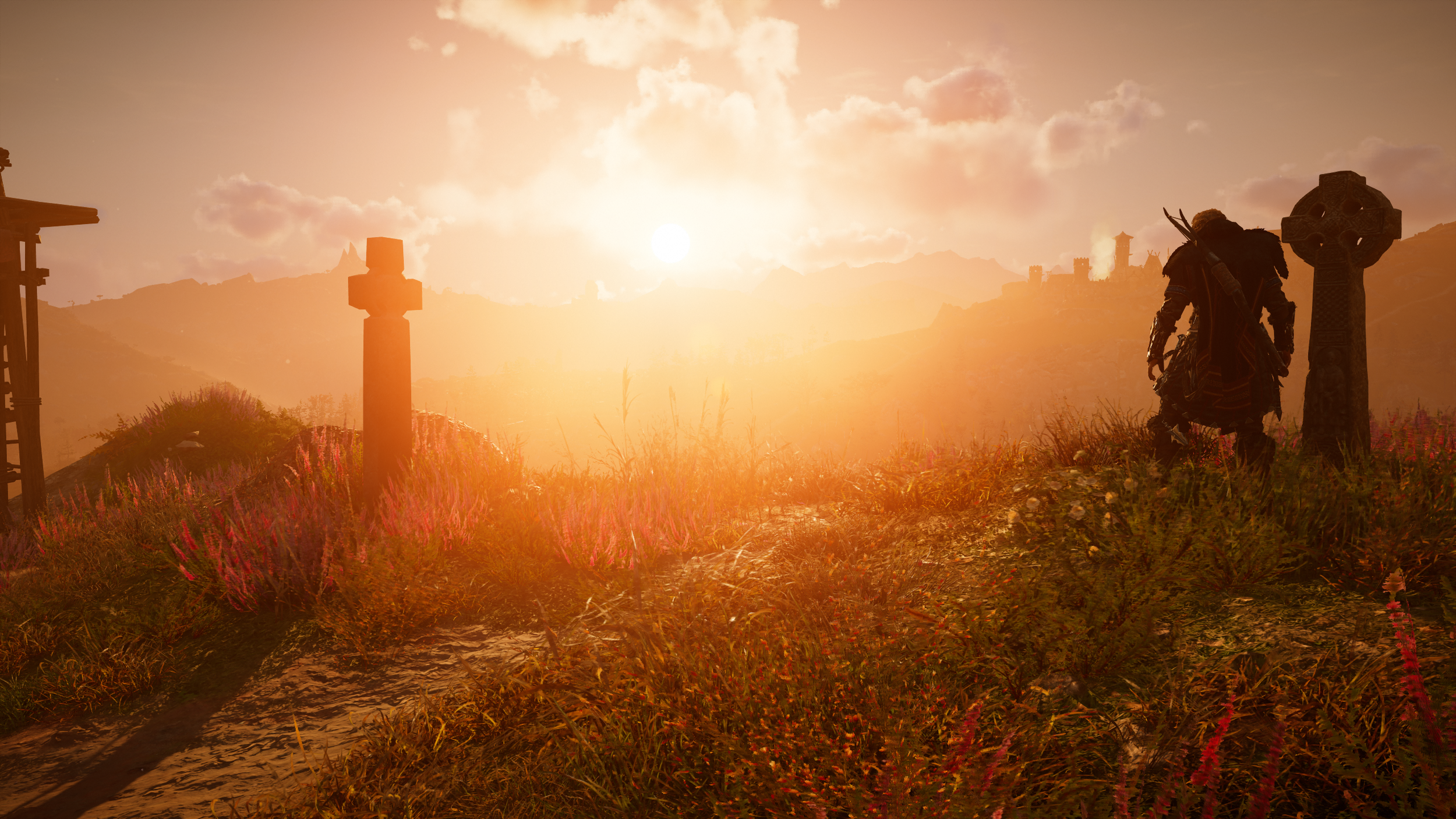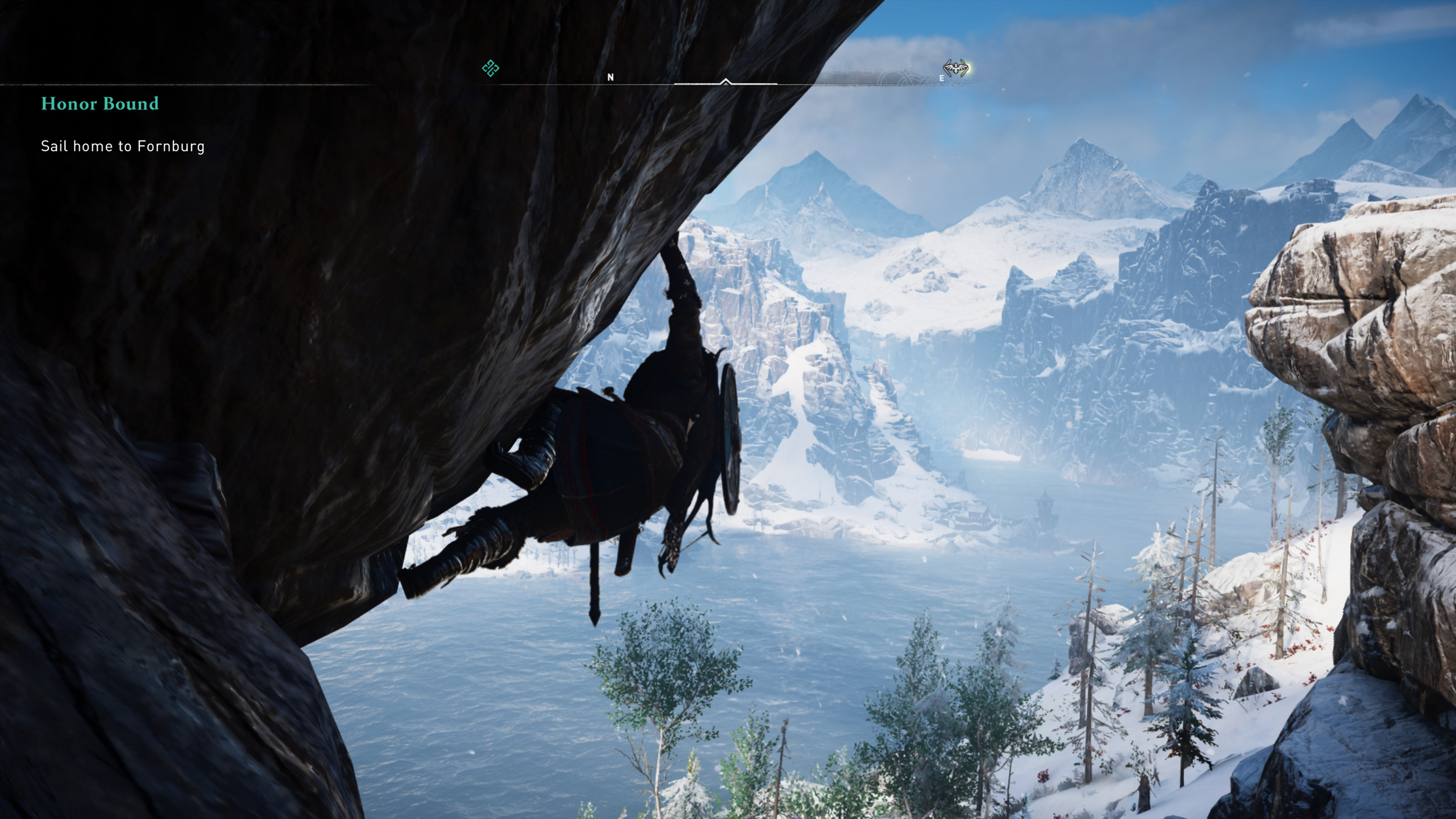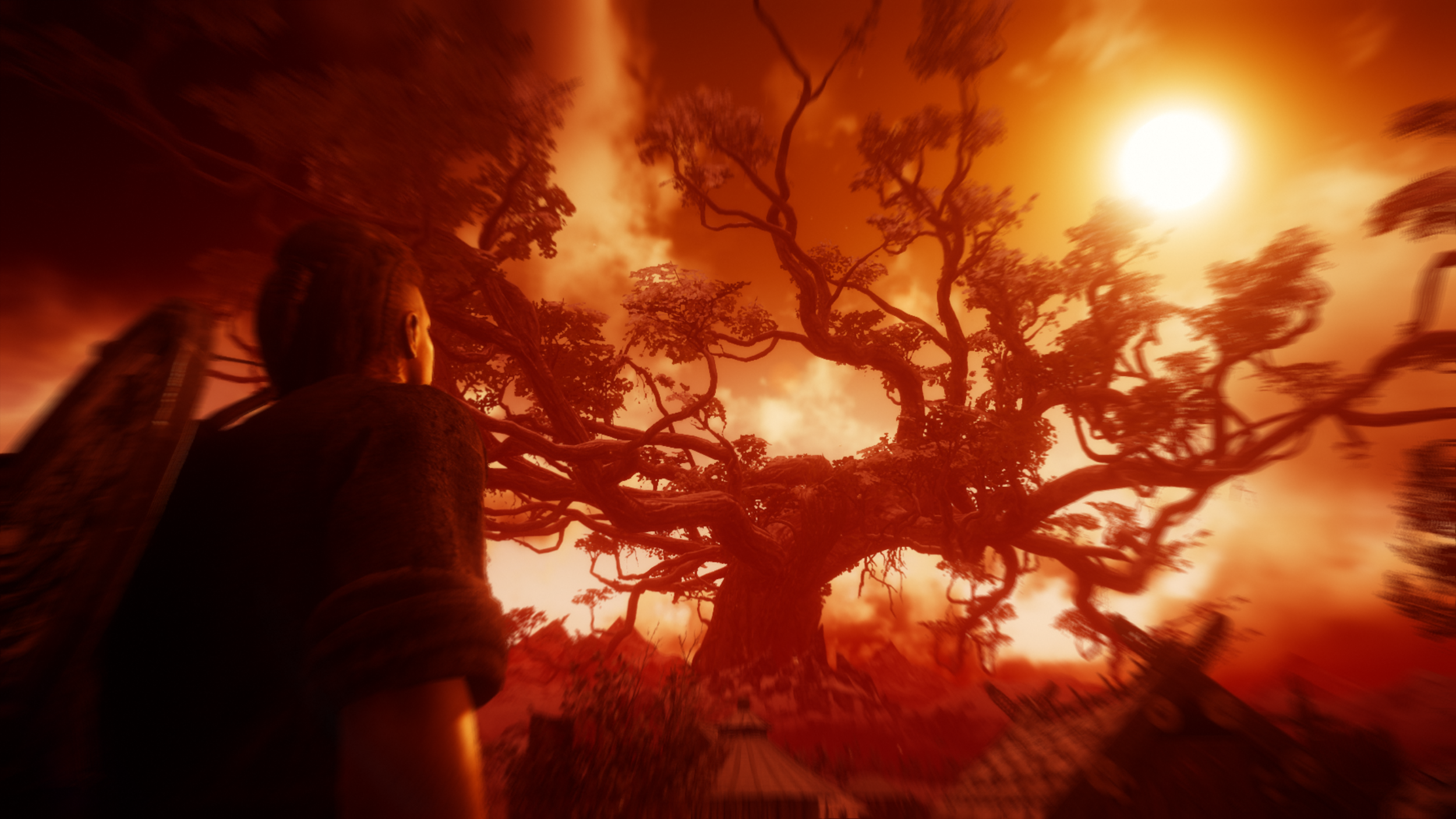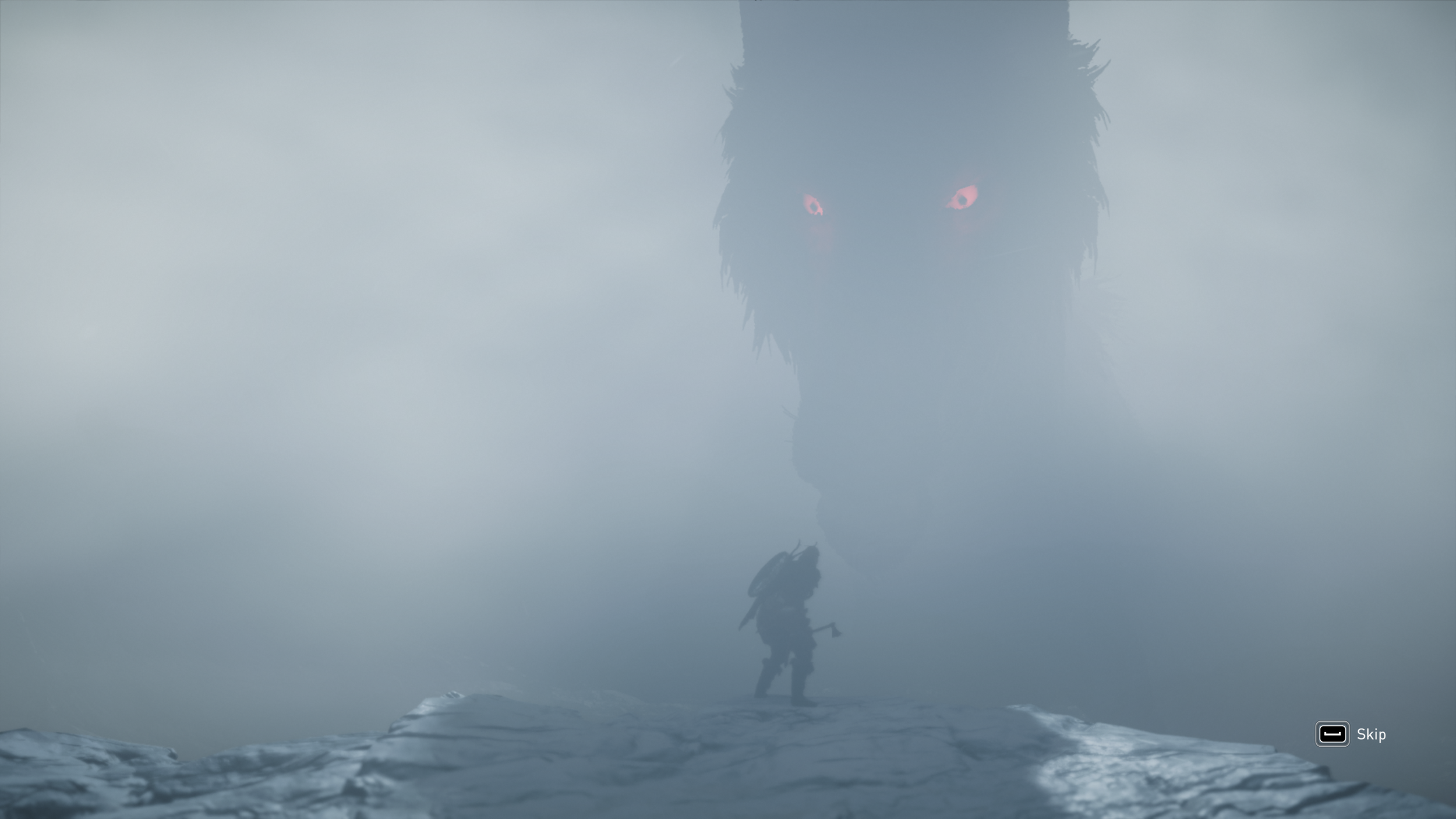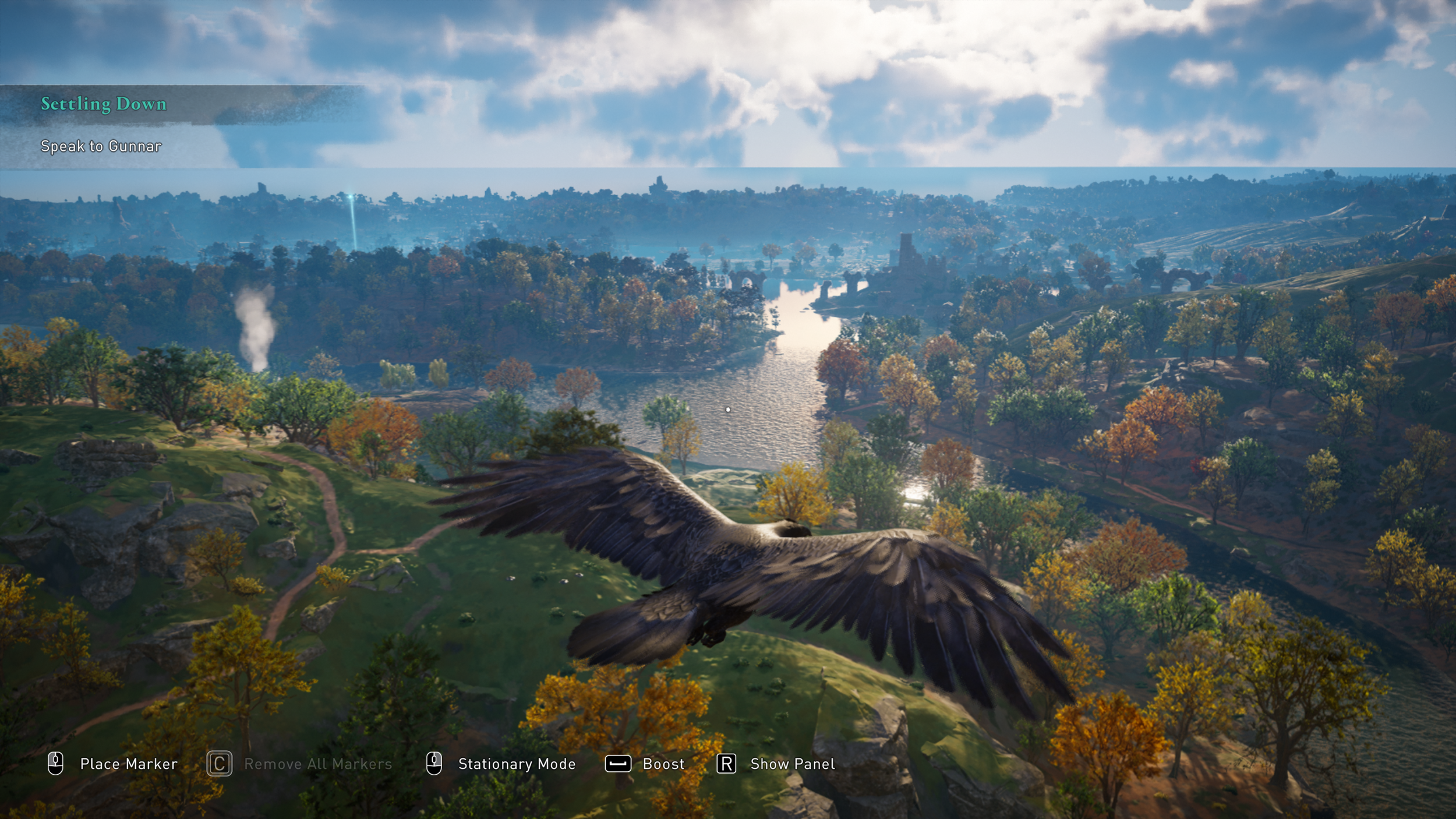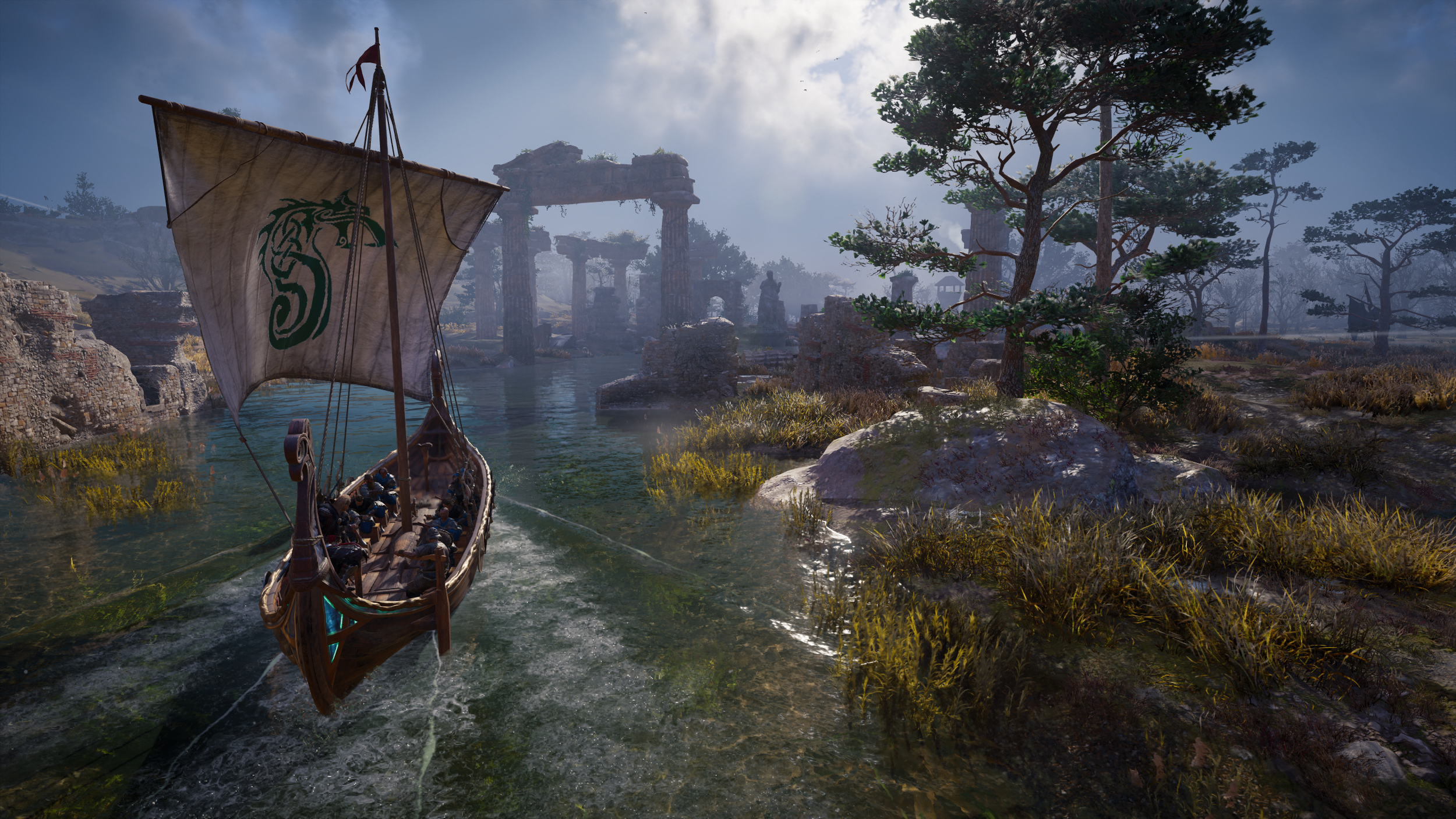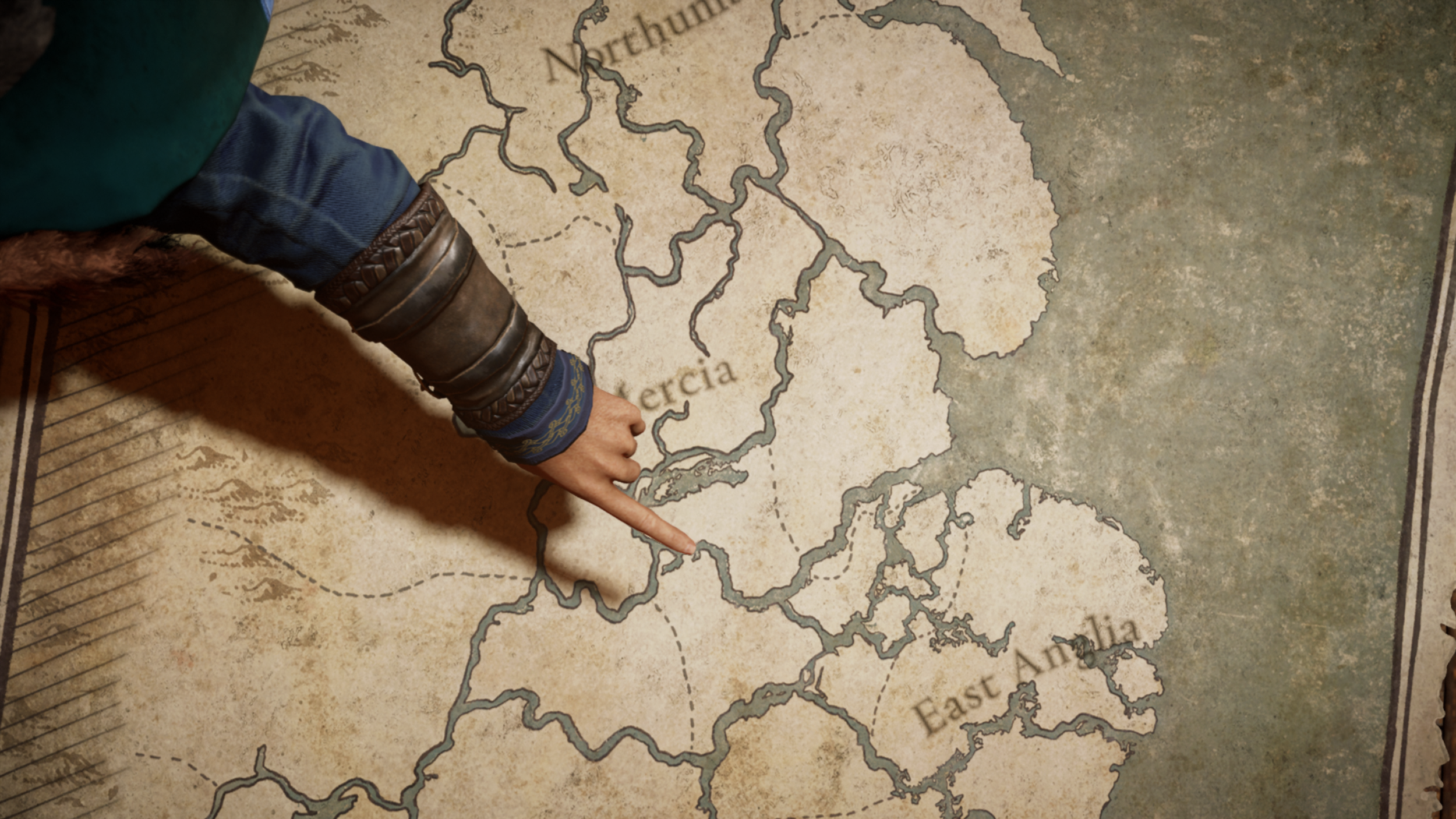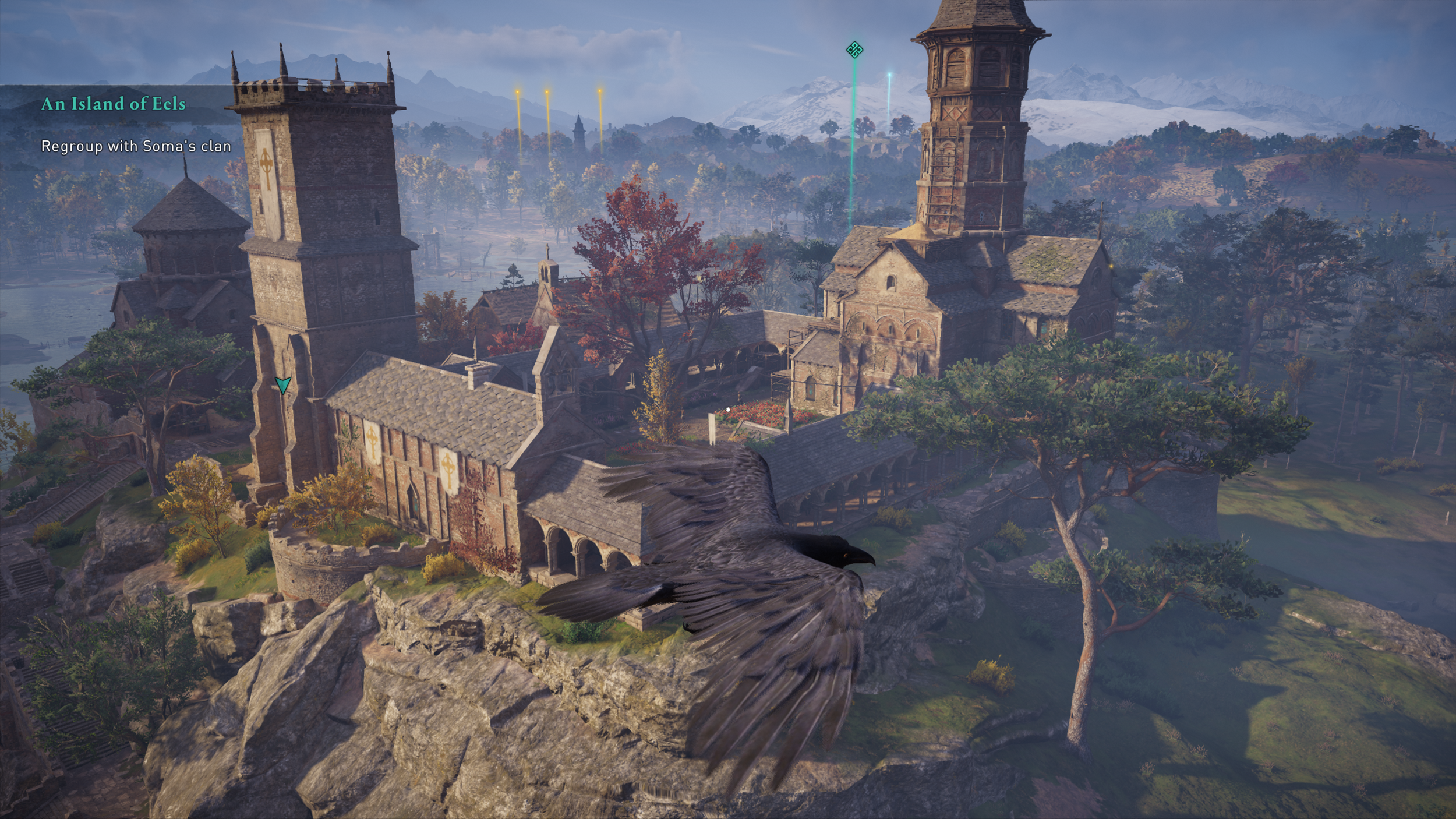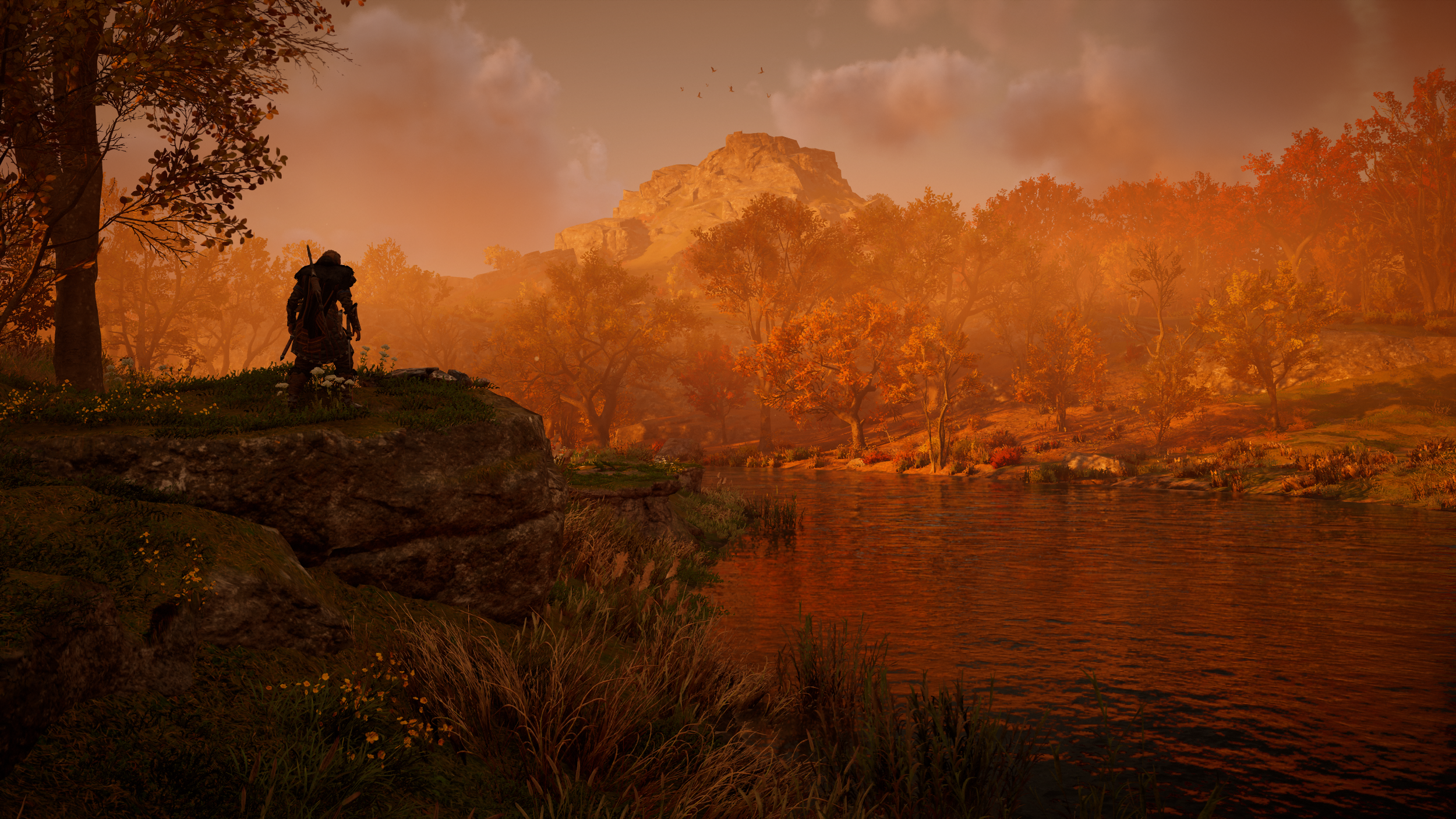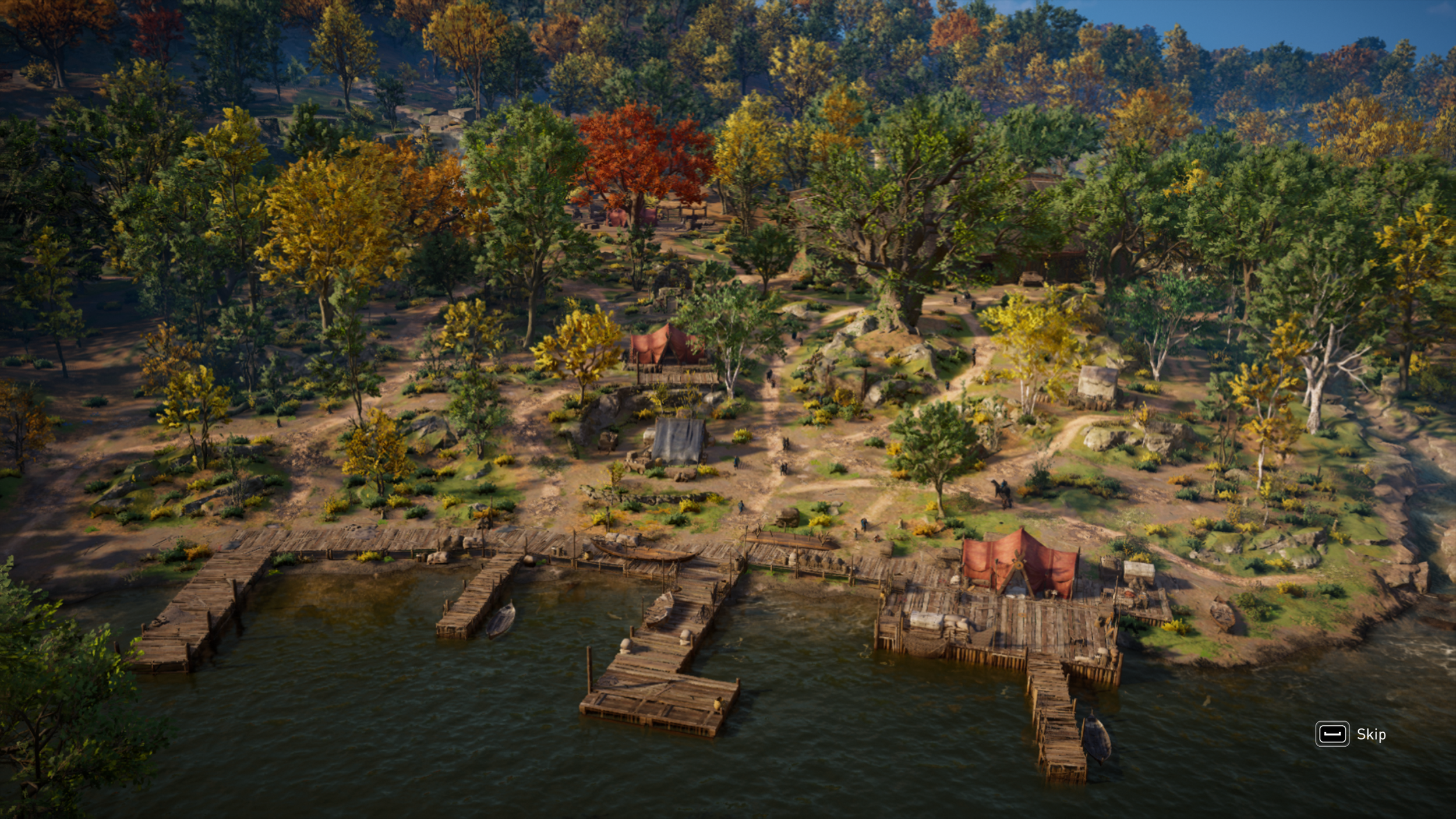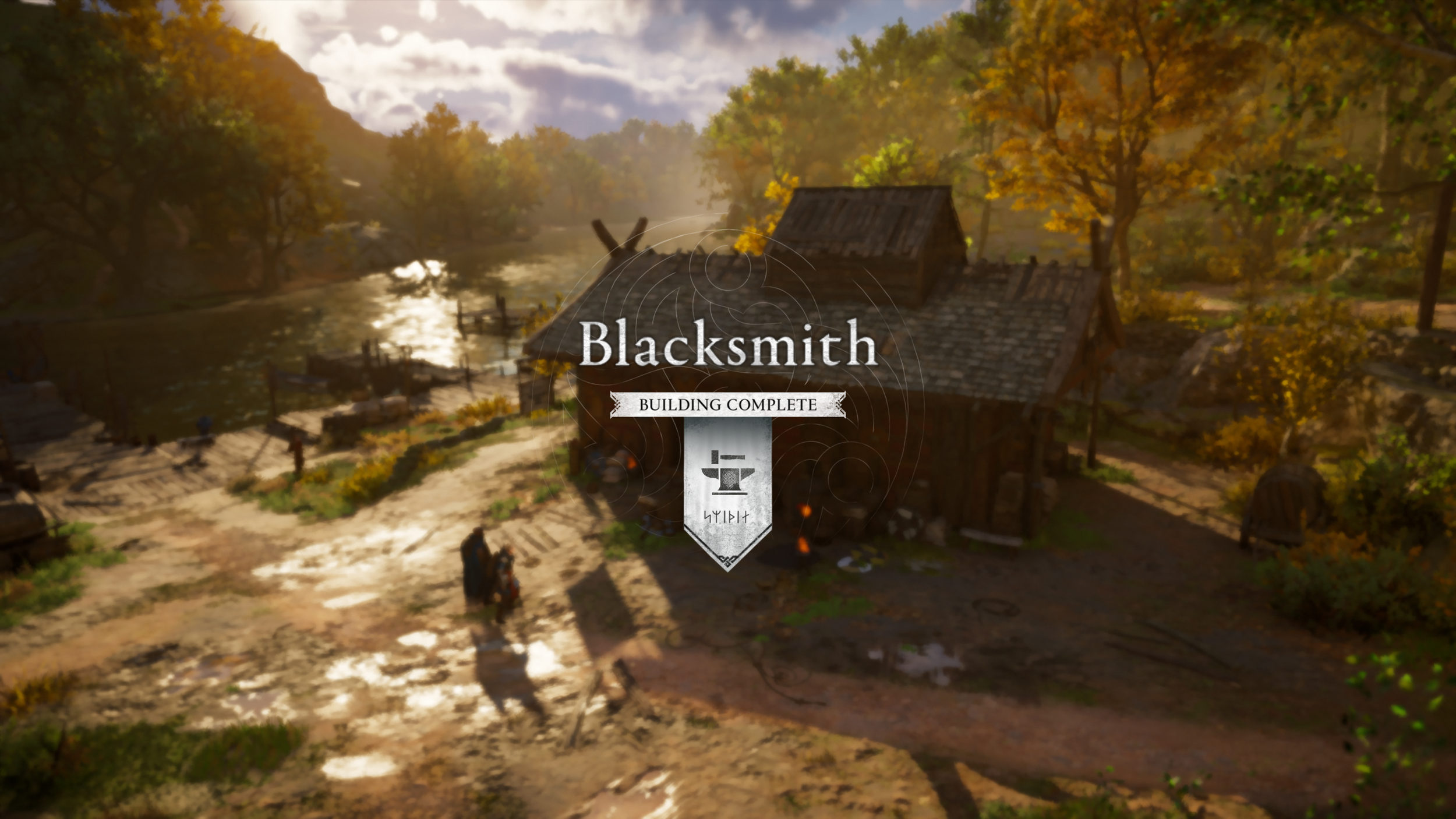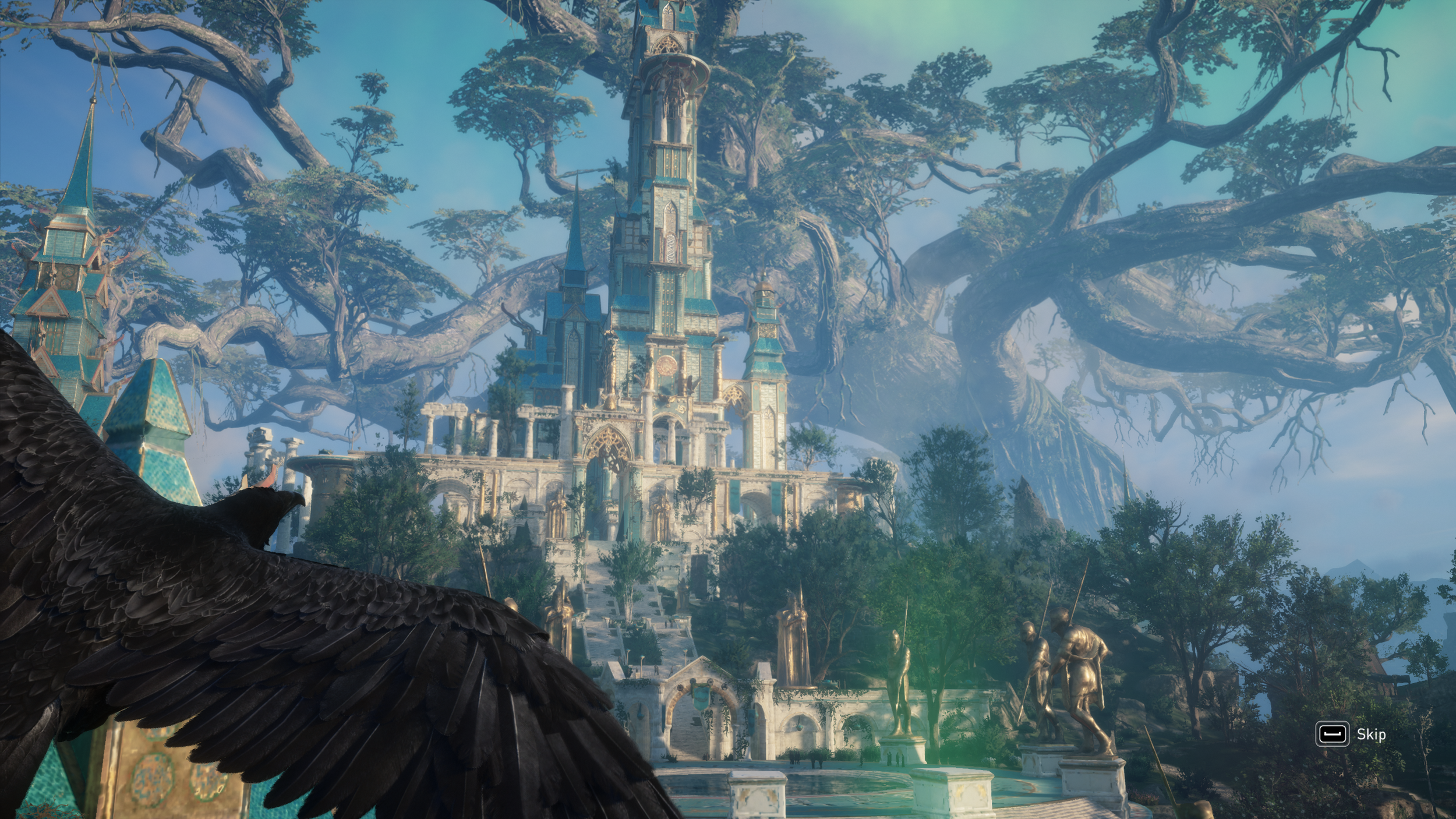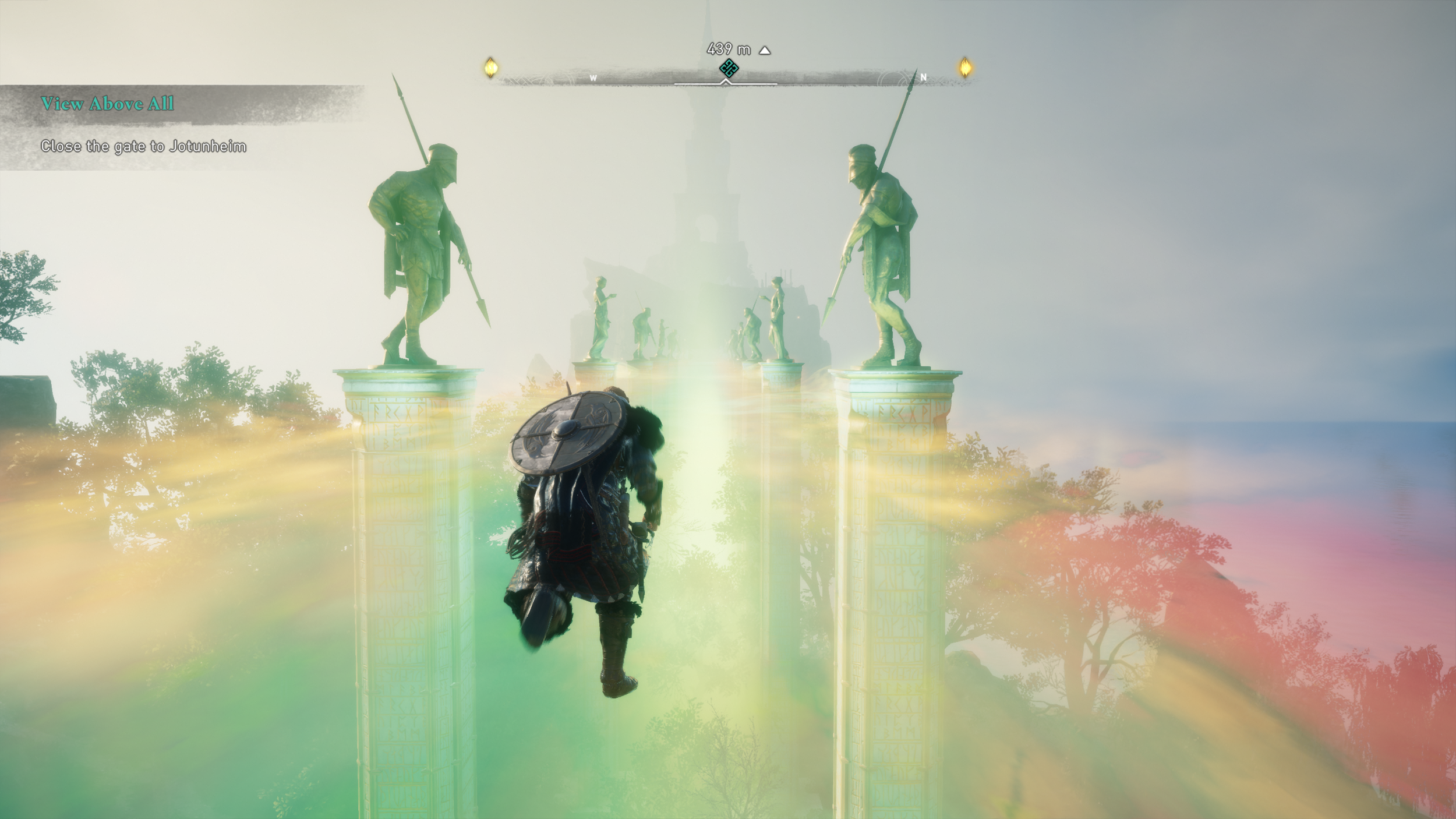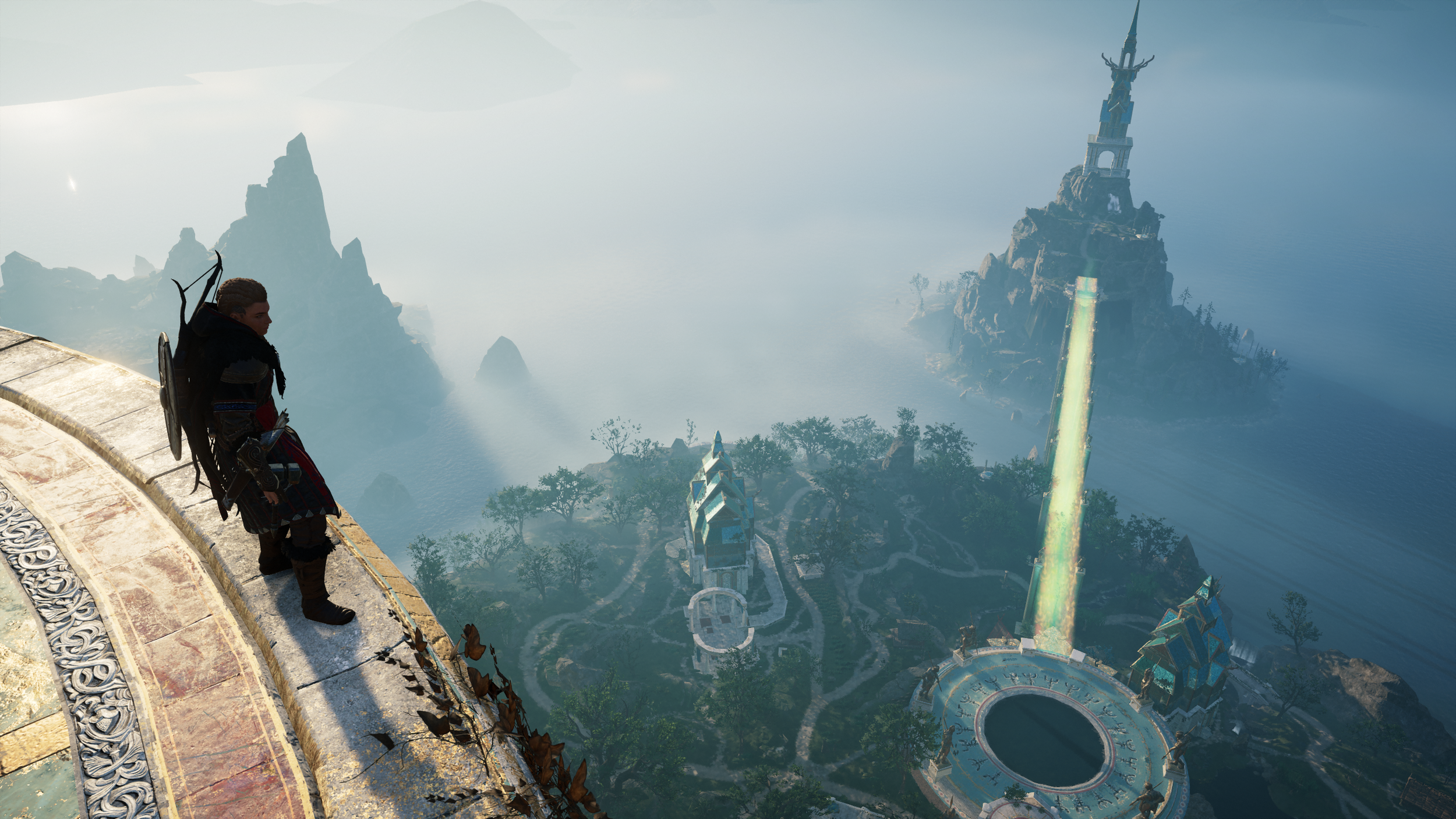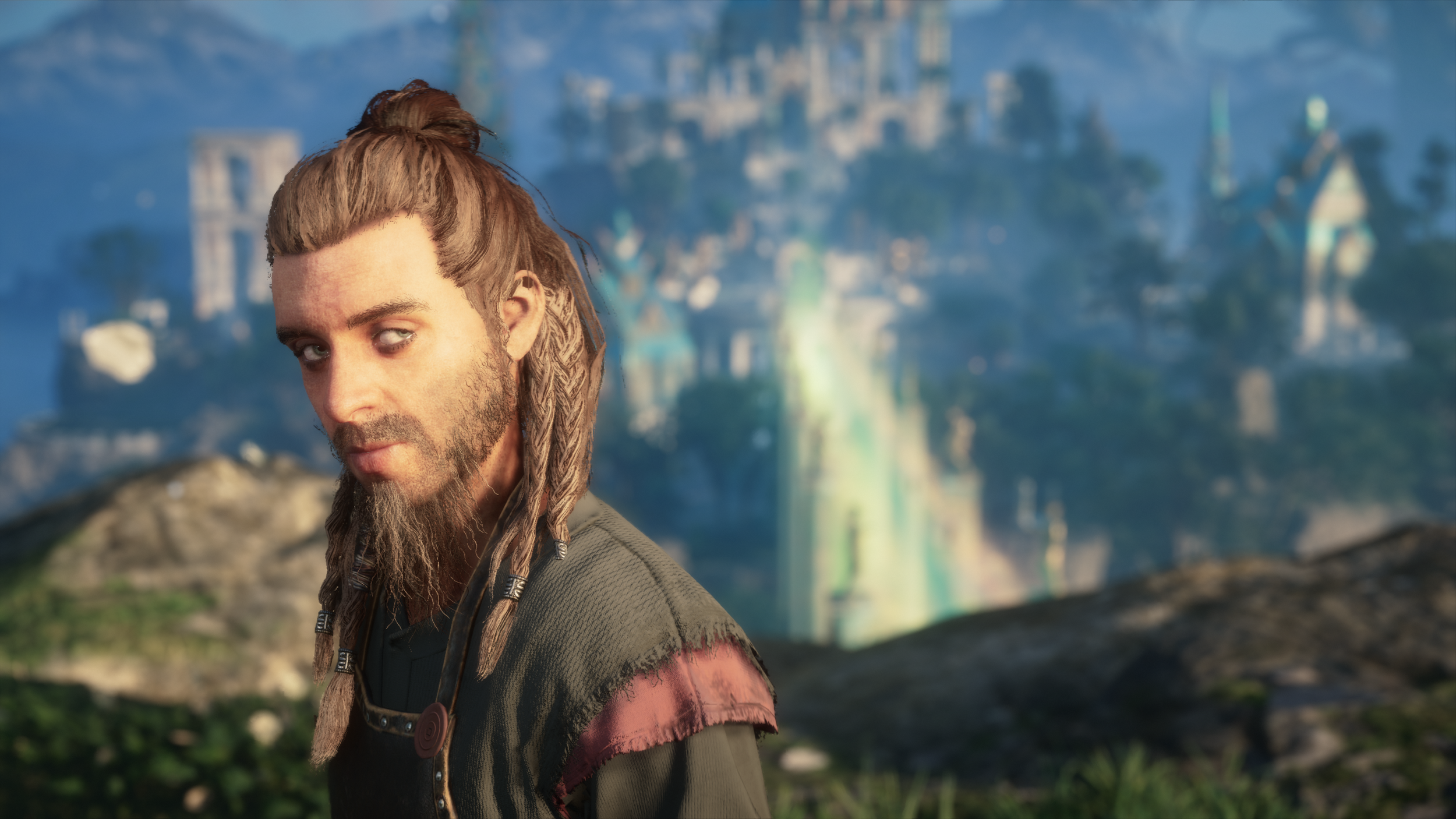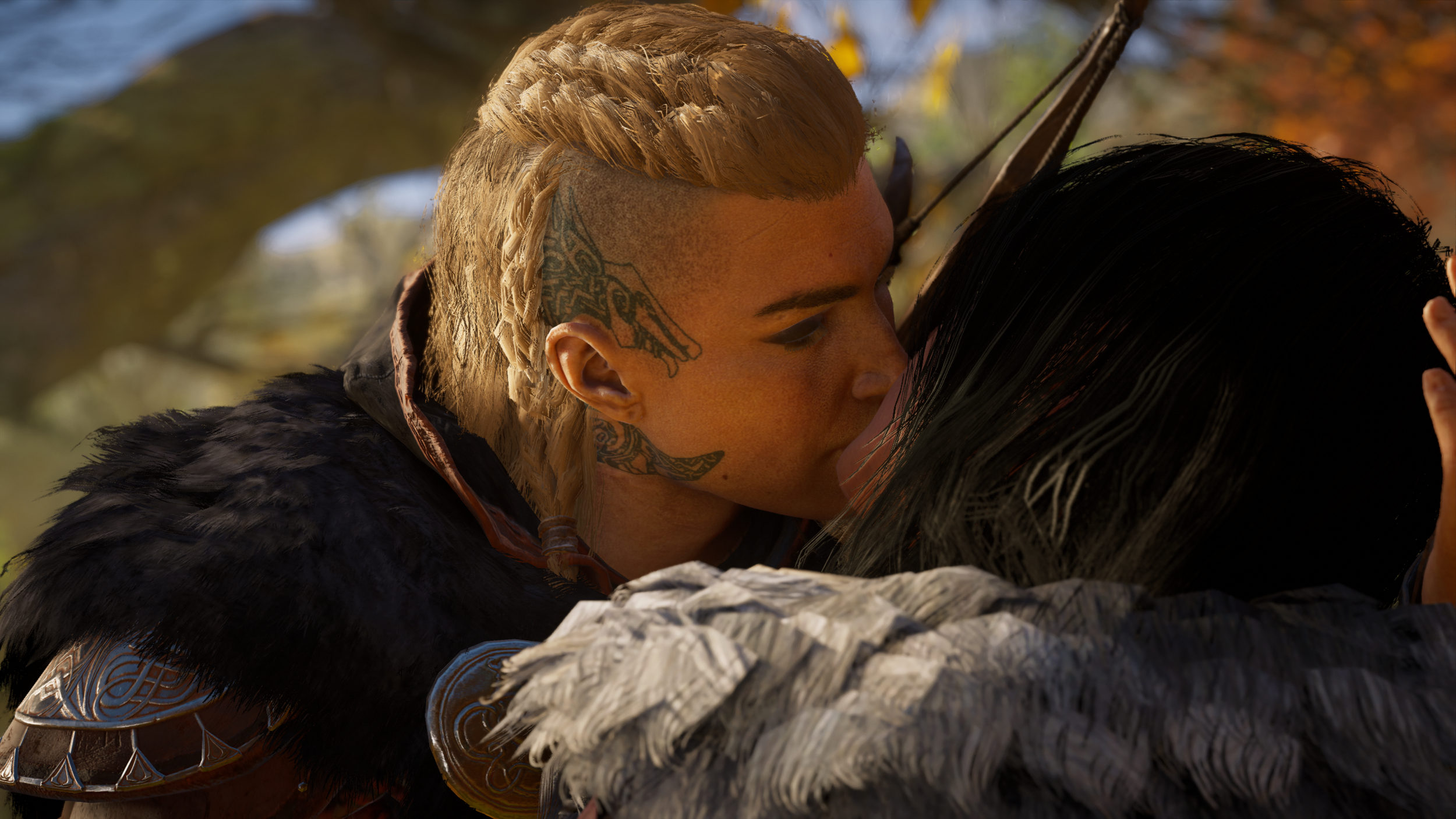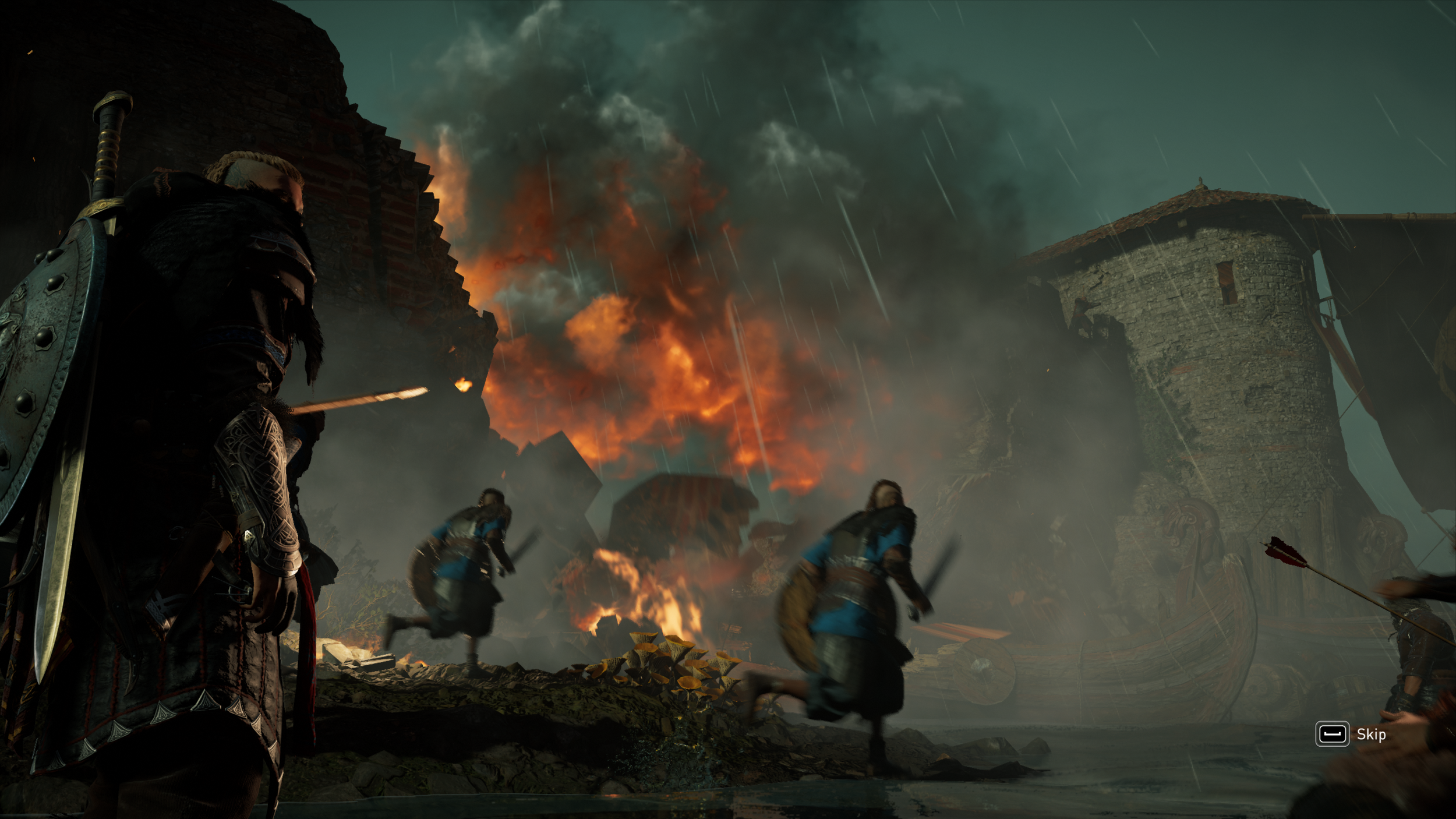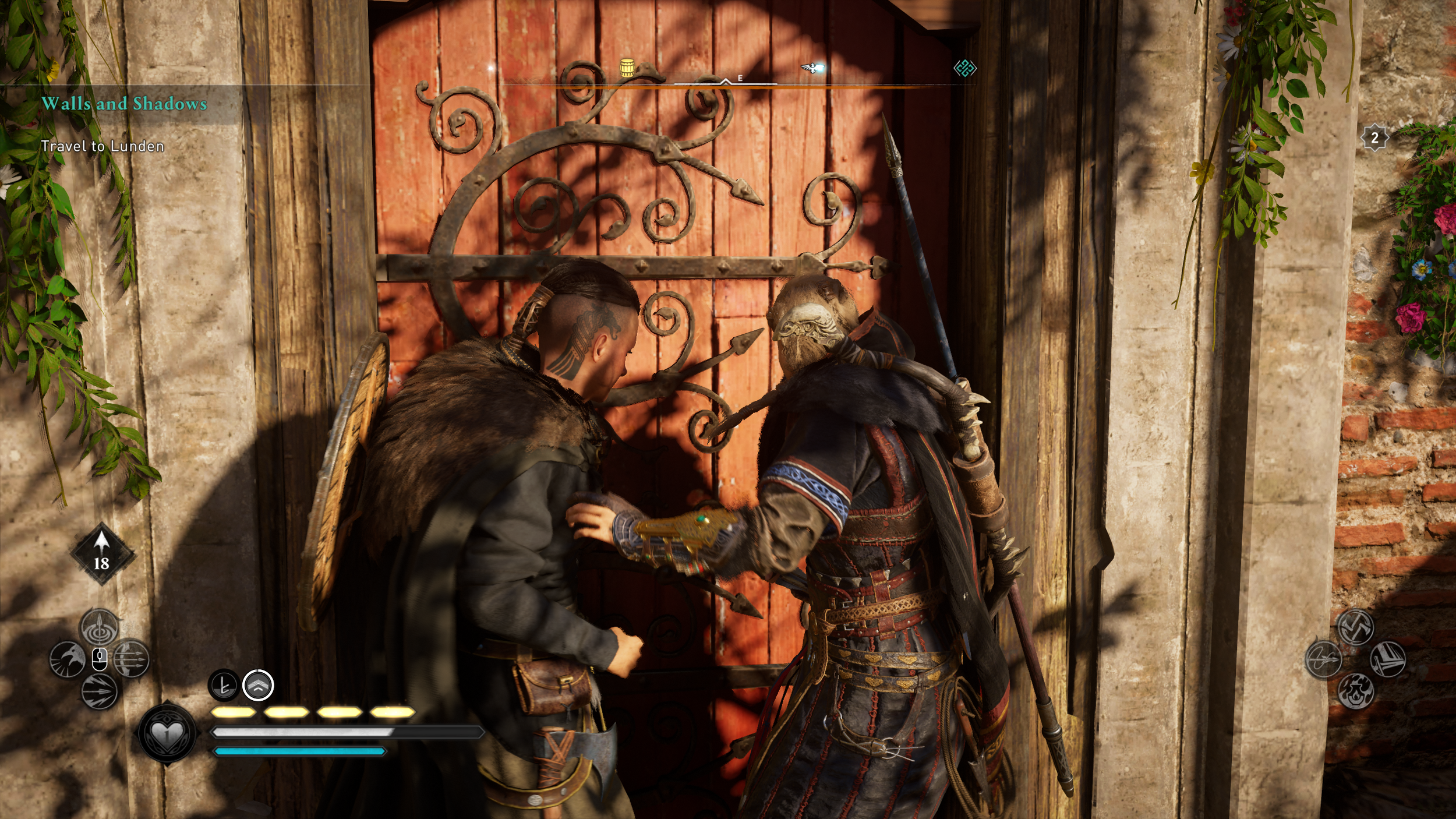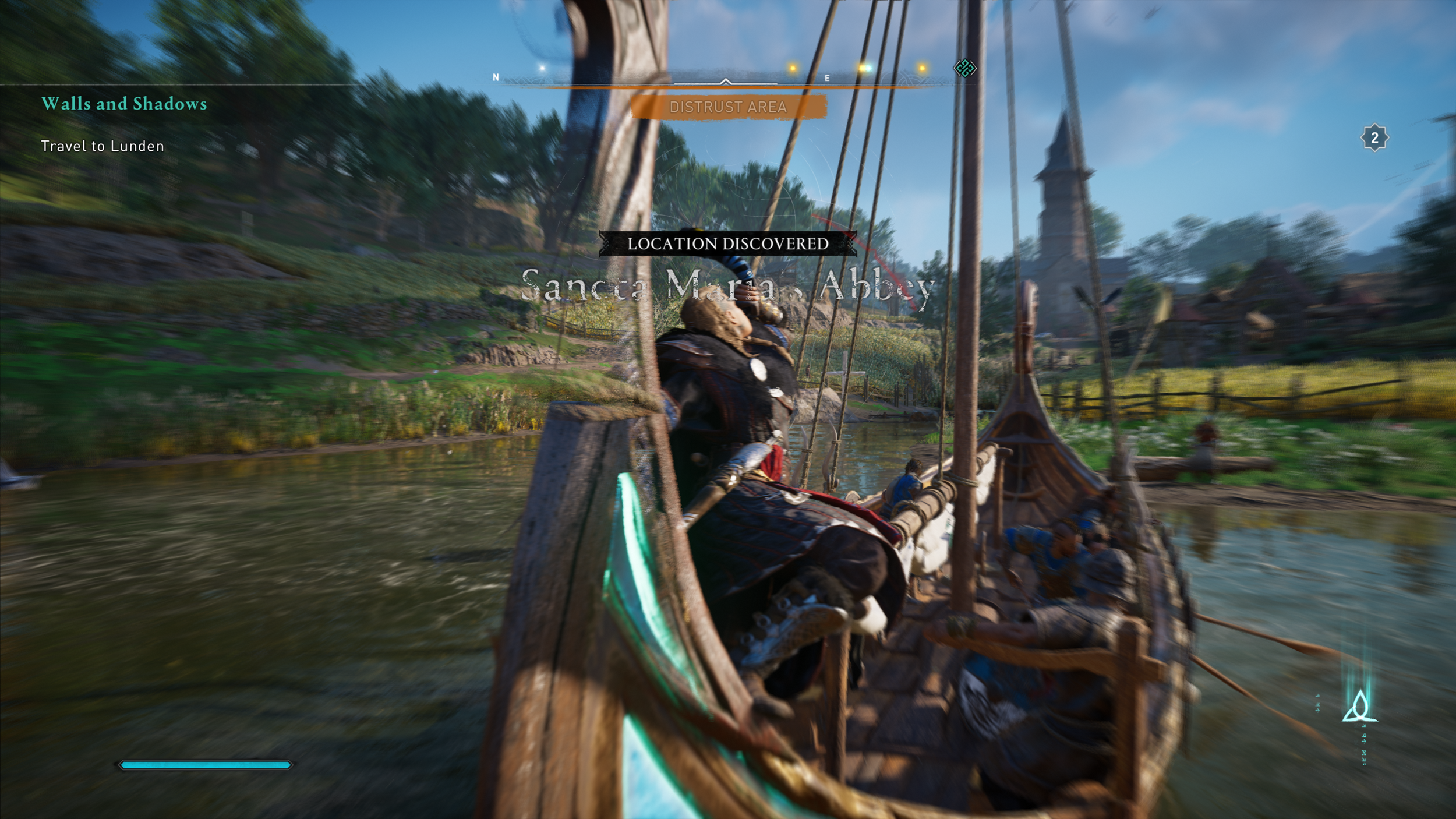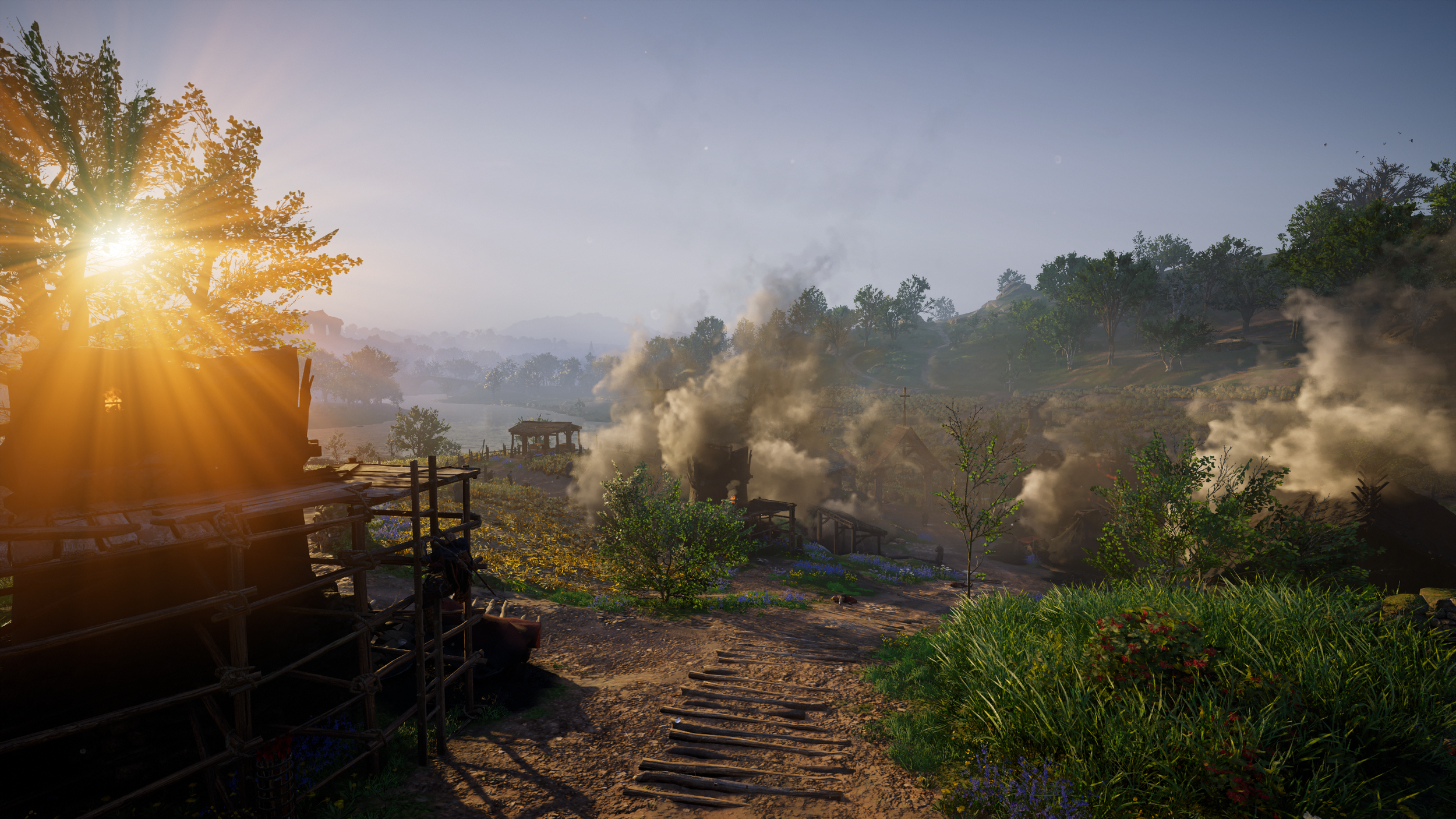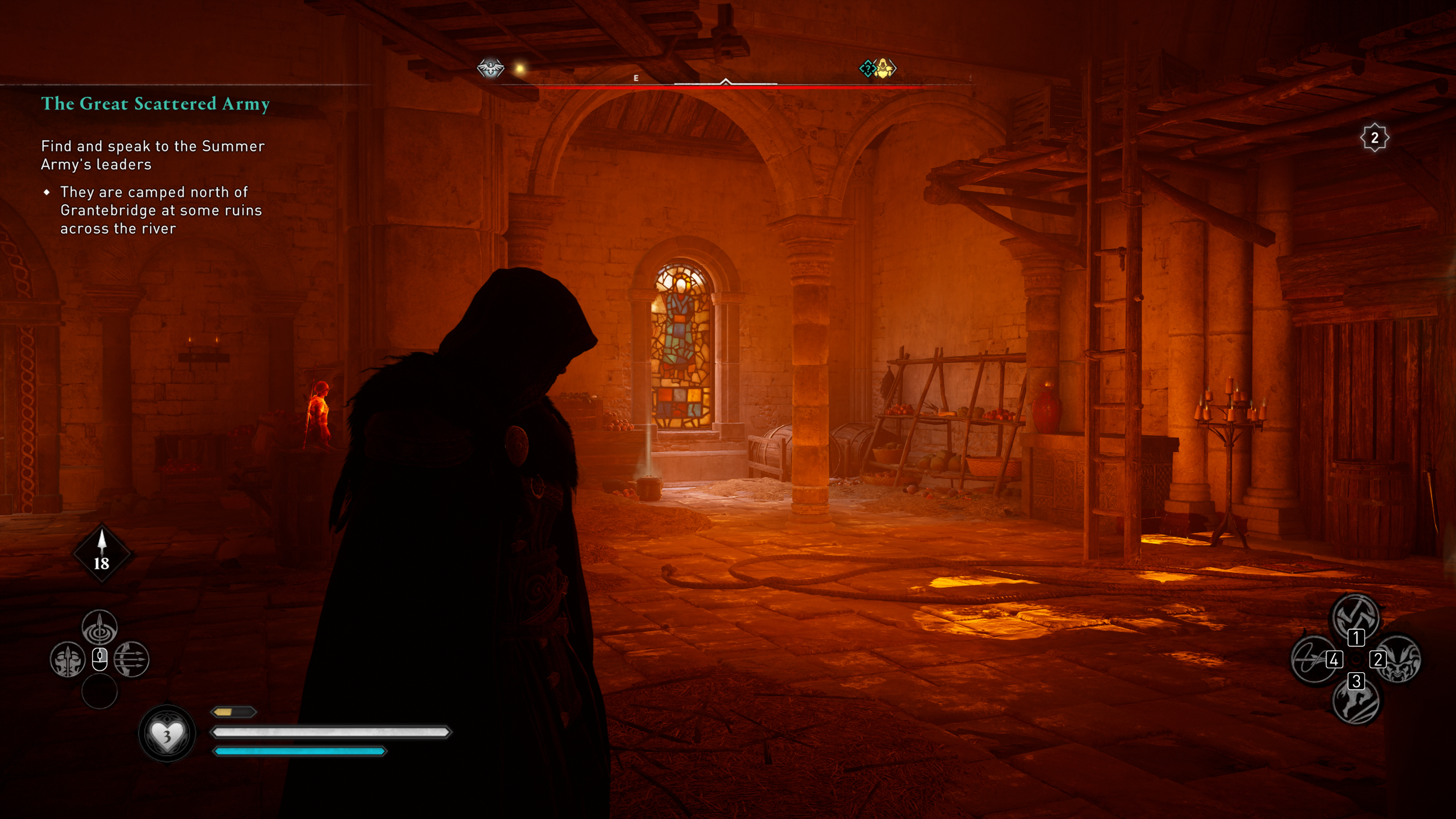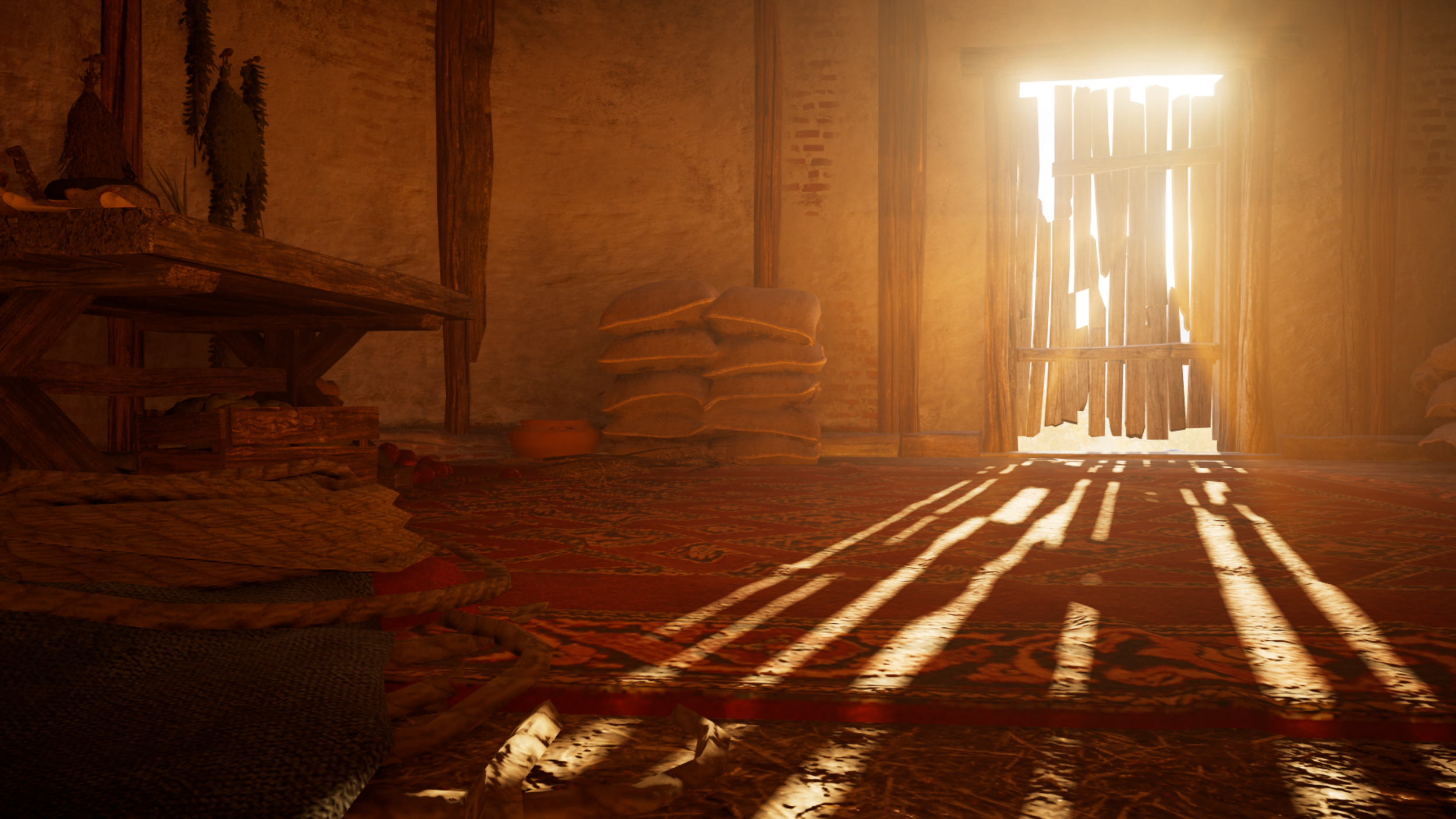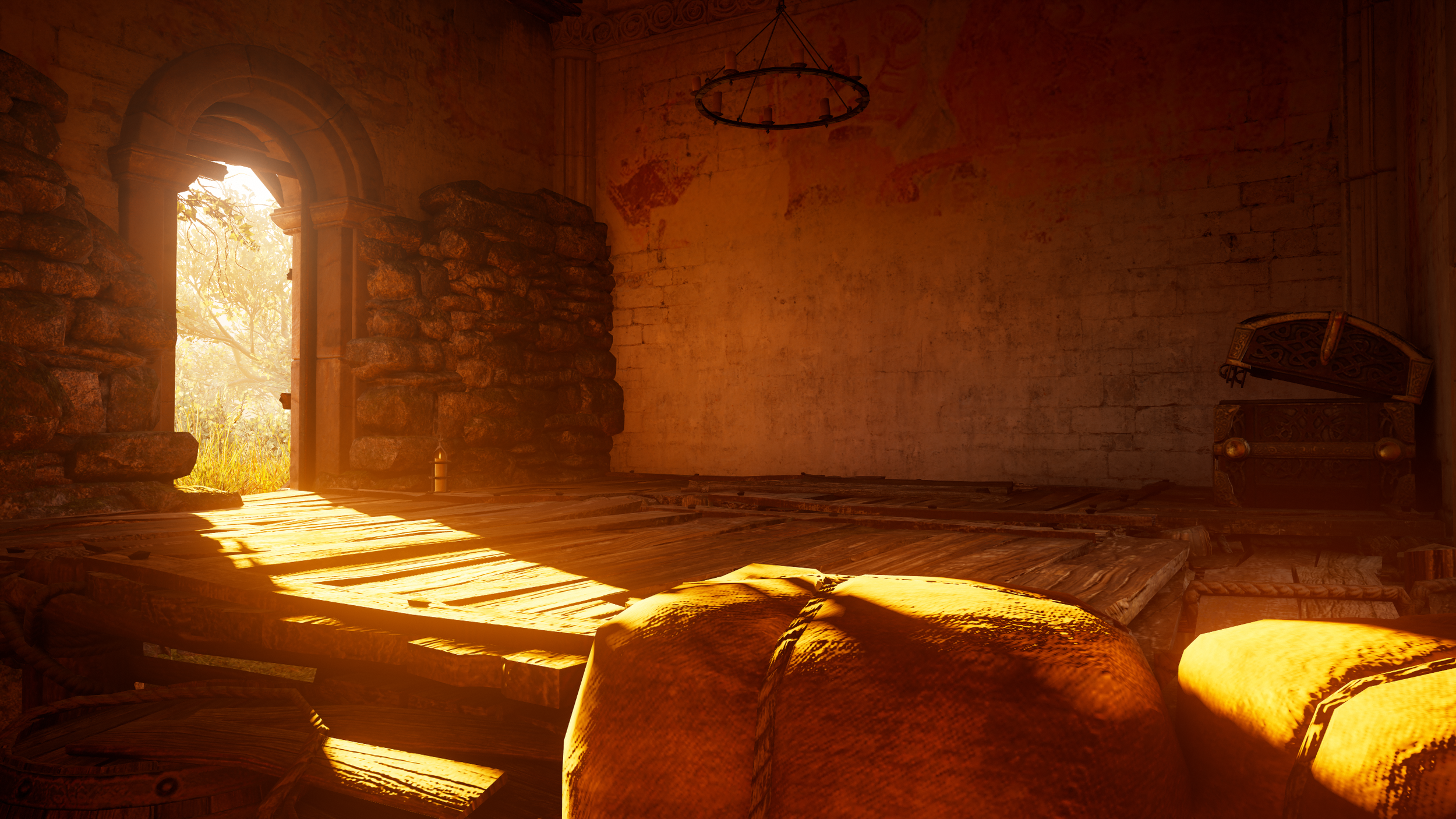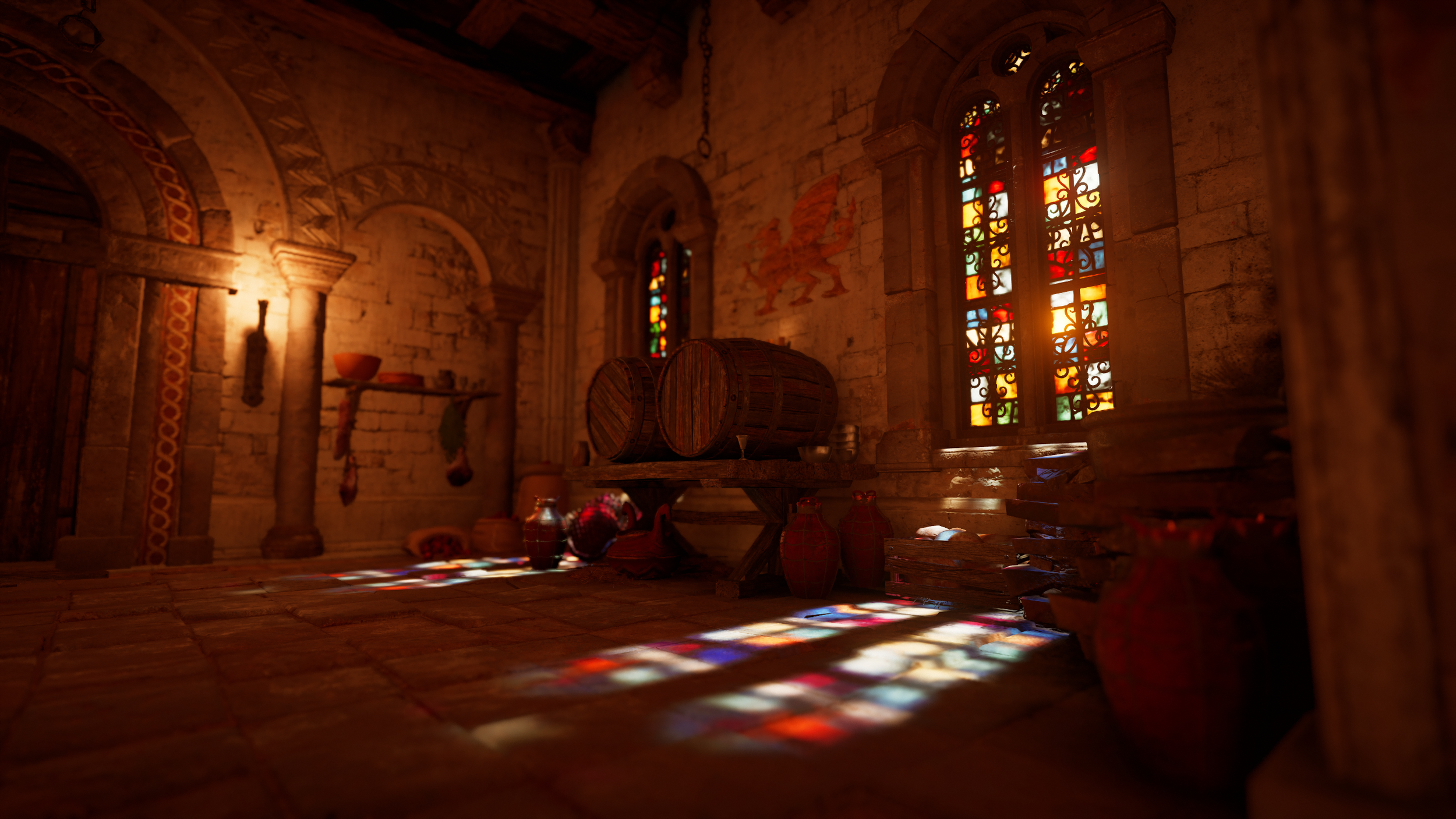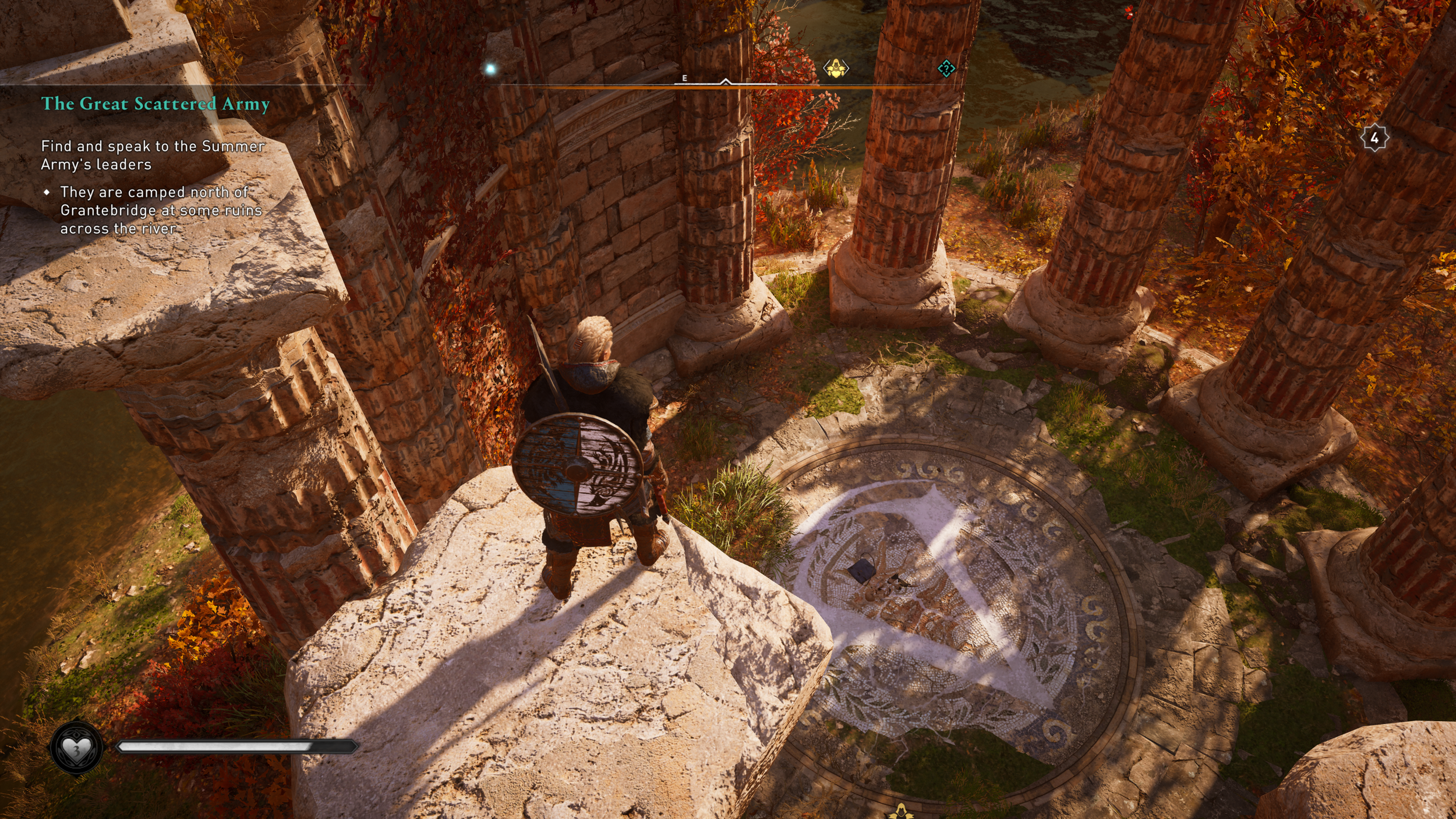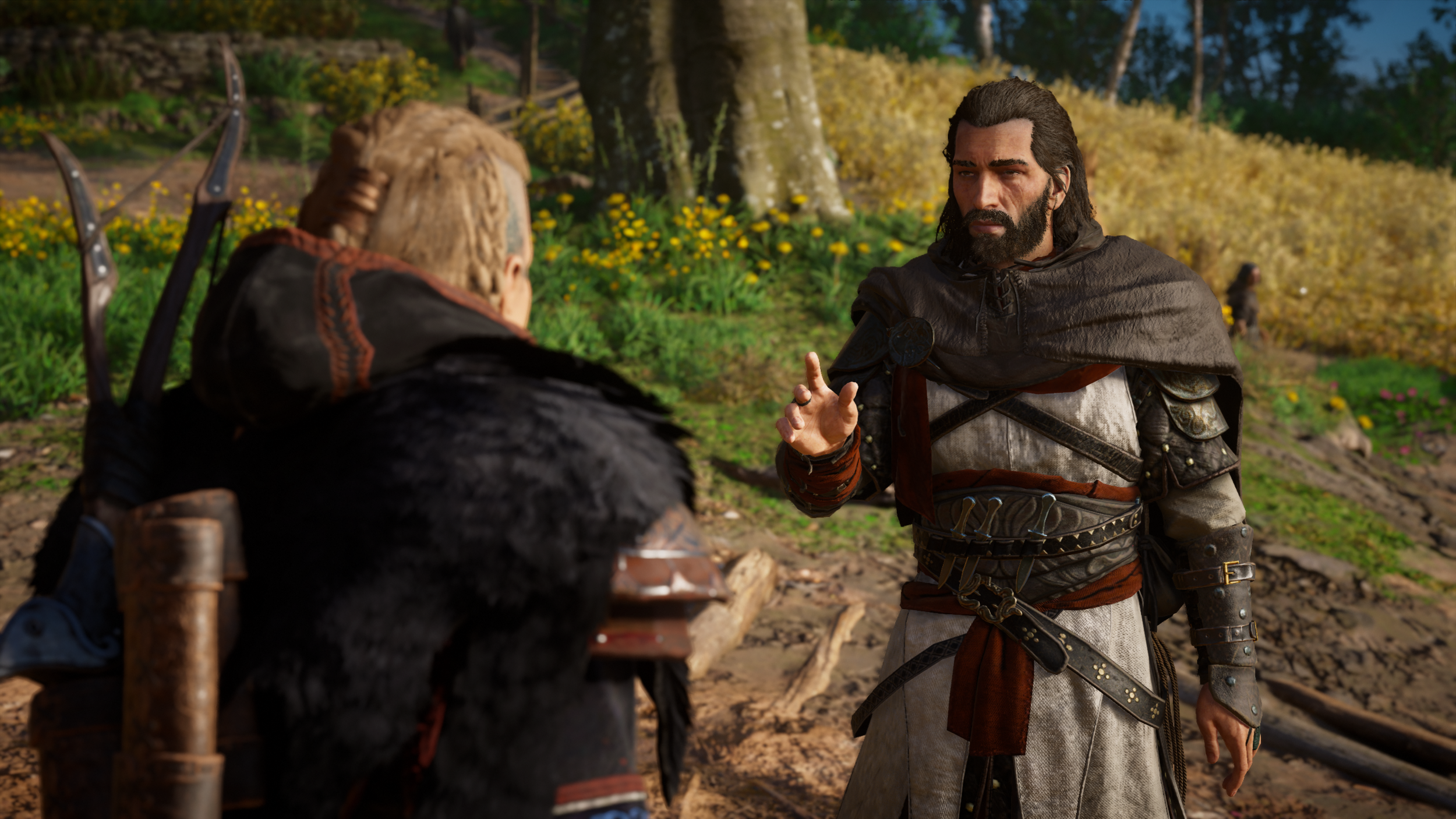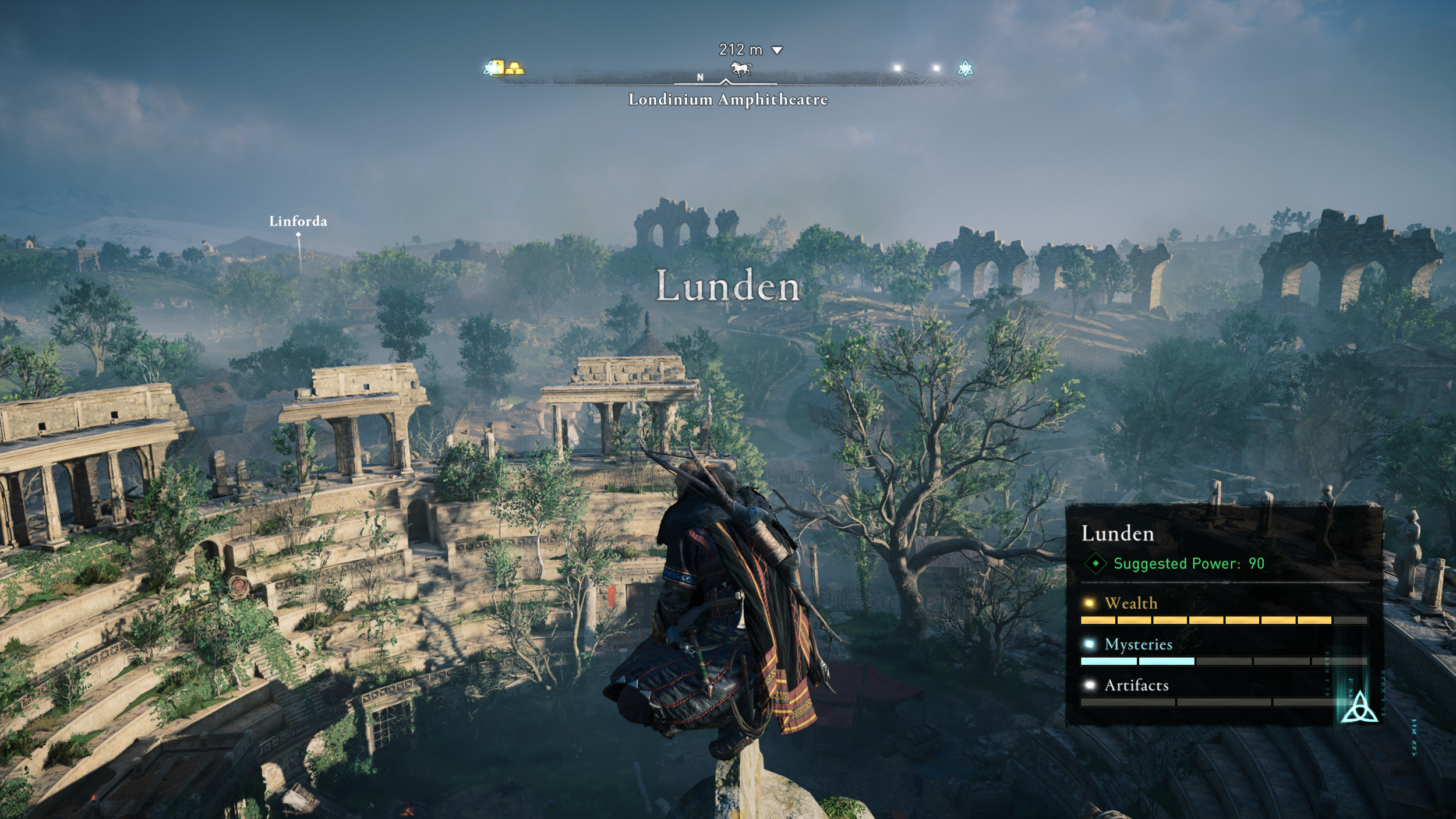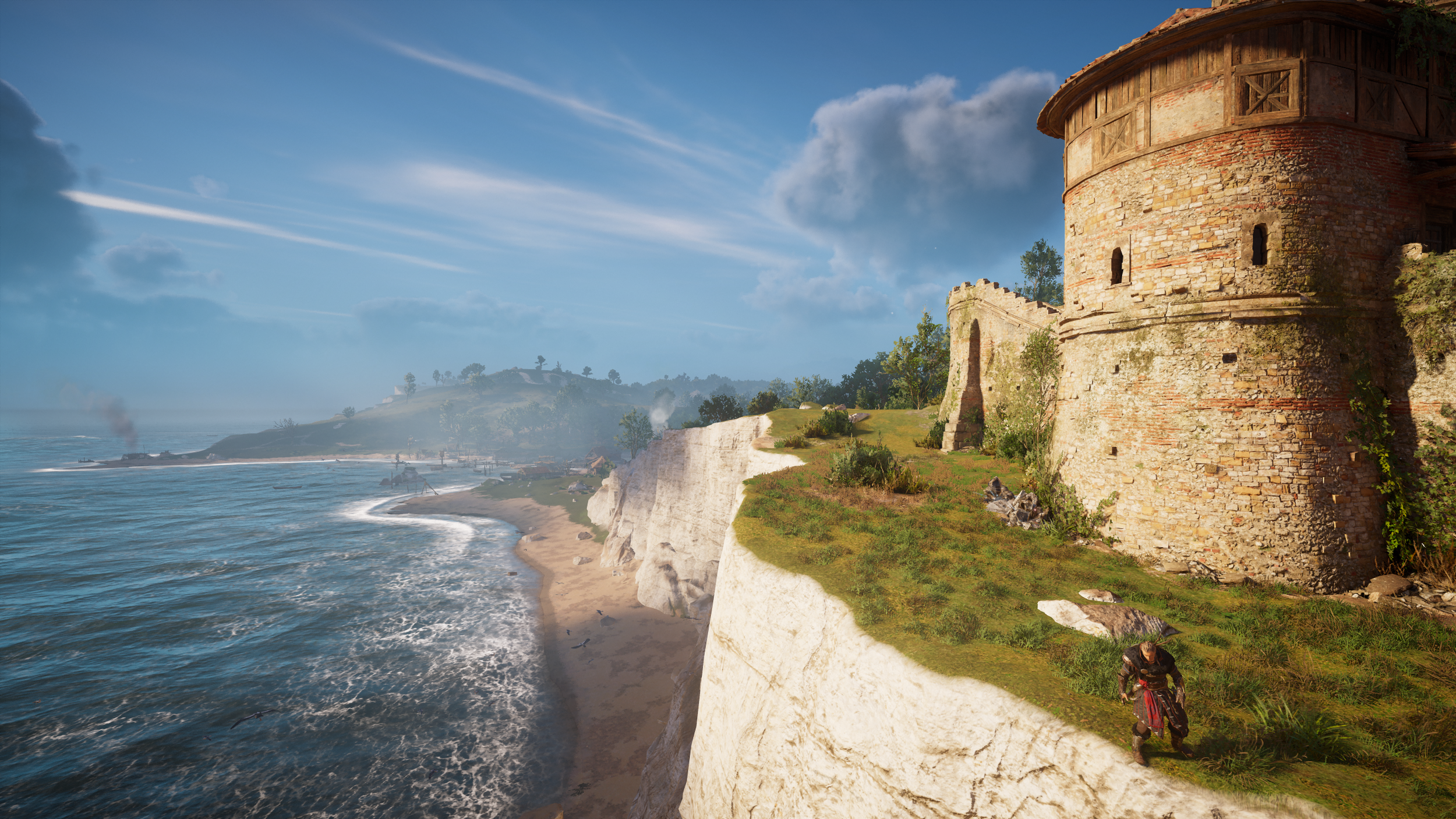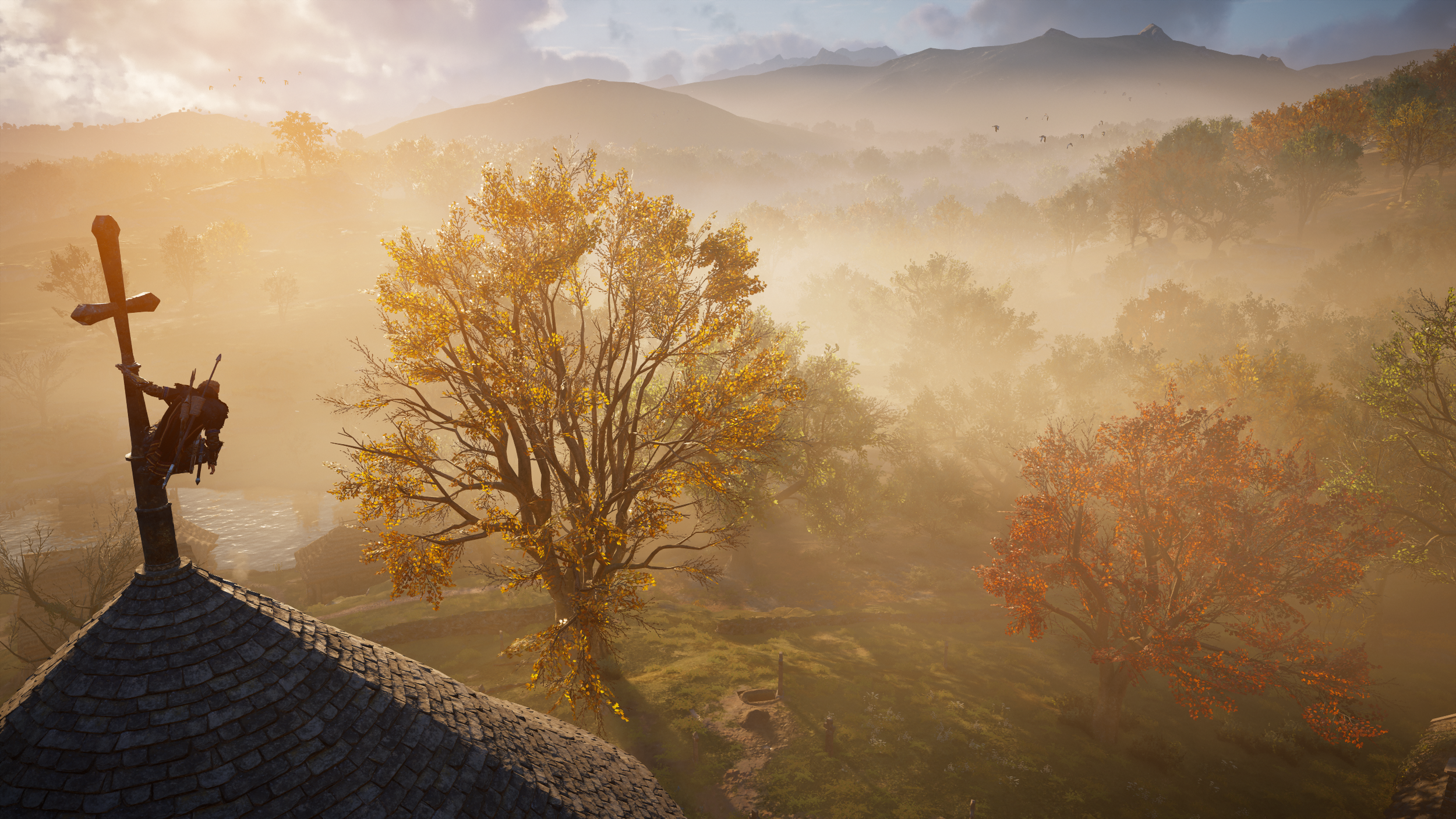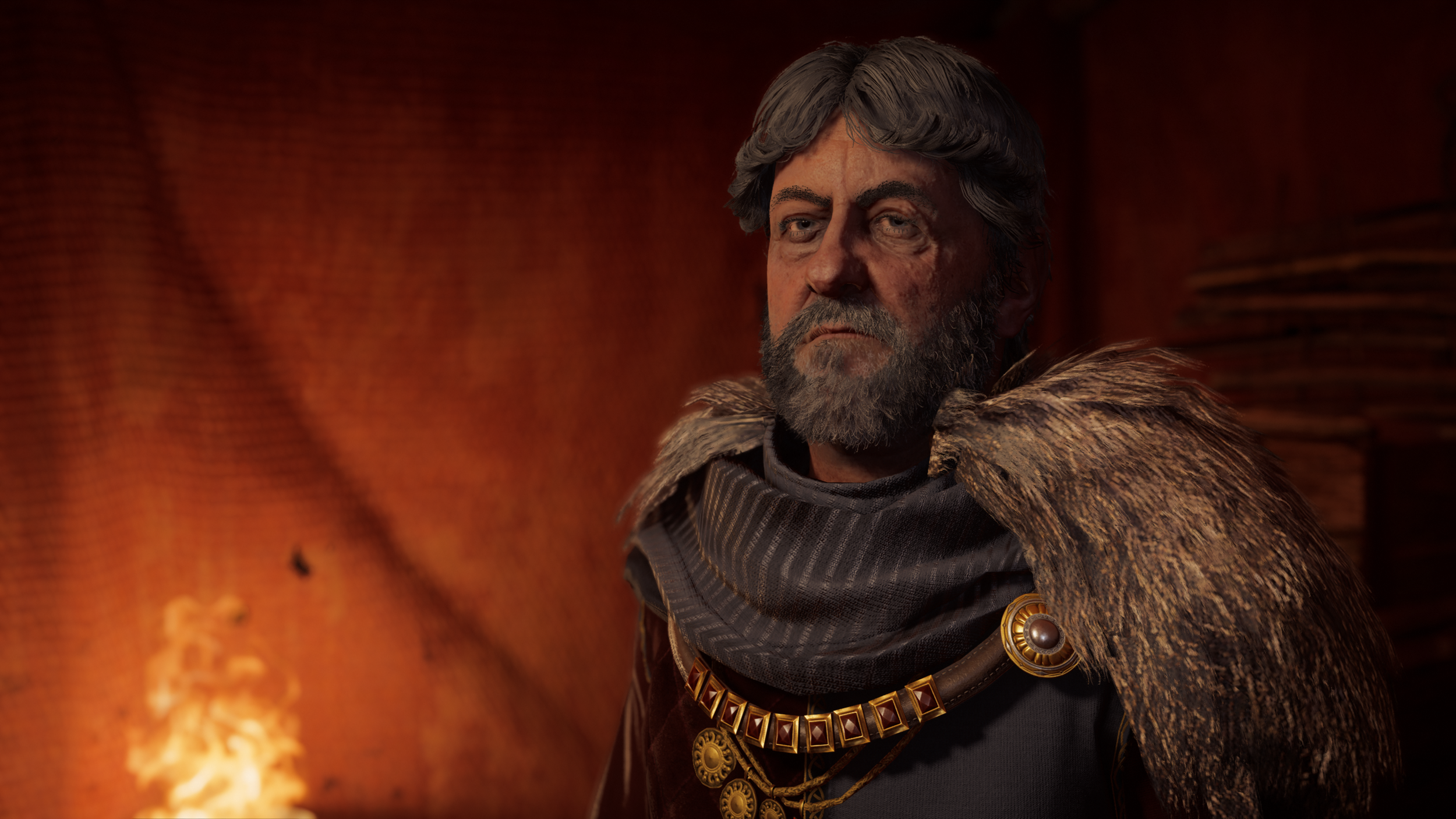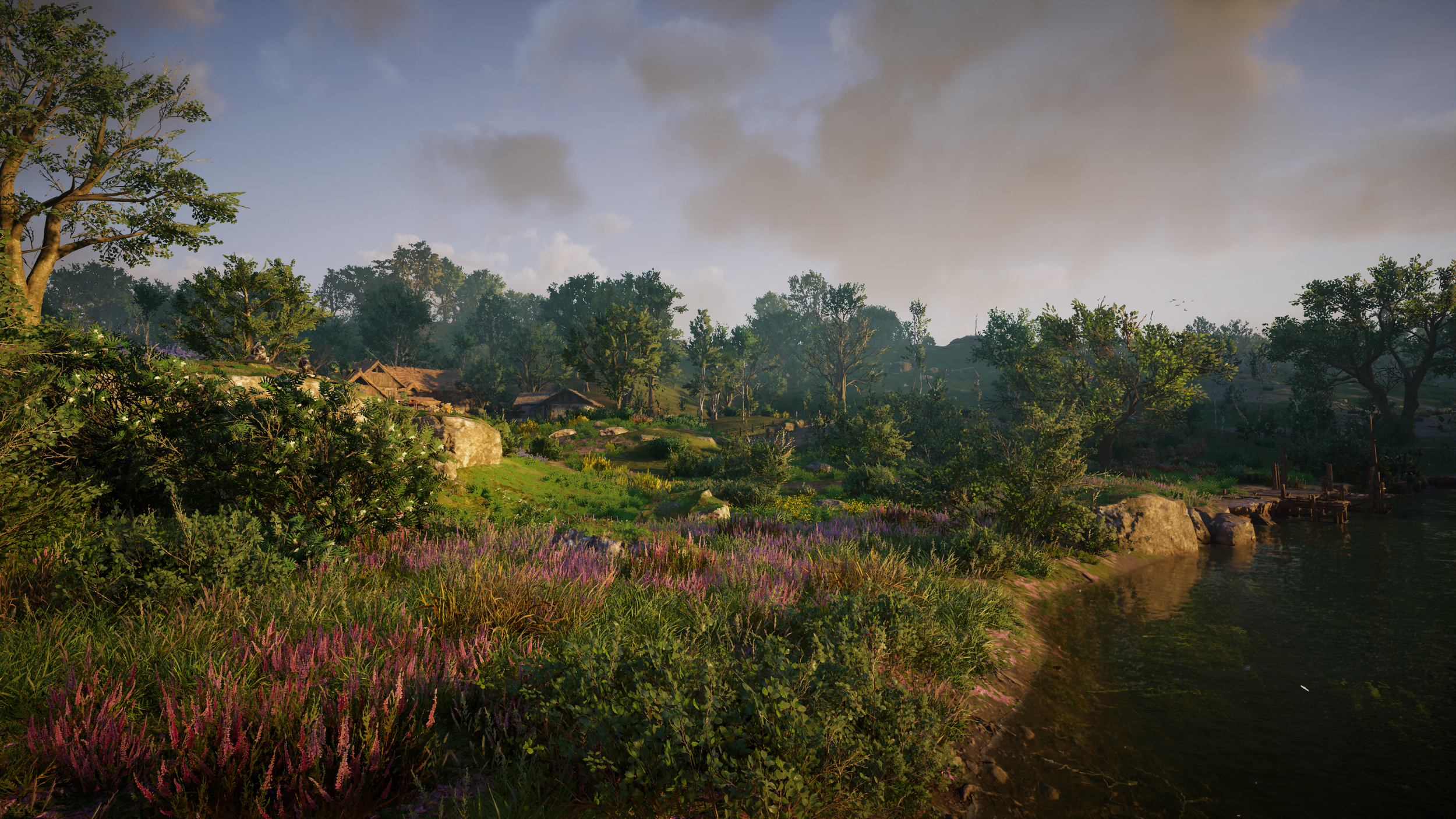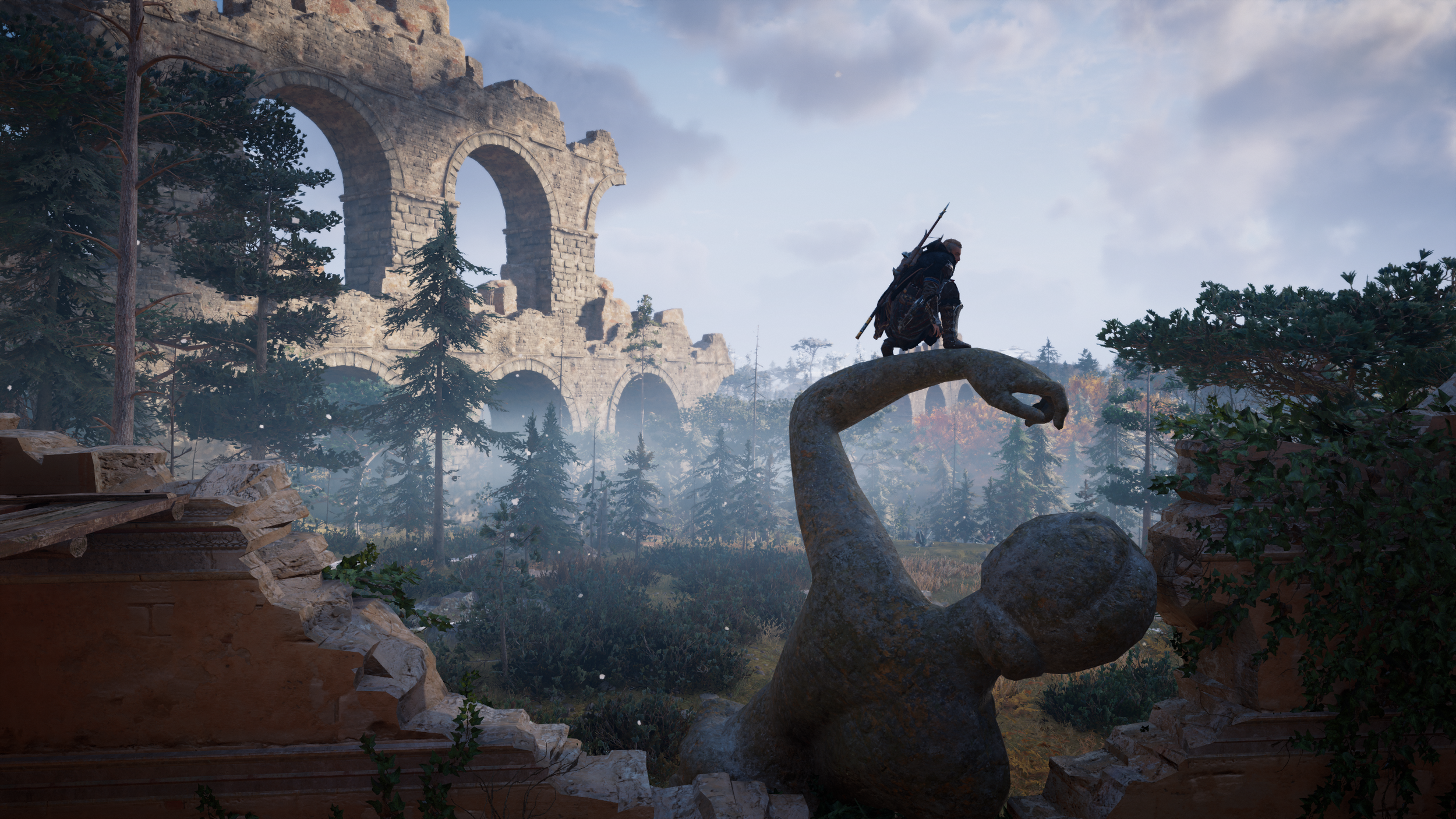Assassins Creed games have always been a tapestry of various gameplay styles, a little bit of city building here, some stealthy assassination there and the occasional tête-à-tête with historical legends such as Charles Dickens. Around all of these commoving exploits, there has also been a generous sprinkling of fluff which to some has been something of a downside. Yet for reasons I cannot fully explain, I have always seen these extra ‘things’ to collect as a gauntlet thrown in my path or maybe endurance test would be a more apt description. That is why one of my biggest gaming traditions has been to 100% sync every Assassins Creed game. Ubisoft obviously know this and have been trying to best my efforts because Odyssey... Odyssey nearly broke me.
Thanks to my old pals at Ubisoft it has been a busy few weeks, as I knew it would be. Two gargantuan open-world games (three if you include Fenyx Rising) launching in such close proximity has left little time for anything else. After leaving the grimy streets of near-future London a little safer (and a little less crowded) it was time to swap my phone for an axe and a horn of Viking mead.
A Frosty Reception
The year is AD 873 and the Vikings have already been landing on the shores of an Anglo Saxon controlled Britain for some time. After Eivor, our new protagonist, and her brother have their heritage scuppered by a cowardly father they decide to break out for the shores of England and carve out a kingdom of their own. Eivor is no stranger to combat, after seeing her parents brutally killed when just a child, she has spent her entire life becoming a fearsome and legendary warrior. As you start the game you will be given three choices for the gender of Eivor (yes three), either male, female or a mix of the two. If you choose the third option you have the ability to change when it suits, which I find to be utterly ridiculous and immersion breaking. As Kassandra was by far the strongest character in Odyssey I went for the female version of Eivor; a choice I initially regretted.
Compared to the soft and often melodic sound of Kassandra’s voice, Eivor sounds like she’s been hoofing fifty Marlboro a day since the age of ten. Her raspy drawl and her more direct way of doing things did not initially endear to me to this new protagonist. The opening prologue to the game is an unnecessarily large area of Norway with freezing waters and jagged mountains that seem to stretch to the heavens. I pressed on and got through this opening section in around five hours, by which time I was starting to engage with the story while also enjoying the spectacular Northern Lights (which seeing are my lifetime ambition). However, it was as Eivor and her brethren schooned into the inland waterways of England that something really clicked with me.
Old Blighty
The truth is people have been scraping over England for thousands of years but it was the Anglo Saxons that did the most of the hard graft with the development of many institutions we hold dear to this day. Yes, the Romans gave us decent roads and sanitation but where would it all be without a central democracy and the formation of laws to guard it. In your time with Valhalla you will encounter the biggest open-world Ubisoft have ever created and while nowhere near a 1:1 scale, it is a fair representation of the entire central land mass of England. This map is split into numerous districts or county’s, each with their own self-contained story and themes. After traversing the bracing snowscape of Norway, seeing this new green land bursting with colour and life is a shock to the senses.
As with every Assassins Creed game the environments here are just stunning from the rolling hills to oaken forests and peaceful slow-moving rivers. It is honestly a joy to behold and made all the more impressive with a full day and night cycle. Sitting high on the battlements of a forgotten fort you can see its shadow cast on the landscape far below as well as patches of light being cascaded from breaks in the clouds overhead. As the night sky turns salmon pink and the morning sunrise starts to warm the stone city walls it just feels good to be here. As with all the ‘new’ Assassin Creeds, there is also an abundance of life on display from Roe Deer, wild boar and ferocious wolves stalking the more secluded trails. I would say the only aspect of these environments I have found lacking are the underwater areas which seem to be barren of detail save for a few bits of kelp.
In addition to the broader landscape, the man-made features have also been recreated with a deft hand. Each place I have been to feels unique whether it be an abandoned church in the middle of a forest, a bustling town built on the side of hillside or the sprawl of London itself (sorry Lunden). There are also many relics from the time the Romans has their grip on this land and occasionally you might think you are back in accent Greece with all the impressive statues. There are plenty of telltale signs that we are in fact in a more clement setting with the early morning mist hugging the rivers and sheep skirting the many stone walls. This is exactly as I would imagine our fair land would look at this time in history and the folks who research this stuff have done themselves proud.
Home is Where you Hang Your Axe
As you make landfall you very quickly set up a settlement that will grow with new structures over time. There is a fair amount to choose from and some will offer new services. The Hunters Lodge, for example, will allow you to trade game for rewards and also hunt legendary creatures that stalk the wilds. One structure I would highly recommend you start with is the Assassin Bureau which in turn will allow you to start hunting down hidden Order member (templars). This was one of the better activities in Odyssey and it has been implemented into this new setting very well. As you discover clues about hidden members you can then investigate them which will eventually lead to you taking down another link in the chain (via the obligatory post stabbing chat). As you add more food-themed structures to your settlement you will also be able to host feasts and while these are just a cinematic they do offer a decent buff.
Other structures can seem almost inconsequential and yet hide huge amounts of content, such as the seer’s hut that will allow you to adventure to Valhalla itself. It has to be said this interpretation of the home of Thor is absolutely jaw-dropping and caused me to say wow out loud. Very quickly you will see familiar sights such as the World Tree, the Bifrost and many characters we know exist here. Ubisoft didn’t even need to physically take us to Valhalla but they did and it is mighty.
Overall the settlement system has been well thought out and offers a decent distraction from pillaging and romping across the soggy fields of old England. Our little time-defying friend Reda also makes an appearance in your settlement and offers the same kind of repeatable quests like in previous games. These quests offer various rewards and often opals (that can also be found out in the wilds) which in turn can be traded in for rare equipment or vanity items. The quests themselves are little more than kill this guard or rescue this person, but they do offer an additional challenge to players looking for an excuse to do some more sneaking and killing. There are also some other interesting side quests and even a love interest if you develop that relationship further. Sex is still one area of gaming that is handled very poorly and Valhalla makes no effort to rectify this. However, I do appreciate that even murderous Vikings need to get laid from time to time.
Chop Chop
My biggest concern for Valhalla was this once refined and delicate combat system was following Odyssey’s lead and devolving into an all-out brawler. In the older games open combat was to be avoided and only when cornered did you have at it. In some ways, this shift to a more combat orientated play style has come to pass, with full-on castle sieges and raiding being part of your daily Viking life. There is a good range of weapons to use in Valhalla and each comes with its own attacks. These also change depending on which hand you have them in which adds a little more diversity. You can even dual-wield two shields if you so wish and with a later ability, you can duel-wield two-handed weapons. The gear itself has ceased being the loot piñata from the prior two games and now has a more thoughtful touch with items that actually improve with you, assuming you have the resources. As you loot and scavenge the land, your hard-won spoils can be spent in various ways. Improving a piece of gear to the next tier will open rune slots and also change the look of the item.
As you sing your merry way around the waterways of Mercia you can raid pretty much any enemy settlement you come across whether it be a small camp or a full village. Monasteries are religious buildings that were known to hold all the wealth of a local area (they say you never see a hungry priest) and so these are shown on your map with a red symbol. As your longship hits the shoreline you and your crew must charge into the settlement and defeat the guards. The main goal is emptying the various chests of loot and not to kill the none combative villagers, but guards trying to bring you down are fair game. As you ransack these areas you will see thatched roofs ablaze pouring black smoke into the sky which can still be seen from a distance hours later. You can leave your warriors to torch the odd building but you can also ignite them yourself with any flame source. It’s worth mentioning at this point that fire very well implemented into Valhalla and it’s not just roofing that can be set ablaze. You can light a torch at any time which can be used for illumination in dark places, to light enemies on fire and even used to light arrows aflame.
Your crew do a pretty admirable job of helping you out and will assist with bashing down doors or lifting the tops off heavy chests. As you explore the world and complete certain quests you will have the ability to recruit certain individuals which can then be added to your raiding party. A nice touch would have been having a greater degree of influence over what the raiders do in battle and which enemies they target first. As it stands the crew system feels a little underbaked when compared to other systems in the game. Leaving burning homes that make the evening air glow orange with embers and paths littered with corpses, you can start to feel a twang of guilt. As you make your way back to your ship your crew will shout crys of victory while the remaining villagers flee at your sight. The consequences of my actions were brought home, even more, the next day when I was passing the same settlement, I noticed the villagers had built a funeral pyre to burn their dead.
For many of the best Creed games, part of the journey is seeing the protagonist evolve into an Assassin of the brotherhood. Etizo, Edward, Evie and Arno all started out wet behind the ears just trying to enjoy life and have some fun. Yet in this instalment of the series, I never felt like Eivor was truly on the path, more just using the wrist blade when she must but always a Viking first and foremost. Stealth is still a part of the formula and can be used with various degrees of success, but this is one area of the game I have always hoped they would develop and not restrict. There are places to meld in with citizens and even town drunks to cause a distraction, but these mechanisms feel like they are floating in the wind with nowhere to go. In restricted areas, you can don a cloak to avoid being instantly attacked, but the walking speed is so ridiculously slow I never bothered. Bushes obscure you well enough but hiding behind objects still feels like we’re in the early 2000’s again. Additionally, these guards spot Eivor stupidly fast, it’s like the game can’t wait to throw off the veil and just start murdering everyone with dual wielding axes.
The Art of Adventure
They say if you enjoy your profession you will never work another day. Ubisoft games are well known for throwing superfluous amounts of clutter at the player and to some, this can often feel like a second job. I actually think that while there are a lot of things to do in Valhalla you can see that the developers have put a lot of thought into how these activities are delivered. Each zone has wealth, mysteries and artefacts which can be seen on the map as silver and gold markers. When you encounter these up close the actual type of item they are is shown, whether it be a new piece of gear or an ancient creature you must fight. The books of learning are especially useful as they will give Eivor brand new abilities. Silver markers show there is a world event at this location and this is where things start getting interesting because these small self-contained quests are fantastic.
In one instance I came across a man sat on a log (quiet calmly I might add) with an axe firmly wedged in his skull. He said he’d been in a duel with another man (who’s headless corpse was strewn nearby) and he didn't feel all that great. At this point you can either tell a white lie or give him the full truth: I chose the latter. After pulling the axe free and sending the man to meet his family in Valhalla I mused at the randomness of this situation. This format also seems much more manageable than the endless quest list you would rack up in Origins and Odyssey. In short, the quests in Valhalla have been mostly unique, interesting and often hilarious with some awesome pop culture references for good measure. I would even say they give some of the excellent side quests in the Witcher 3 a run for their money.


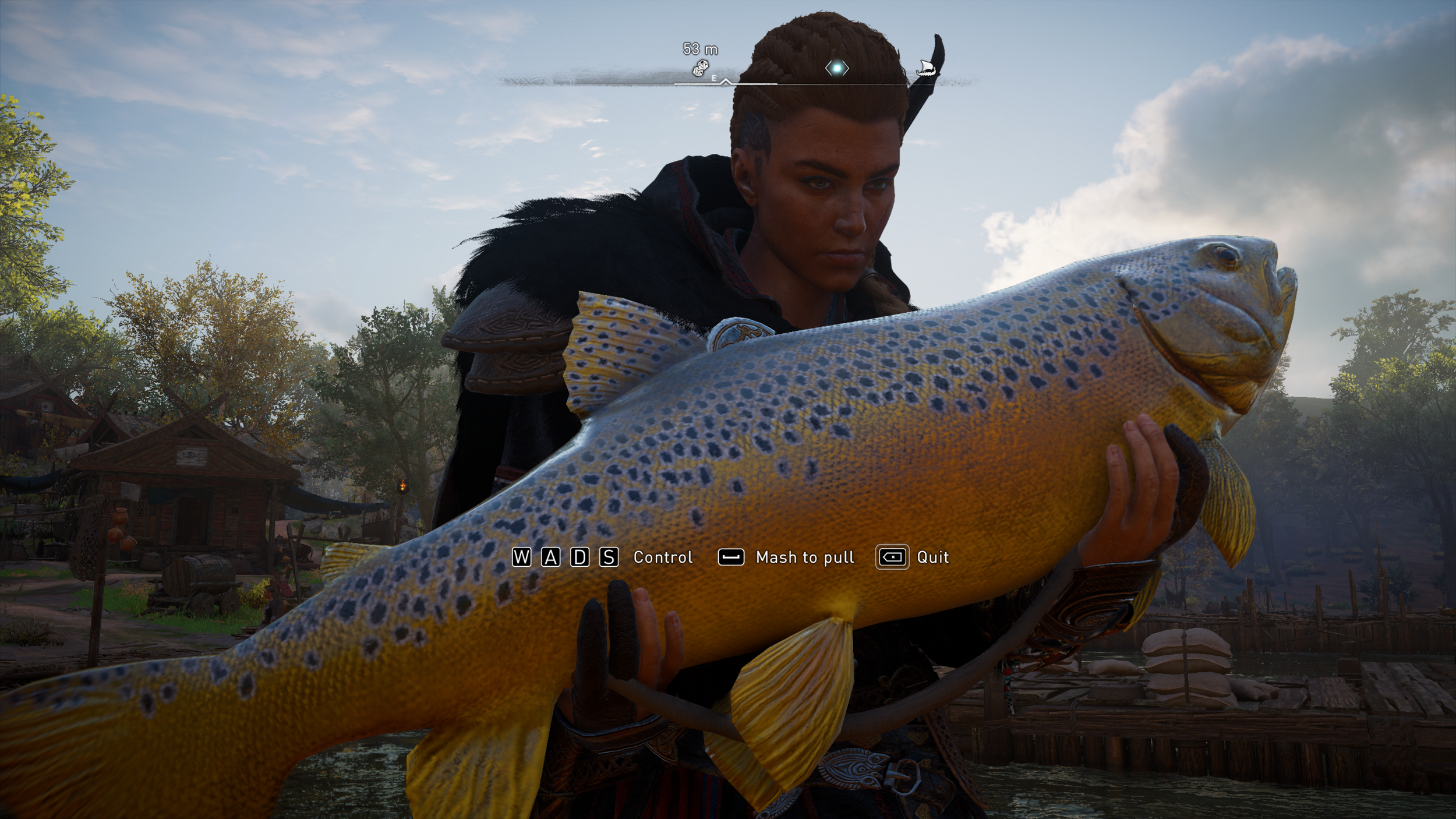
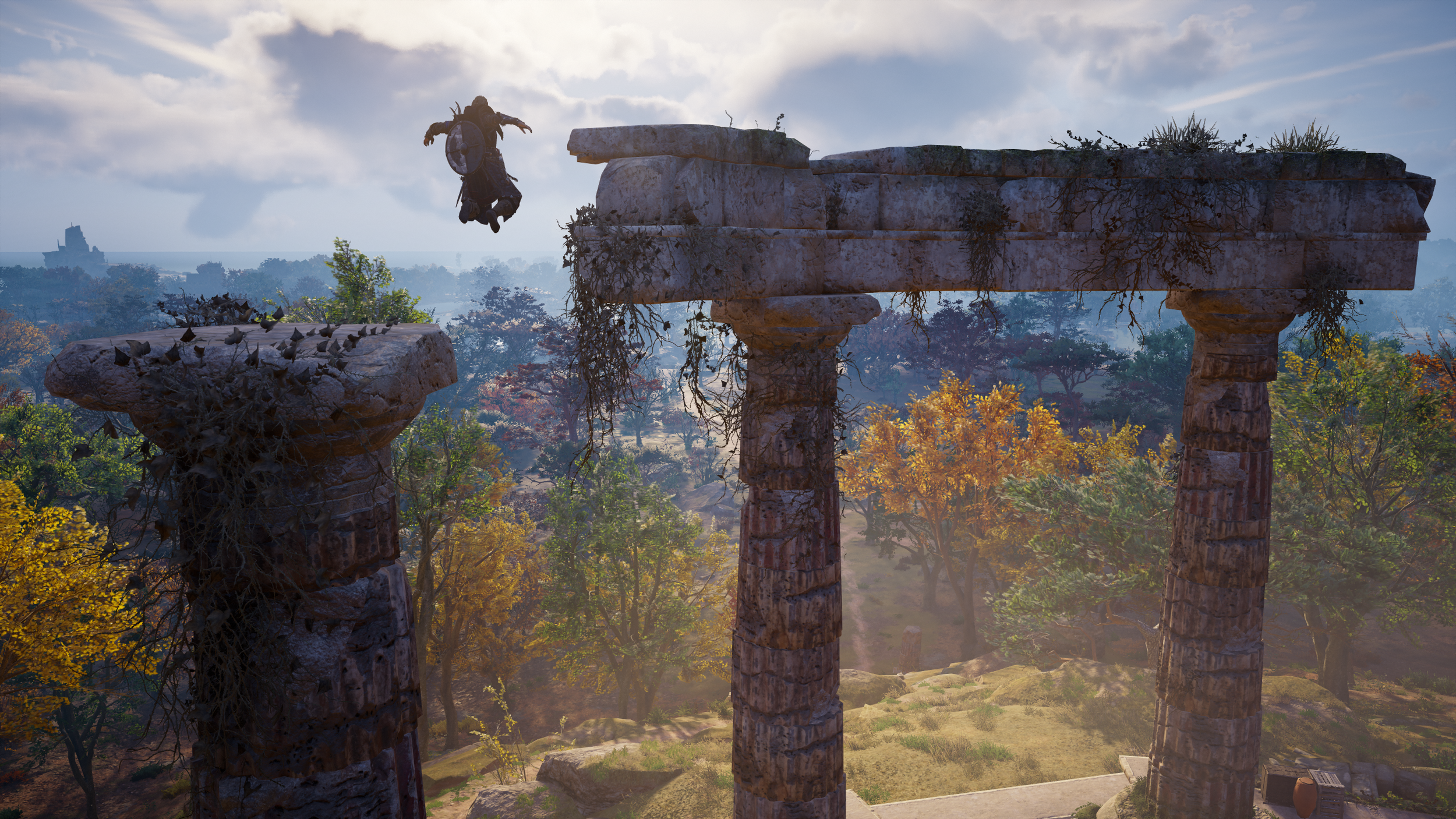
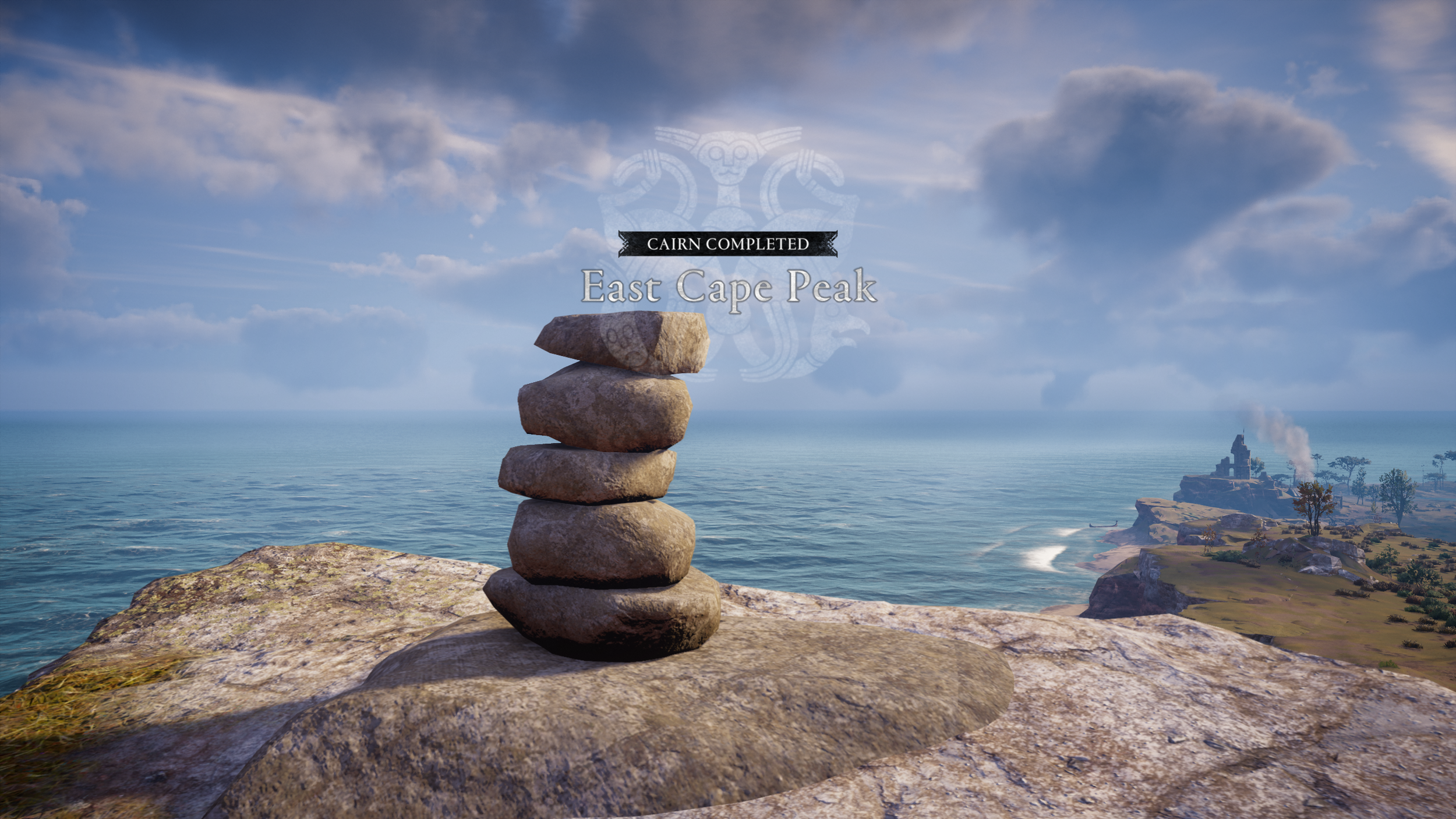
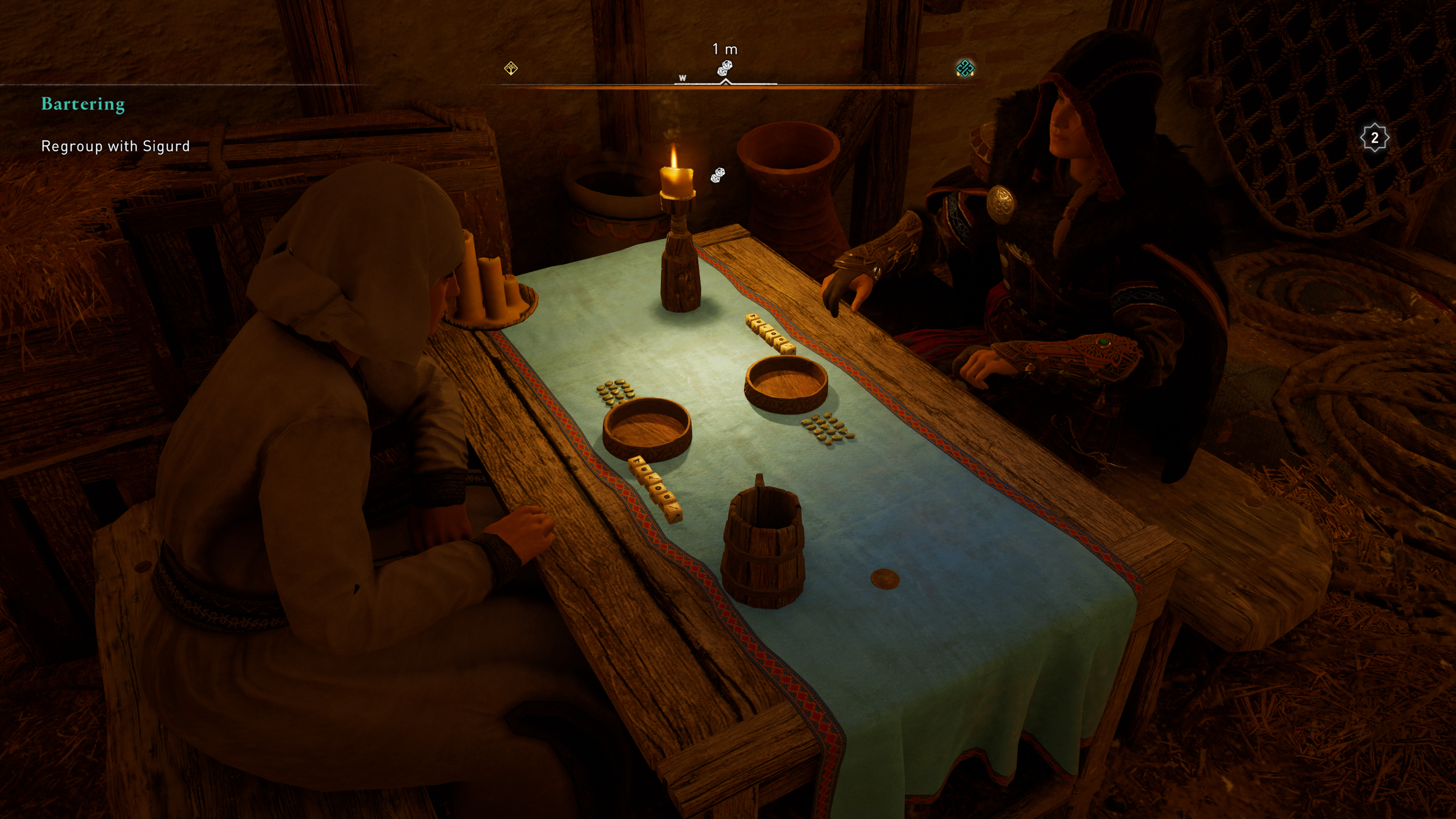
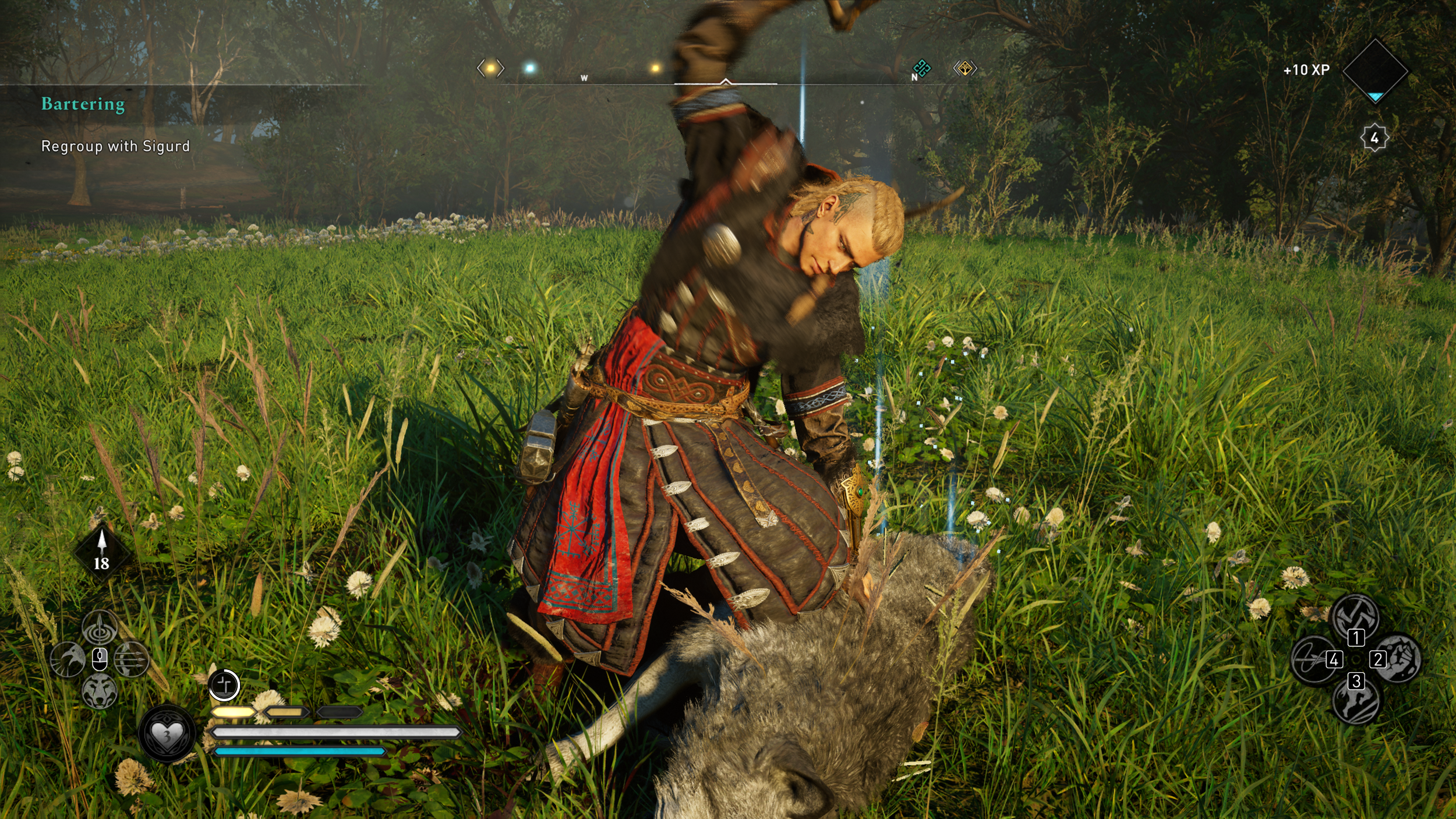
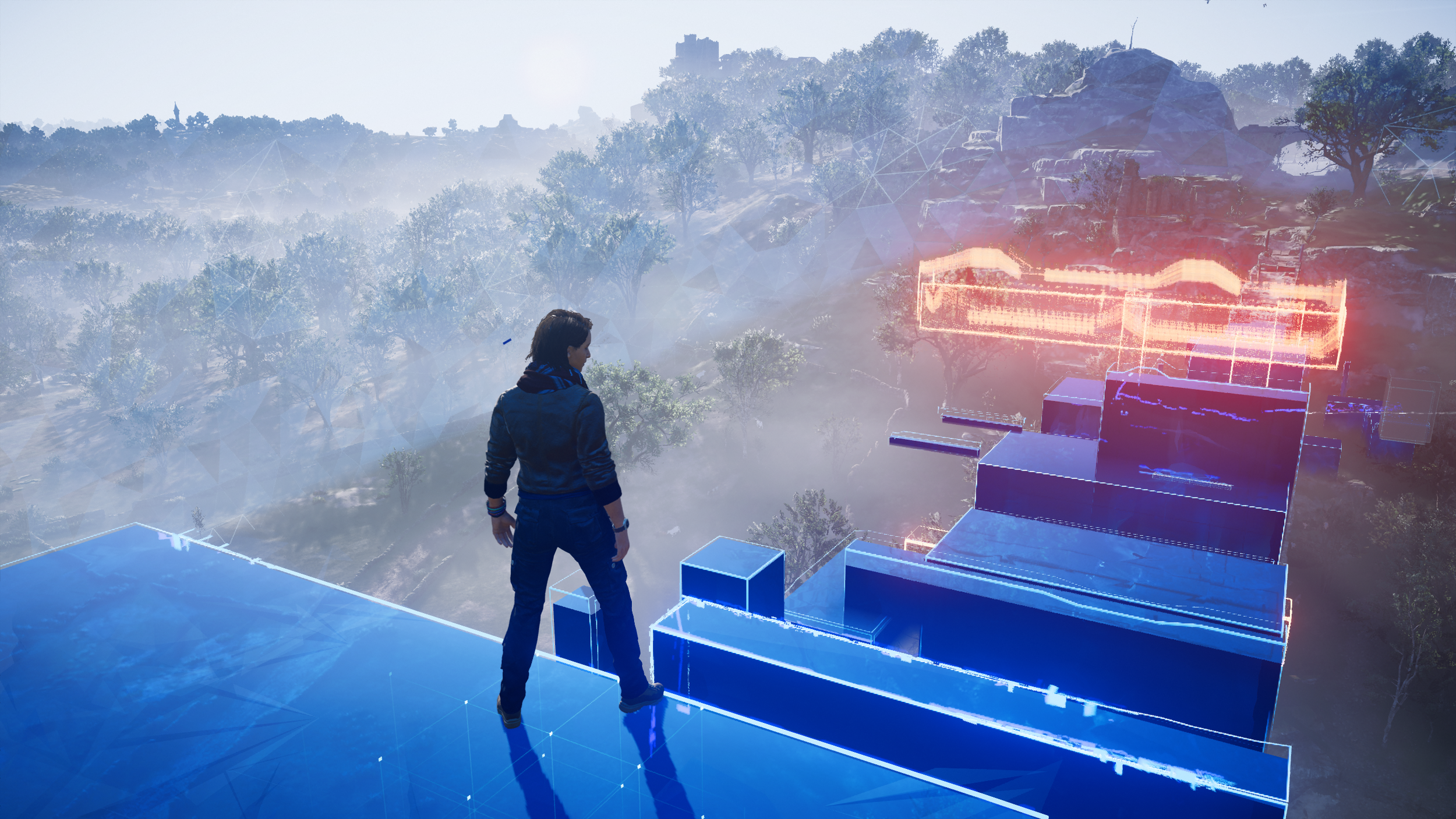
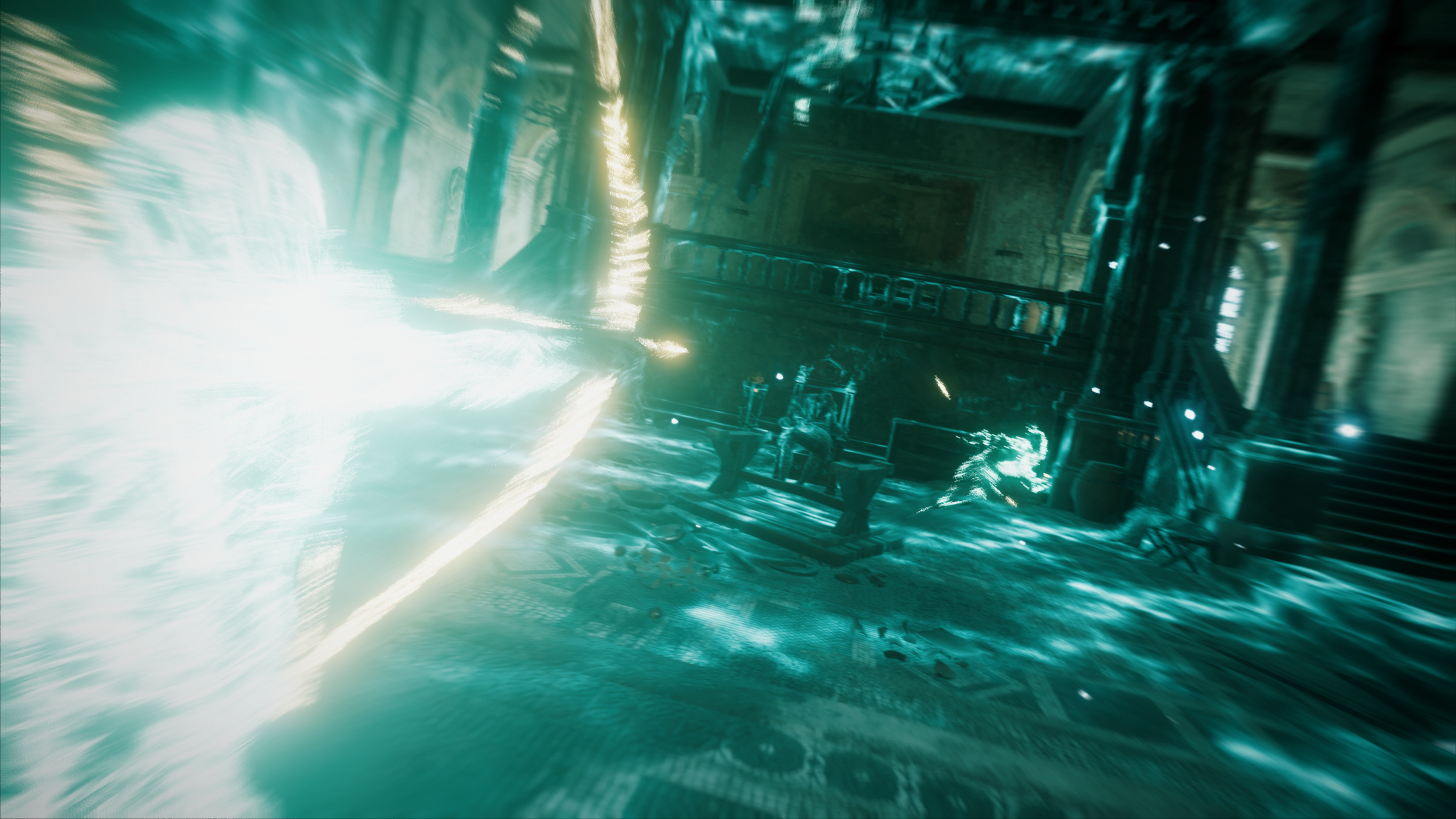
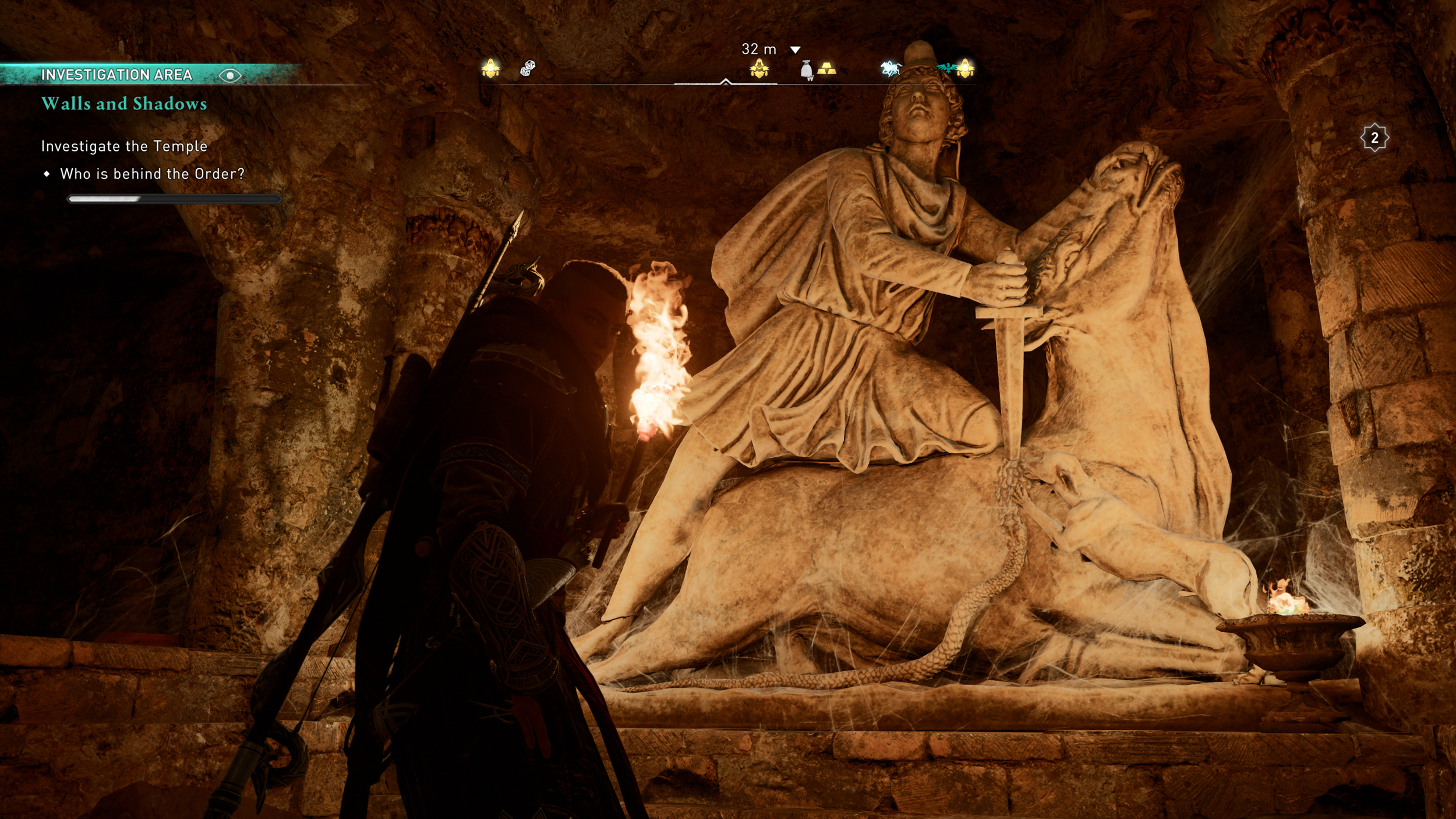
Outside of these main activities, there are tonnes of other thematic activities for you to try your hand at. Mead drinking competitions, cairn building mini-games and many more. How many of these you will partake in is obviously a personal choice but bear in mind that they often reap unexpected rewards. Flighting is kind of Viking rap battle where you must verbally thrash your opponents with quick-witted retorts. What is cool is that as you win these bouts your charisma will increase, which will give you additional dialogue options in conversations. In fact, pretty much everything you do in Valhalla feeds your experience which in turn gives you more skill points.
Charting your Success
The skill tree in Valhalla is based on an elaborate star chart that has three distinct sections, melee, ranged and stealth. Each cluster will offer a selection of stat increases with one actual ability to gain. In my playthrough I headed more down the stealth and ranged tree which gives you access to abilities like double assassination and guided arrow for the predator bow. While health increases do add health to your pool, I did feel that increases in stealth never actually affected how fast I was spotted by guards. Once you start to pour points into the skill tree your power level will rise which takes us to one of the most controversial elements of these new Creed games.
As you mouse over the various regions of England you will be able to see a respective power level. Most of the things you come across in that zone will be at that level, so if you go wandering into higher-level areas (like I did) you will have your arse handed to you on a silver platter. This change from the older games is the one that I hear most people complain about as it feels restrictive and gives you less choice about where you might head. For those traditionalists out there you will be happy to hear there is a way to turn instant kills back on regardless of the target level. However, even with this setting off (as it was intended), there is a skill that allows you to take down higher calibre foes via a small mini-game. One benefit of this level gating allows Ubisoft to gently guide you in the best direction, for say, getting all your basic abilities unlocked. I will concede I don’t mind this system at all as long as people are not having to grind experience like in other games and here it seems we do not.
In general, the pacing of the game is very well balanced with quest control being largely left to the player. It does help that each area is fairly self-contained and thus mitigates that feeling you are not getting anywhere. However, this is a massive game (at least as long as Odyseey) and this will eventually wear some players down. I would just say know what you're getting into, this is a sixty to seventy-hour commitment at the bare minimum. If you do what I do which is 100% sync then you are talking well over a hundred and thirty hours. I have found just doing a bit of everything is the best way forward with a few main quests followed by a few hours of coddiwompling. Another slight issue I found is that sometimes treasure items would be inaccessible due to them being part of a quest chain, but this is not clear and that did waste a good chunk of my time. Also, be wary of clearing out forts when you have quests in the area because on more than one occasion I needed all those newly dead soldiers alive for my quest.
The Hidden Ones
Way back in the first three titles in the series the central theme was the age-old fight between the Assassins and Templars. The sections which were outside of the Animus were far more important to the main story, especially as Desmond's arc concluded. Since that loop has now been closed these sections have felt tacked on and almost irrelevant to the activity inside the Animus. I am very happy to say that in Valhalla the Creed is back and very quickly the story of Eivor gets embroiled with two Assassins who cross her path. As you bump off high ranking Order members more clues will be revealed about the next target and so the web begins to take shape. With each kill you get medallions and handing these into your Assassin Bureau will get you new skills like the Viper shot which poisons targets over time. As you gad around the English countryside you will also be able to uncover hidden Assassin Bureaus which have long since been abandoned. When digging through old letters and clues there is actually a good bit of lore to sink your teeth into if that is your thing as well as a piece of the Assassin armour in each.
With each Creed game comes a new theme and historical era to delve into. There is no denying that Ubisoft has done an incredible job of weaving these time periods into playable game worlds, but this still makes the actual Assassin elements take something of a back seat. Yes, the Assassins are more visible in this new outing but I am more specifically talking about tangible gameplay loops and mechanics. As I have mentioned, there are vestiges from previous games such as crowd melding and distractions, in this new more open world they seem to be there for the sake of it. I believe that Ubisoft needs to take a step back and look at how assassins would act in these more open environments. Maybe we could see a more substantial NPC tracking system like in Watch Dogs Legion? Having the ability to track a specific person through their schedule in order to gain access to a large fort would fit so well here. The cover system is also in desperate need of an overhaul which could also include some new ways to engage with large groups of enemies. Where ever we go for the next Assassins Creed game, whether that be the Wild West or Feudal China, I hope the series nourishes the neglected assassination mechanics.
Time Capsule
It is hard to believe this series started thirteen years ago and so much in the games industry has changed in that time. After leaving Evie and Jacob Frye we said goodbye to the more intimate traversal around just one city and cast the net into a far wider open world. The winds of change brought some good and bad additions to the series and now this third ‘new era’ Creed game is here. You can’t fault Ubisoft on their ambition, Old Egypt, Ancient Greece and now the mucky English history around the 8th and 9th century. These are all utterly massive periods of history and like the prior two titles: the developers have not skimped on content.
The sheer amount of research that goes into creating an Assassins Creed game must be incredible. As someone who loves history, seeing these time periods being brought back to life with so much accuracy and care is by far my favourite aspect of the series. This attention to detail was so great that in Assassins Creed Origins the team were able to release a discovery mode in which the world they have painstakingly fashioned from digital clay becomes the backbone for a living museum. My son has actually used both Origins and Odyssey in this way to help with his school projects for that year. In Valhalla there is, once again, so much infrastructure here it would be a crying shame not to release a discovery mode that delves into the doings of old England.
I remember when Origins released I spent just as much time marvelling at the details of the world as I did playing the game. Workers making bricks from clay, actual water irrigation and the wonderful way wildlife had been handled. While old England can’t really compete with the splendour of the pyramids, we have a distinctly different but no less evocative digital history book to admire. It was a given that we see the iconic Stone Henge and the White Cliffs of Dover, but what about actually being able to find and use the legendary weapon of King Arthur himself: Excalibur. Indeed, many of the places you see in the game I have visited their real-life counterparts at some point in my life.
Is it PC?
After initially setting up my graphics to high and ultra a driver patch sneakily reset them to medium and low. So I spent the entire Norway section and a few hours of England wondering why friends were raving about these graphics (and you call yourself a real PC gamer they said). Thankfully I discovered my little faux pas and cranked everything back to ultra with some surprising results. Valhalla is certainly one of, if not the, best looking open-world game to date. Which is why I was blown away by how well it ran on my ageing system, getting an average FPS of 53 on a 2070 Super running at 1440p. This was refreshing after being limited to around 30 FPS on Watch Dogs Legion (but to be fair there is a lot more going on in that game.) There are a good amount of visual bugs as well including limbs forgetting how to work, flashing textures and armour not fitting properly. I have also seen a fair amount of crashes and even fallen through the floor a few times which didn’t end well for Eivor. However, none of these bugs occurred very often and I would say this is one of the more stable Creed games I have played.
Playing PC games with a controller is becoming far more popular these days which is partly due to the lines between PC and console gaming getting ever more blurred. If you are more partial to a controller then everything works fine here, the controls are snappy and well-implemented for menus etc. As with every Creed game I always play with mouse and keyboard because it allows you to spin your view on a dime and also have a far tighter degree of control when climbing. The only downside to playing in this way is the lack of analogue sticks for walking speed. In sections where you must walk to avoid detection, Eivor’s set walking speed is like watching a snail do yoga. I do wish they would either add some urgency to this walking or give us a few variations to the pace. You can just swap to a controller for these sections of course, but for some weird reason (same with Legion) there is a two to three-second freeze when it switches. My gut feeling is that this is an issue with the new Ubisoft game launcher.
Sound design is overall good with some issues here and there. Environmental sound is, like all these games, excellent with a broad range of effects depending on the time of day or current state of the weather. You can also quickly deduce which large animal is going to attack you before you see it which is a good sign. The voice acting is occasionally flat and lifeless, especially when dealing with minor NPCs. However, the main set of characters are very well acted and despite my initial worries, the voice actor for Eivor did a fantastic job with a huge emotional range. I’m no expert on how English people would have sounded back in these savage times but as someone who has lived in northern England my whole life, the accents sound pretty good to me. The music is where Valhalla really excels as it is brilliant. As you play the score seems to be really paying attention to what you are doing, from melancholic as you pass through a dark woodland in the rain to the furious beat as you storm a coastal fortress. I also love the Viking songs and tales that will be told on your Longboat journeys, I just wish they not as easily interrupted by events onshore.
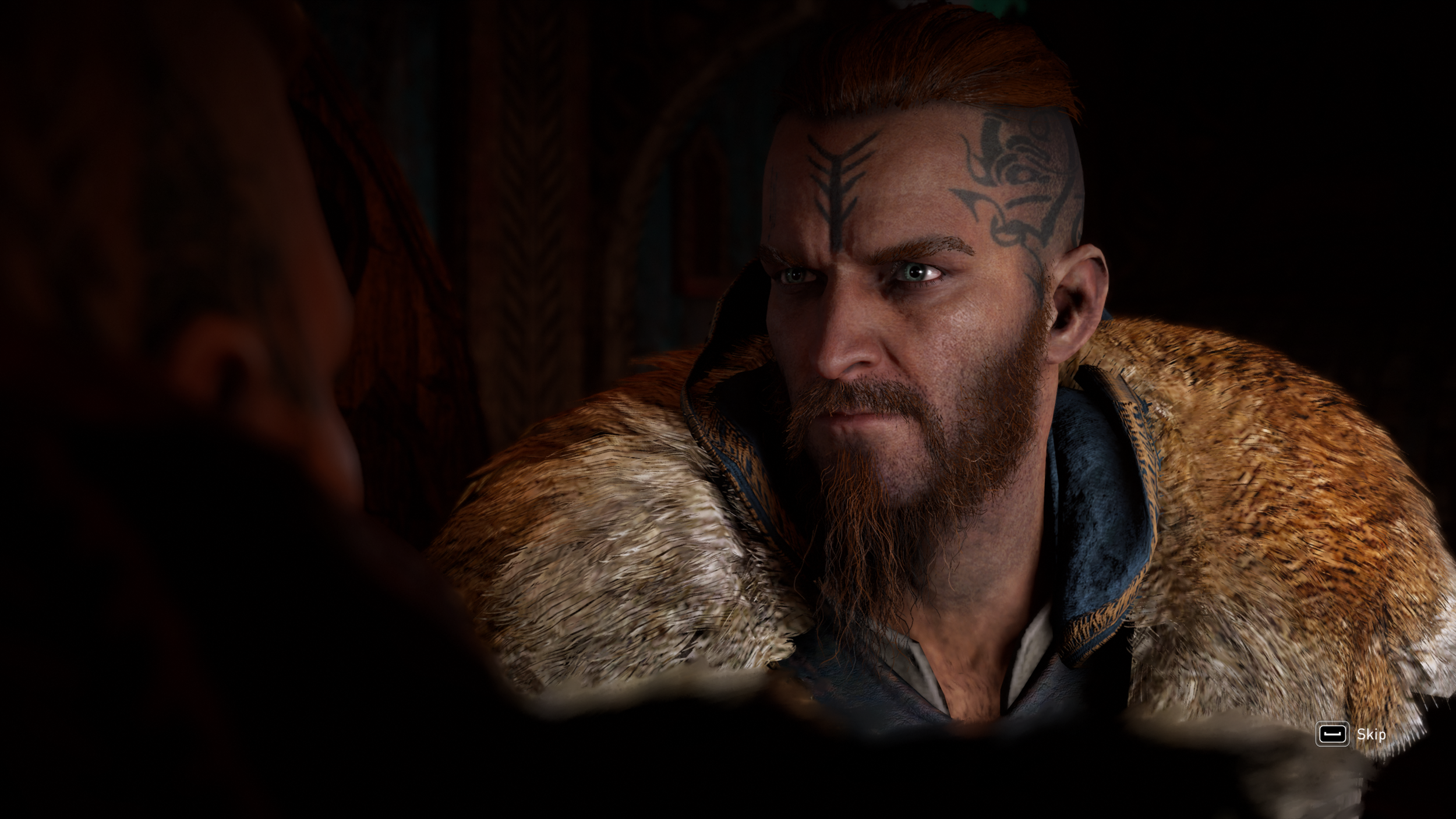
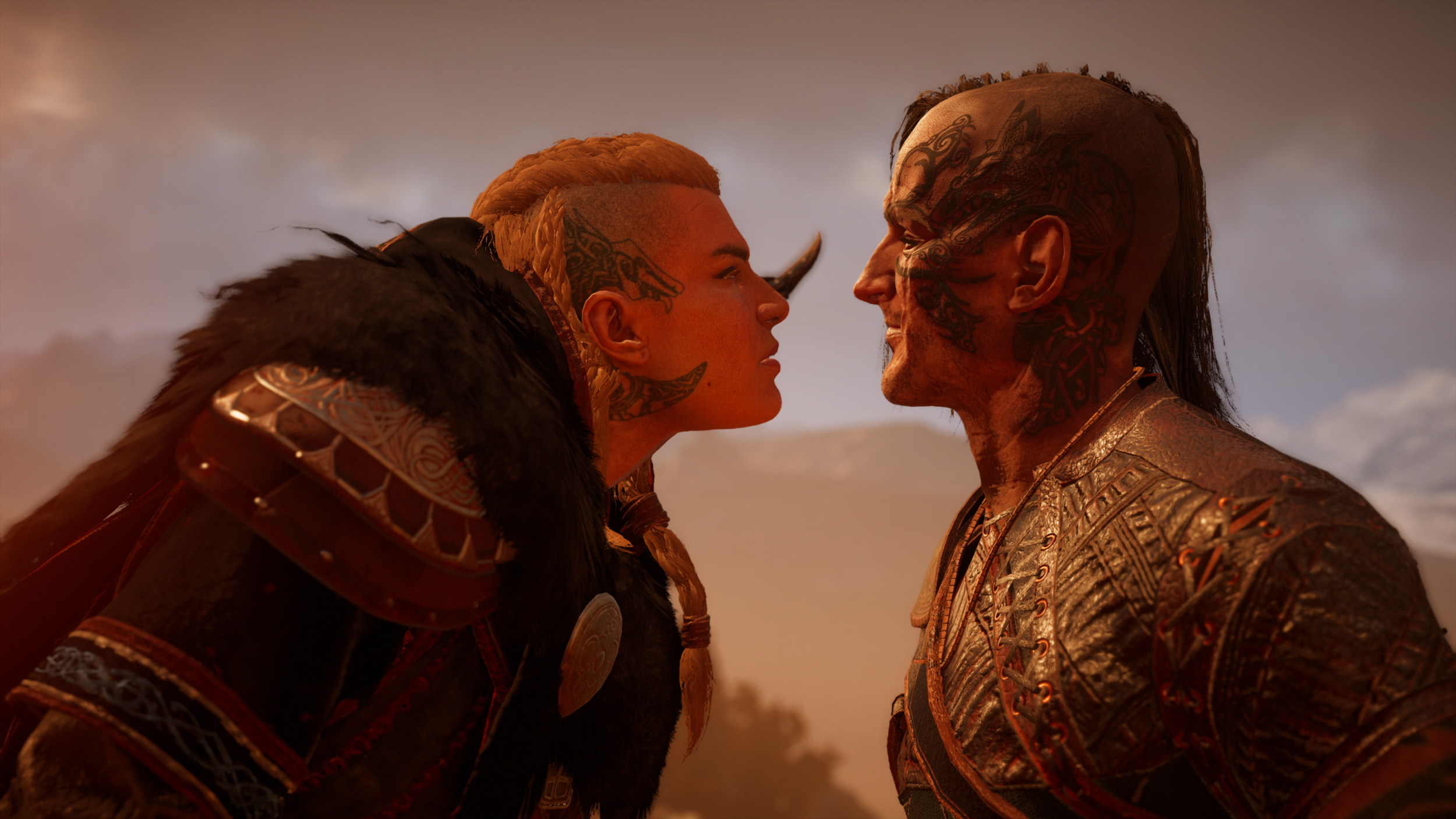
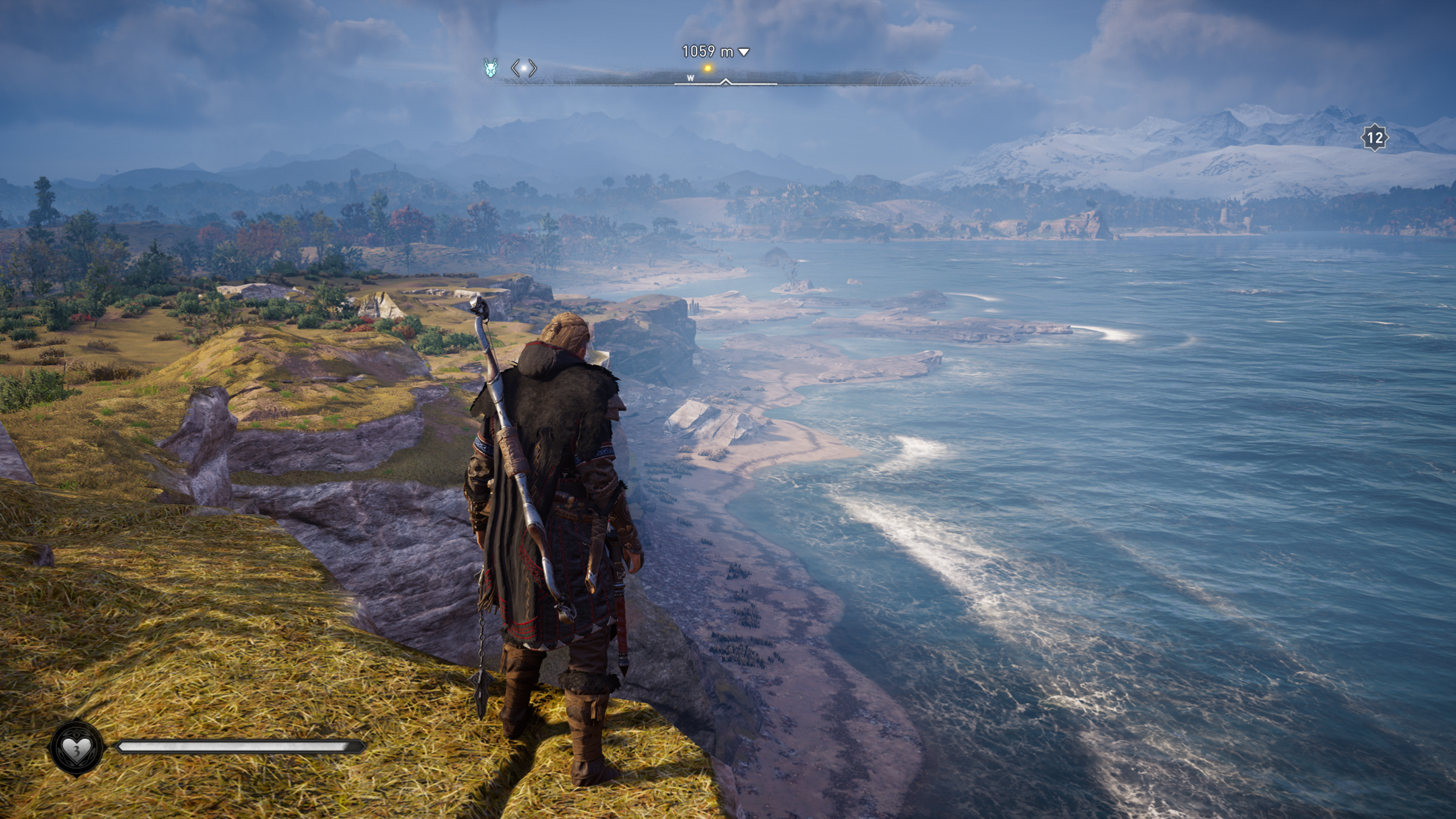
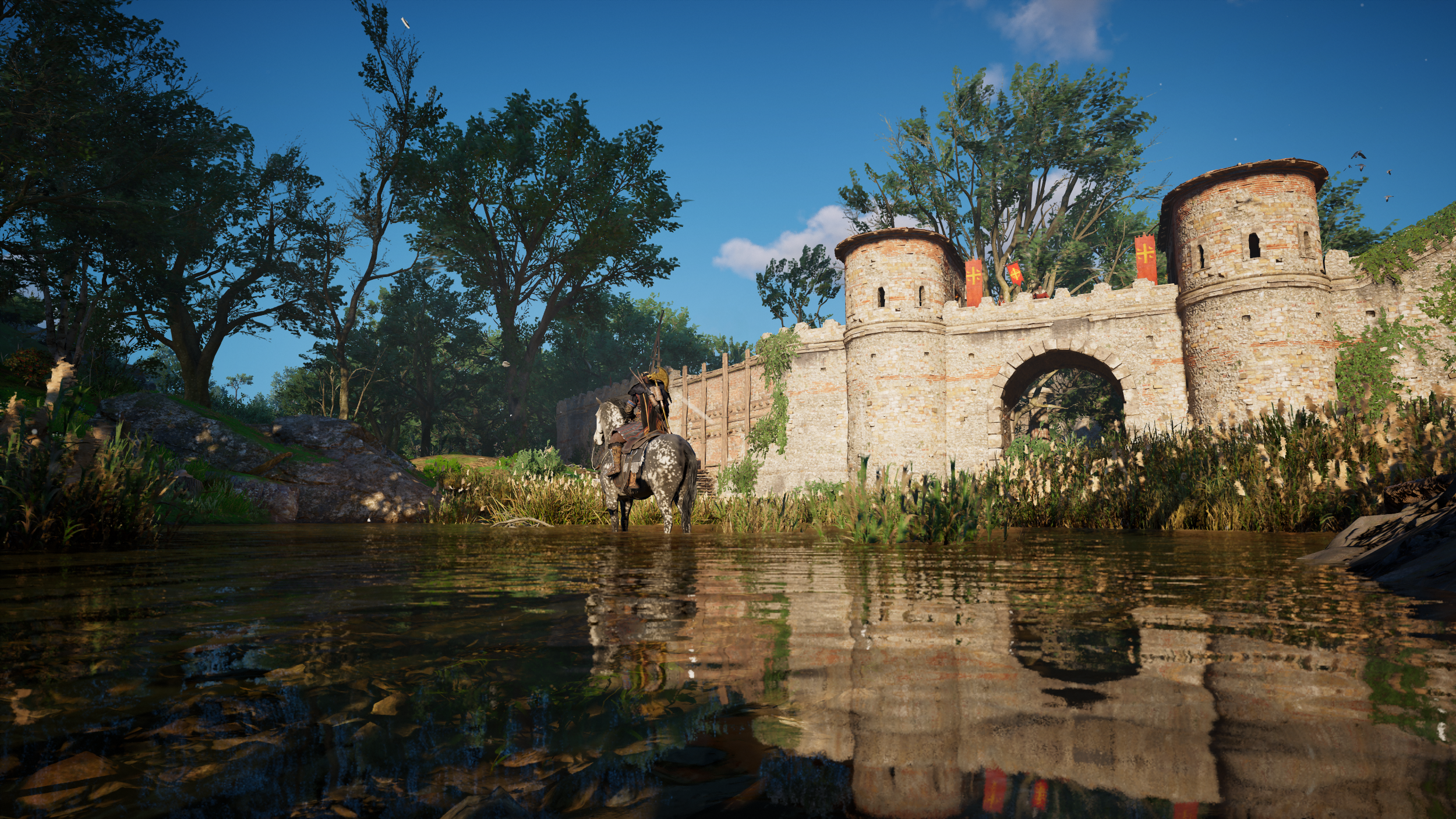
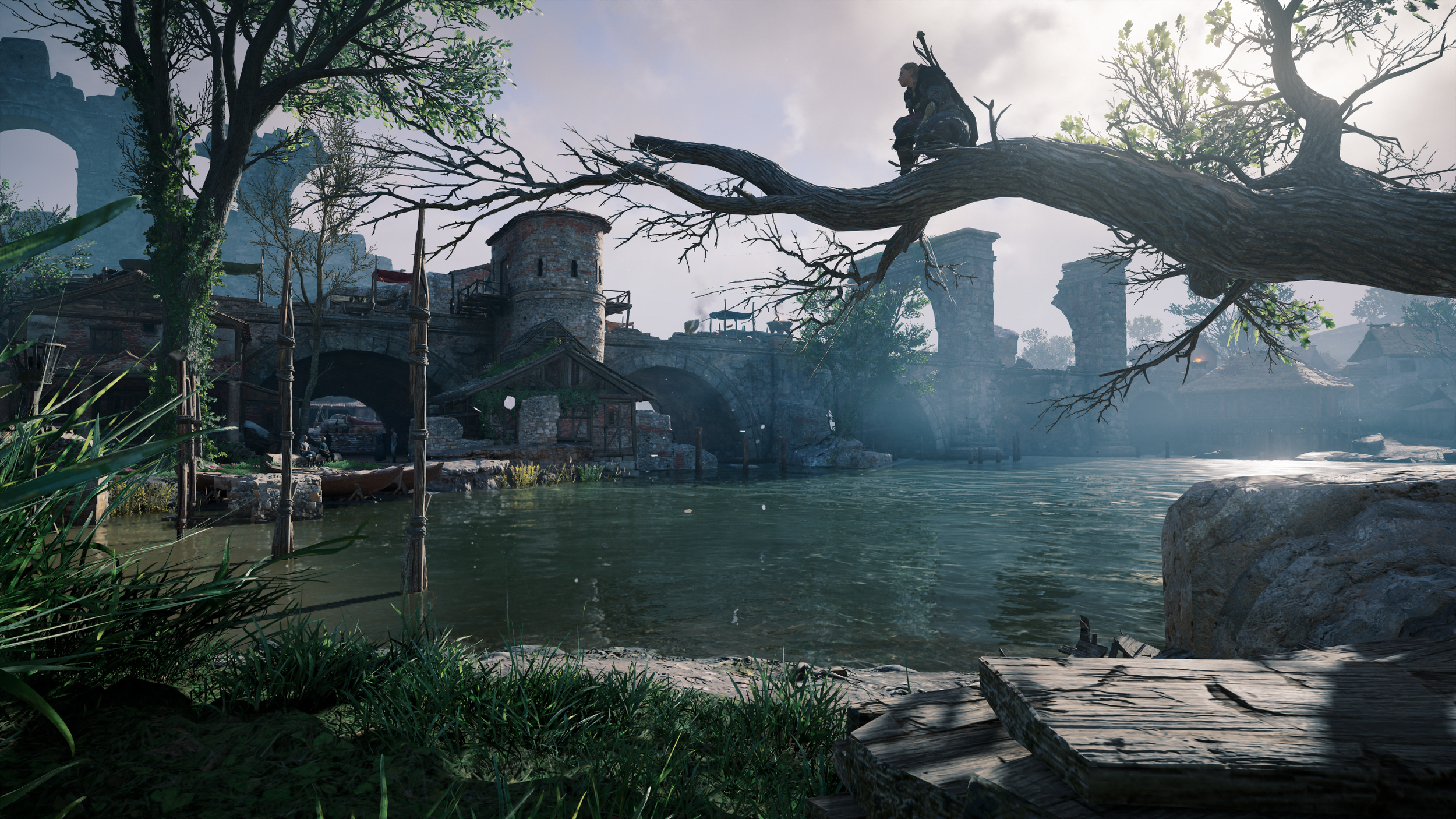
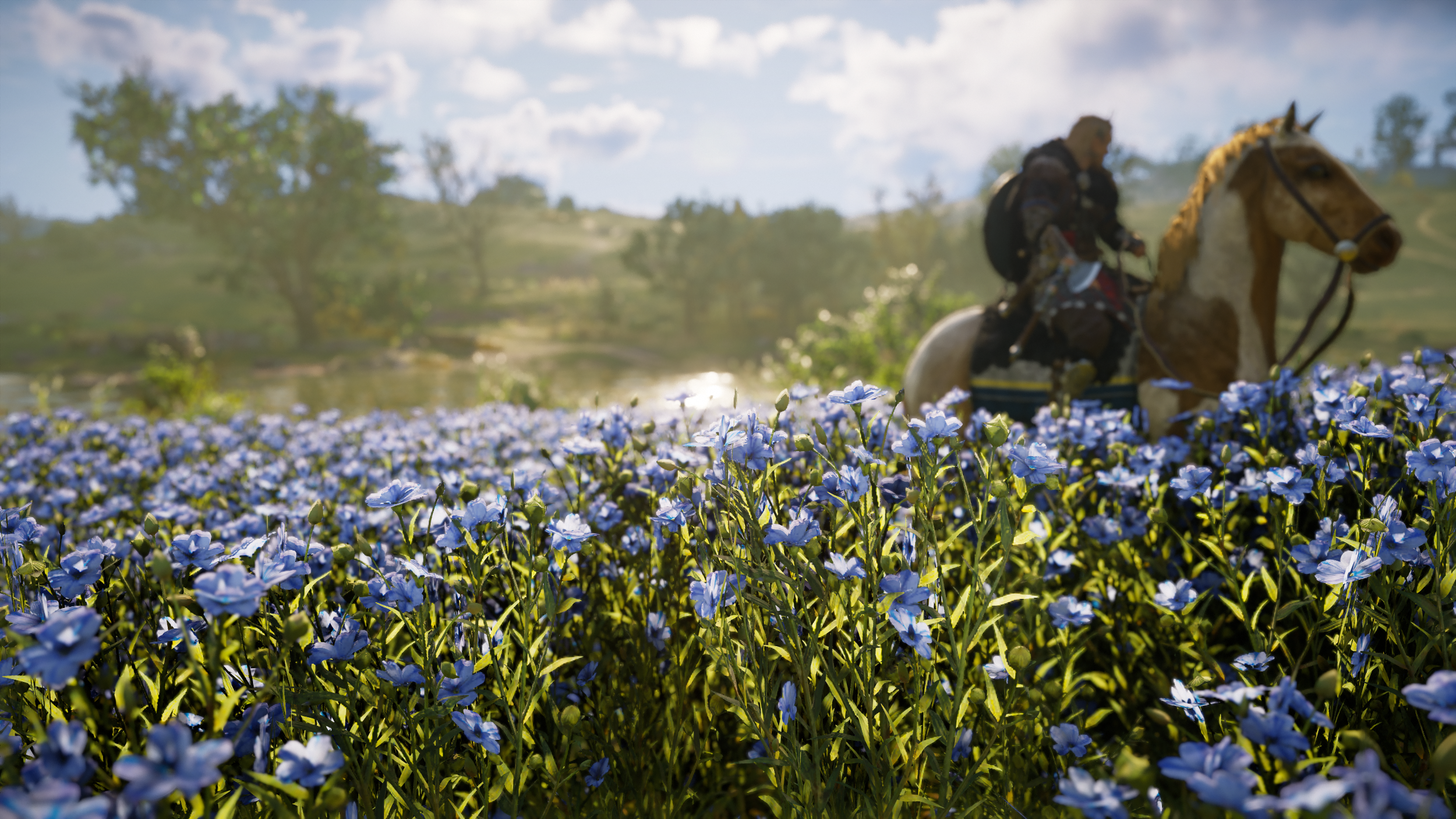
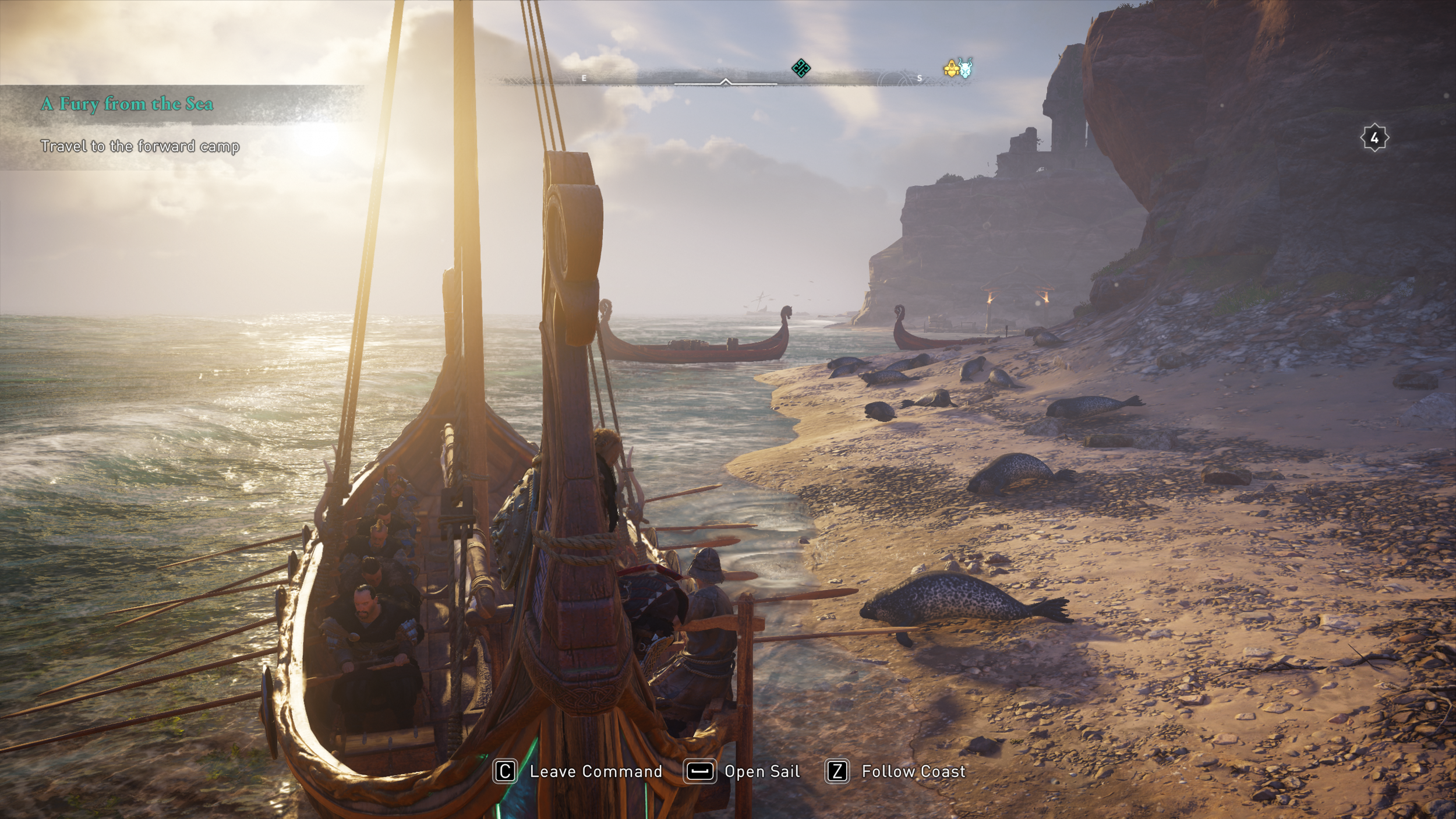
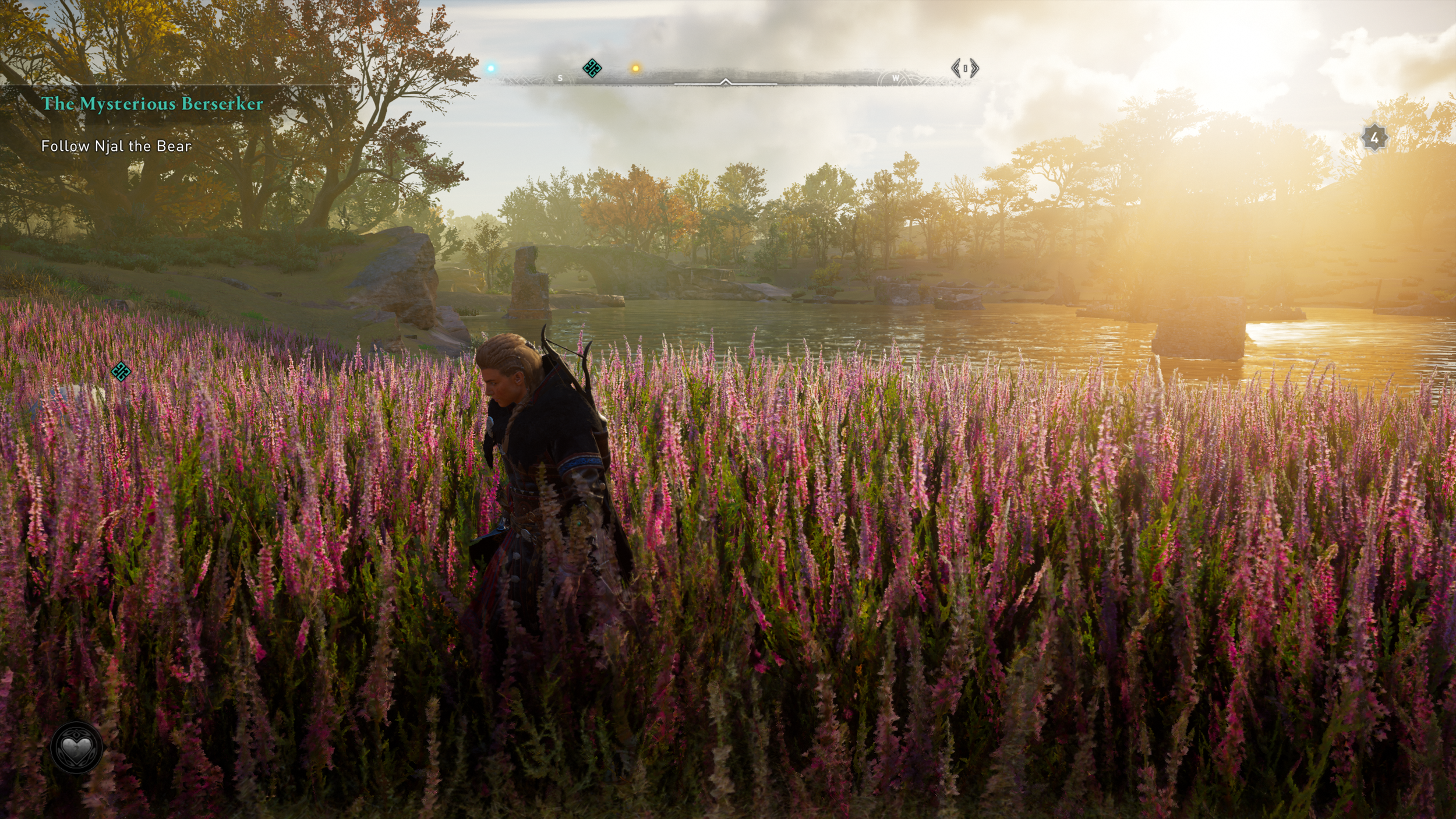

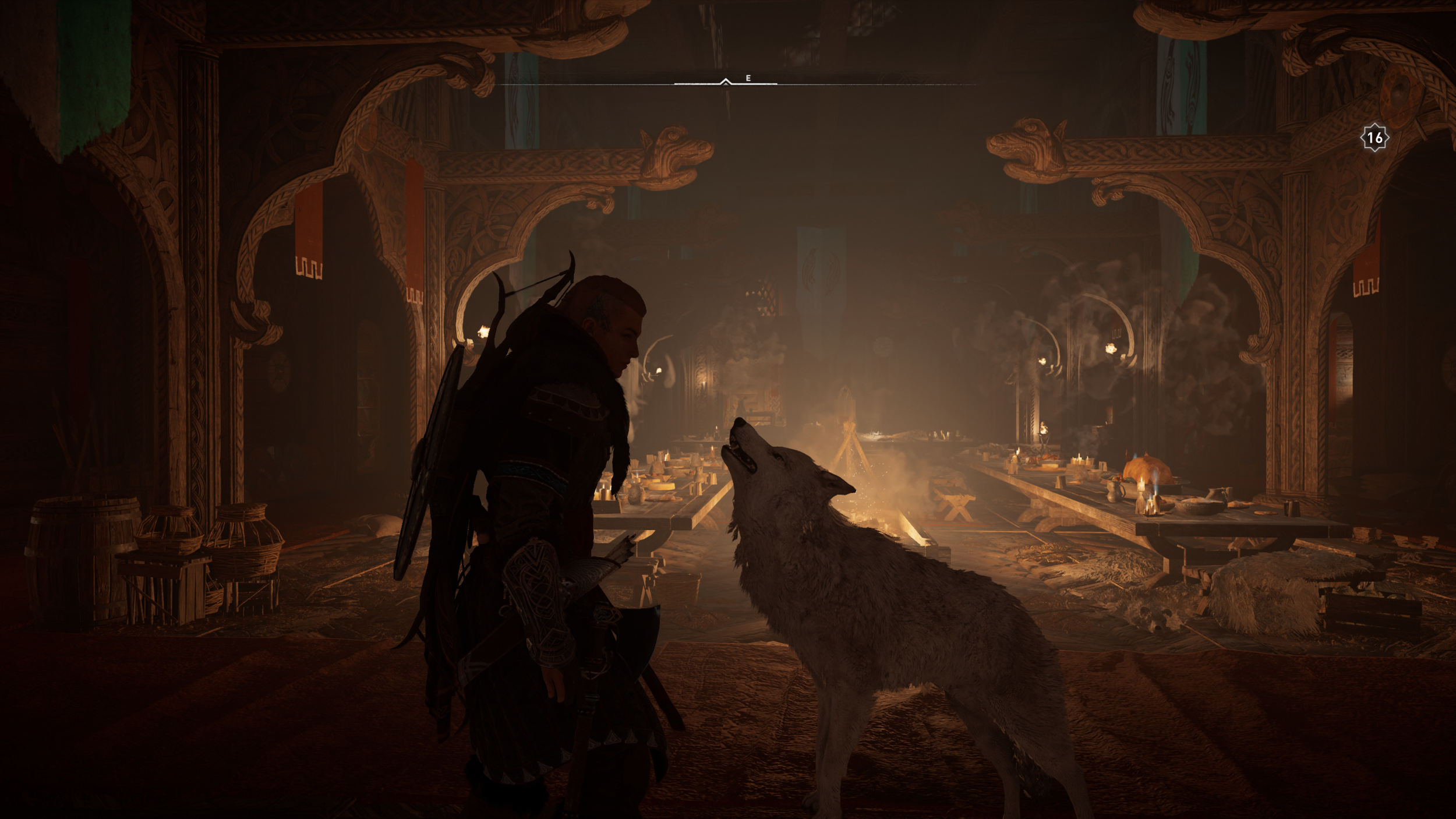
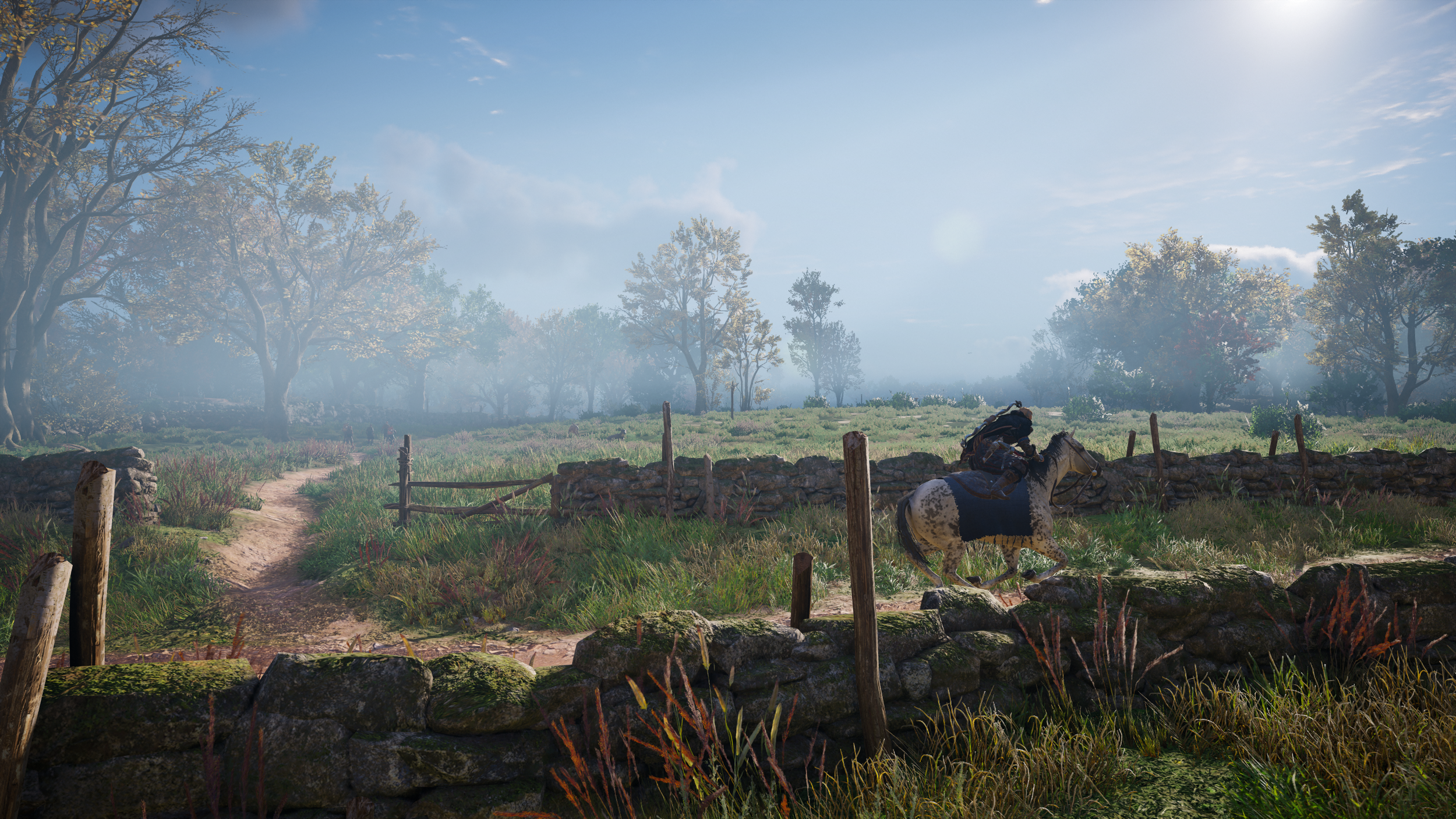
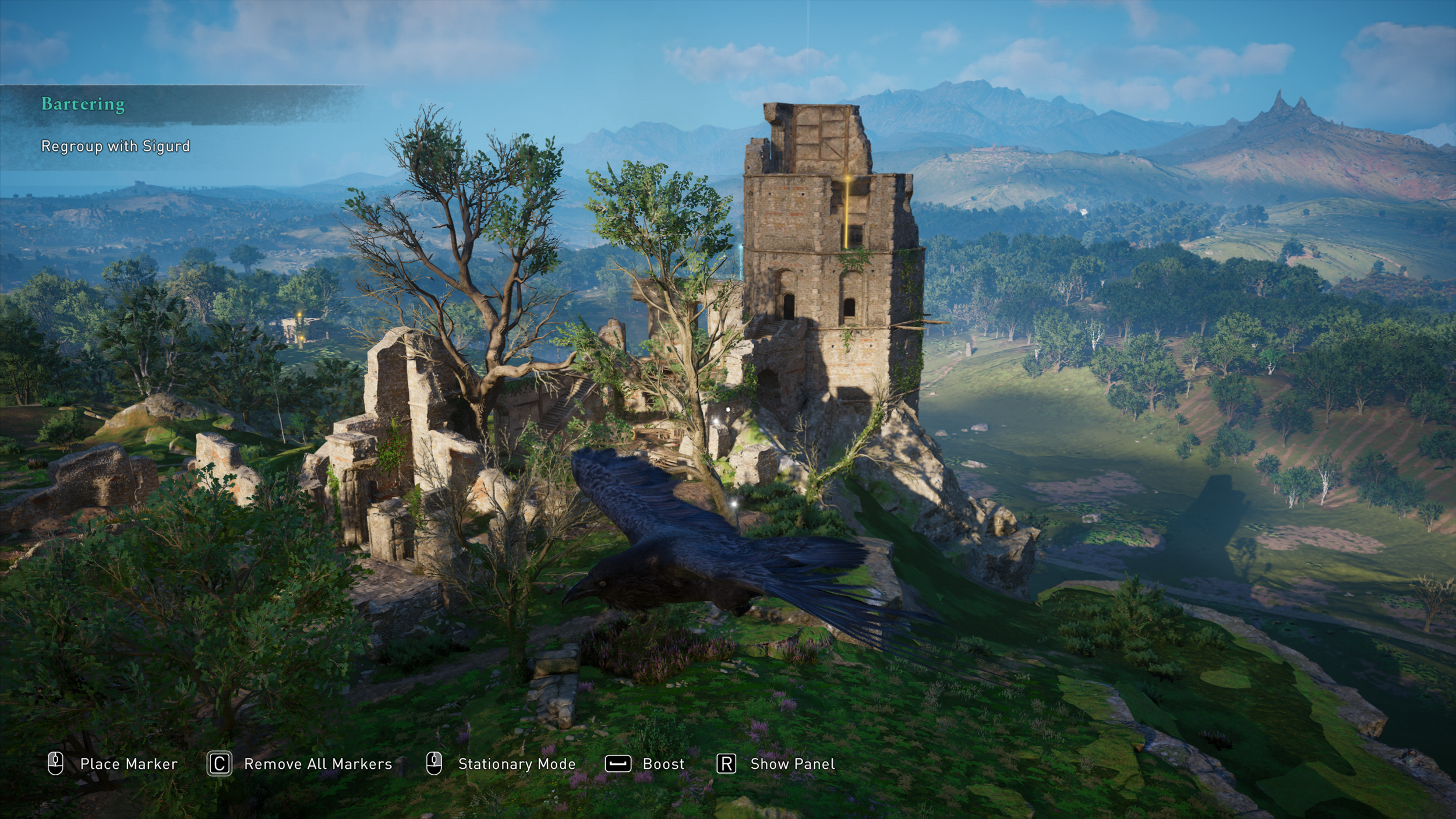
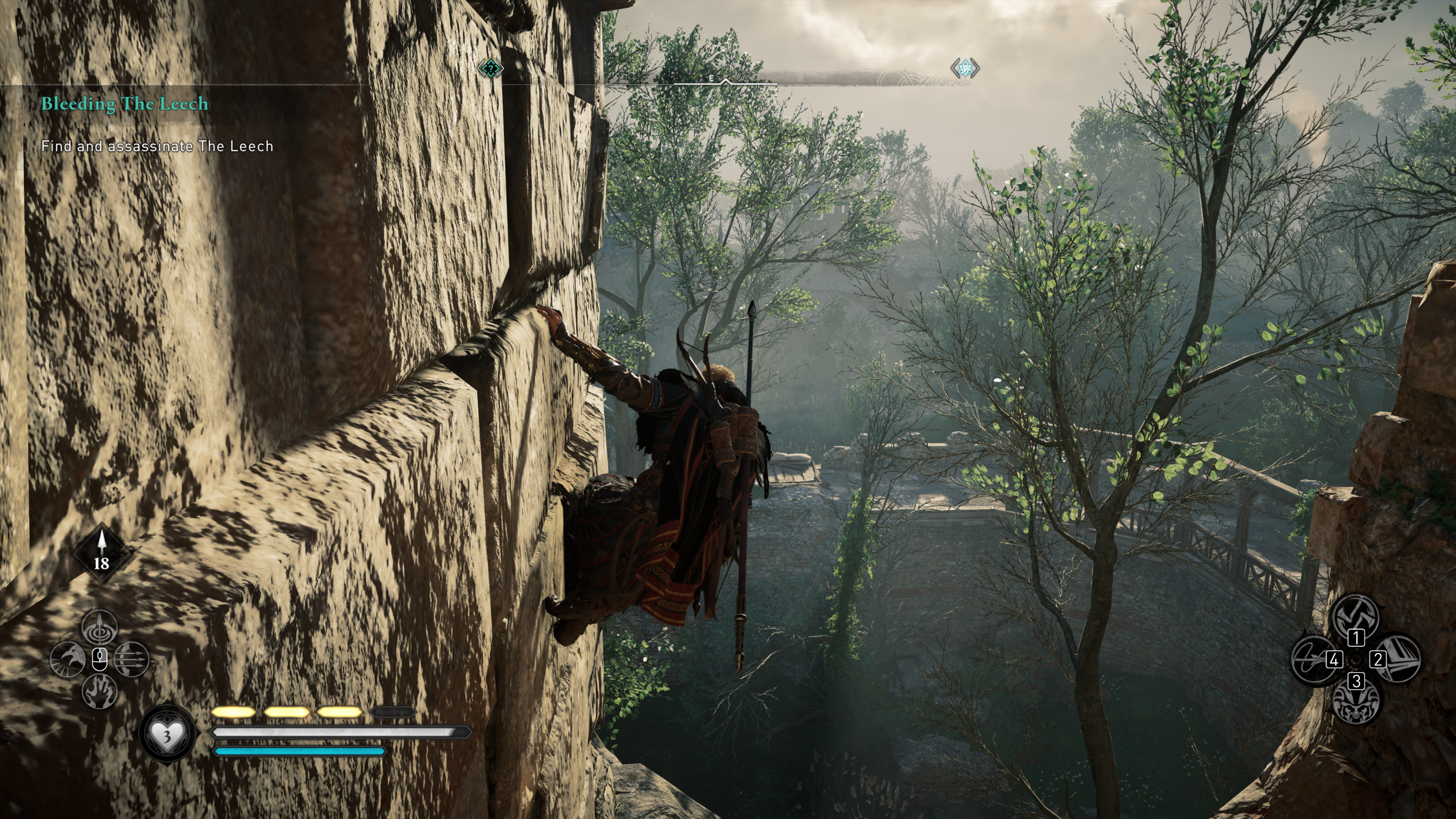
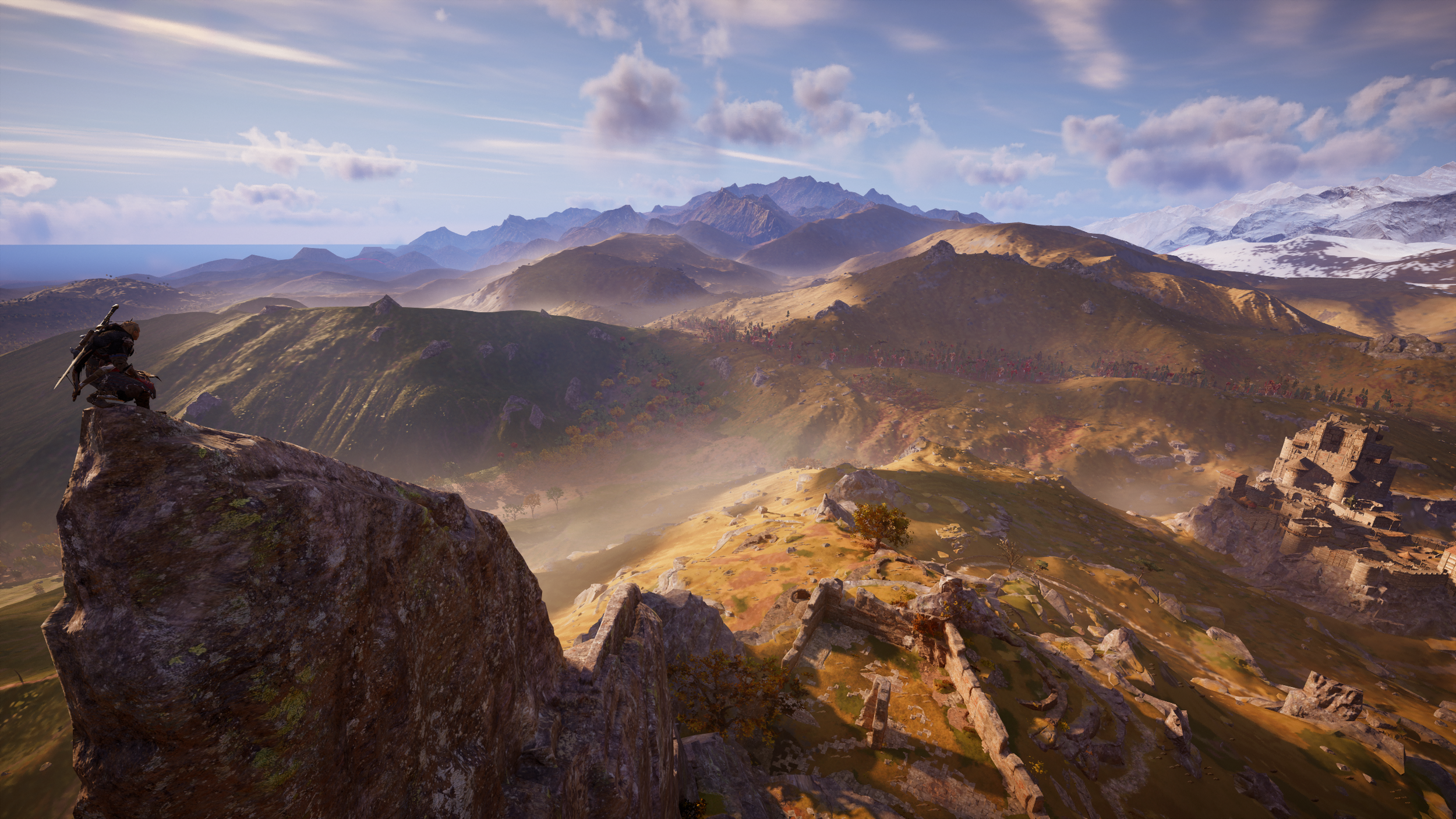
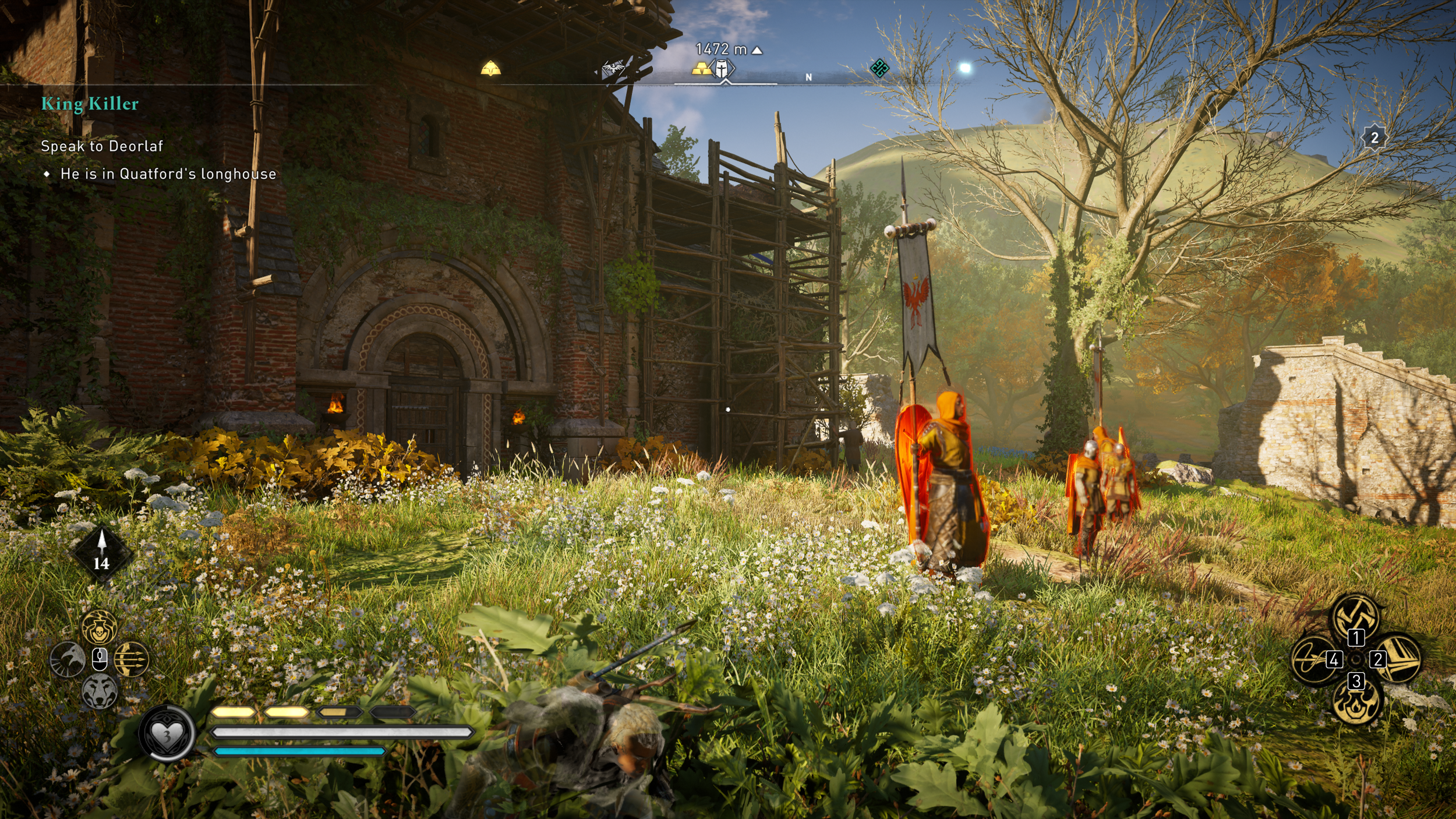

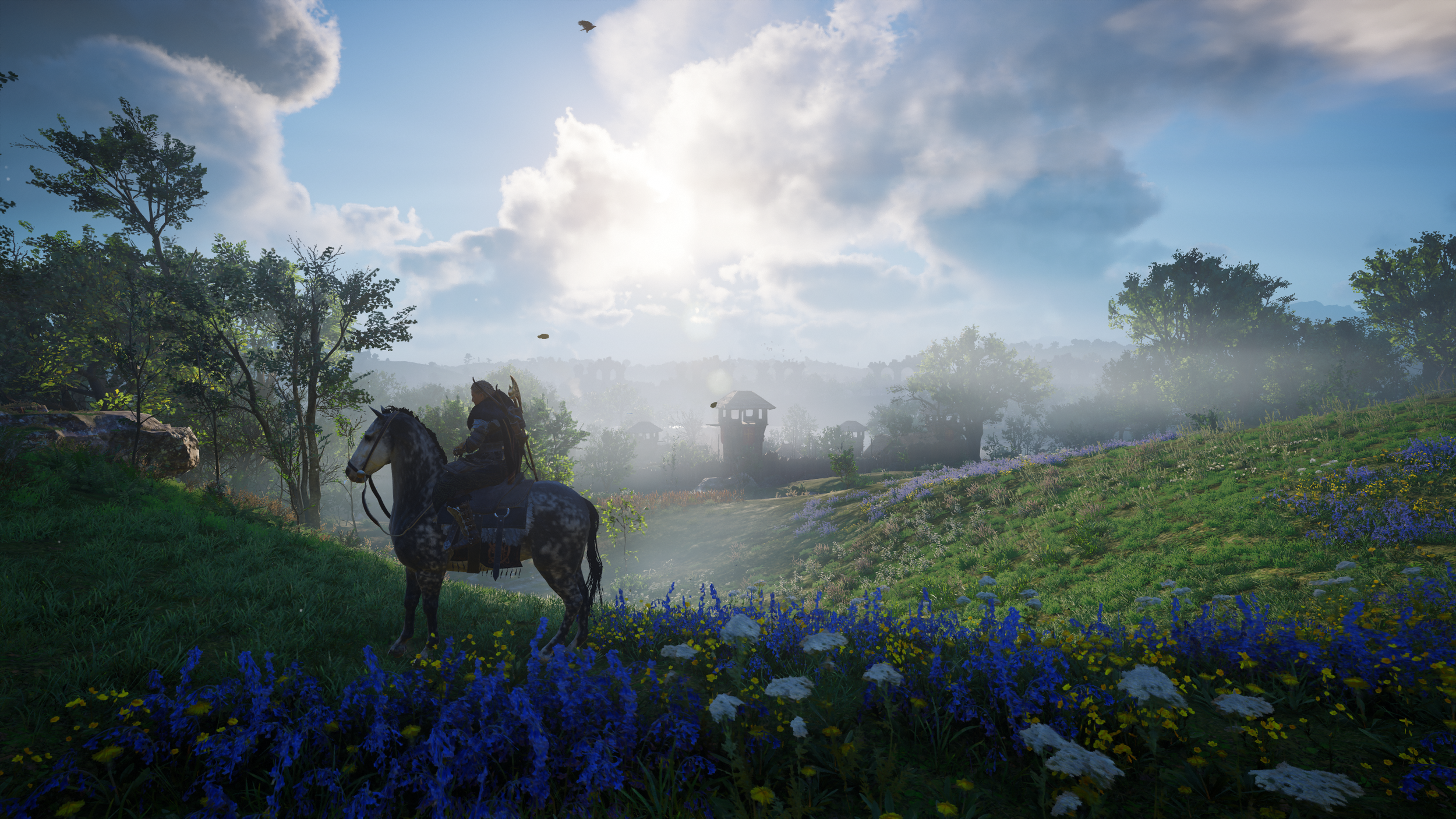
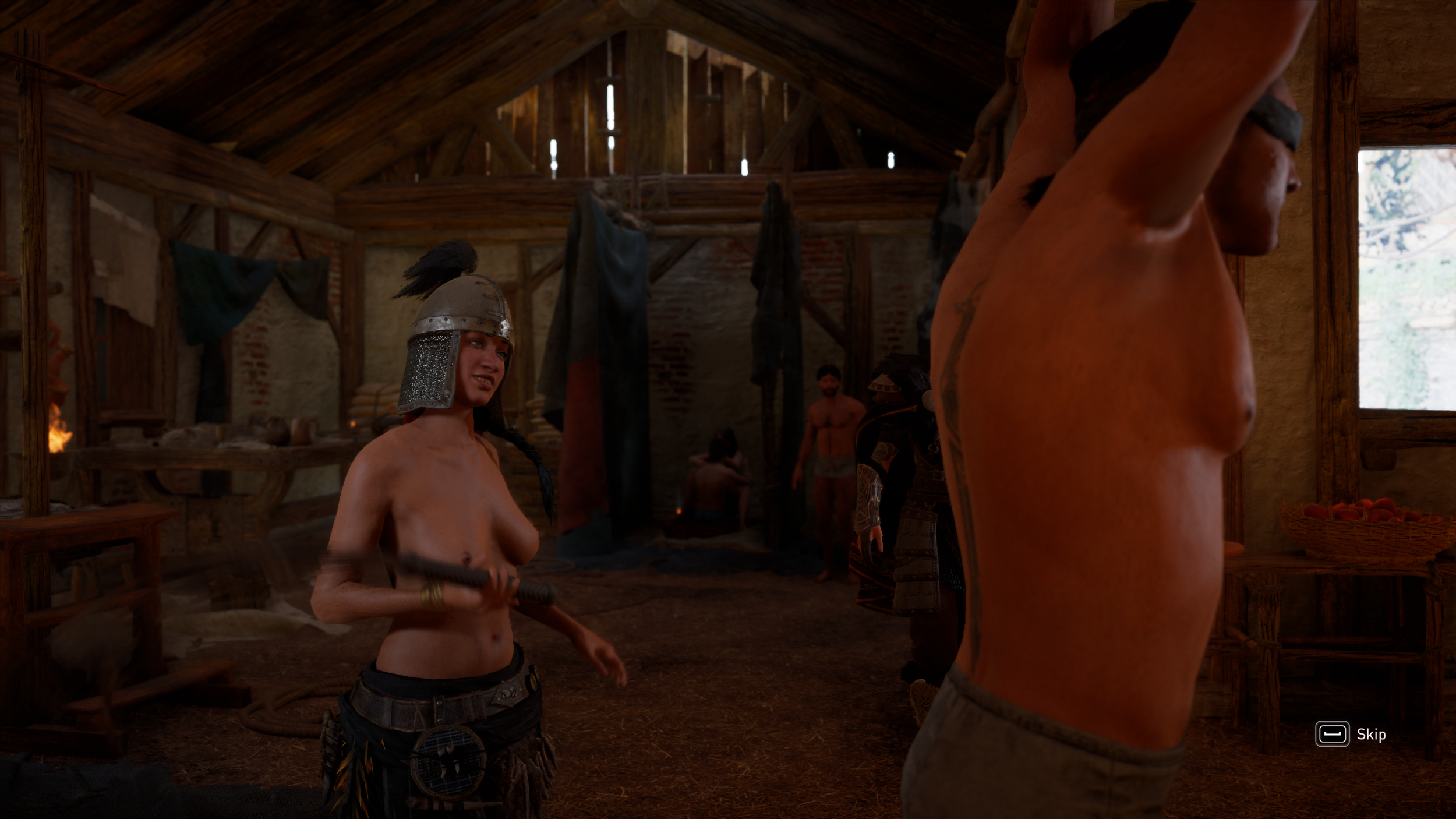
Conclusion
There are two distinct eras of Assassins Creed, the first ending with Syndicate. These games were focused on one or more tightly packed cities which would be exquisitely recreated. In Unity, we saw a huge leap (not even sorry) with both parkour moves available to the player and the way it was displayed on screen. Downward traversal was now a thing and not a case of simply leaping off the safest platform. Now on our third game of this second era, we are seeing these refinements leave the series because they are no longer required. Ergo, how much you enjoy Valhalla could rest on which era of Assassins Creed you prefer. It’s not that the two preferences are mutually exclusive and if I’m honest I love aspects from both. However, if I was pinned down and considering all the great things Valhalla does I would say it is the best in the series to date.
There are so many other elements to this game that I haven’t really been able to cover properly just for the sake of ending the review before I retire. The fact you can collect fireflies and release them into your settlement. The way you can adopt a wolf that will then attack enemies for you in combat and the way you can get a cat that sleeps below your feet when you are sailing your longboat. These small touches show the developers are not just taking the same blueprint from the last game and retrofitting it with a new theme. This game is an exquisitely curated treasure trove of Viking lore and English history, brought to life by some truly remarkable world-building. I’d say the only other contentious aspect of the game’s design is its length which has left some reviewers with a bitter taste. Assassins Creed games have never been a casual undertaking and if you have played previous instalments you will know this all too well. However, I believe that where Odyssey failed to make those many extra hours stand out, Valhalla does more than enough to make this epic journey worth every second.
